——— S ———
S – (1) Side. The side component of an Mid-Side (M-S) stereo signal. (2) Sliding loudness. (3) The abbreviation for siemens.
s – the standard abbreviation for seconds, although sec is often used.
SABC – South African Broadcasting Corporation. The state-owned broadcasting system in South Africa, providing radio and television broadcasts to the general public. Also known as Suid-Afrikaanse Uitsaaikorporasie (SAUK).
sabin – a unit used to measure sound absorption. Sabins can be in either imperial or metric units. One sabin is the absorption of one square foot of 100% absorbing material. One metric sabin is the absorption of one square meter of 100% absorbing material. Named for Wallace Clement Sabine, a pioneer in architectural acoustics.
Sabine formula – a formula developed by Wallace Clement Sabine for estimating reverberation times. The formula is RT60 = k × V/Se where k = k = (24 × ln 10)/C20 = 0.16 s/m or 0.049 s/ft, V is the volume of the enclosed space (in m3 or ft3, and Se is the effective absorbing area (in m2 or ft2), and C20 = speed of sound at 20°C = 343 m/s or 1126 ft/s. See Modeling Reverberation Time and Calculating Reverberation Time for more details. Also called the Sabine equation. Other formulas used for estimating reverb times include the Fitzroy formula and Eyring formula. The accuracy of these formulas vary with their complexity.
SAC – (1) Sound Absorption Coefficient. See absorption coefficient. (2) Software Audio Console. See virtual mixer.
SACD – Super Audio Compact Disc. A read-only optical disc for delivering digital audio developed jointly by Sony and Philips and introduced in 1999. Providing surround sound and longer playing time than a compact disc, it or its competing format DVD-Audio were intended to be the successor to the compact disc, but neither has made a significant impact on the consumer market.
SACEM – Société des Auteurs, Compositeurs et Éditeurs de Musique. SACEM is a performance rights organization in France that protects the rights of artists and publishers and collects and distributes royalties to its members. It is similar to BMI, ASCAP and SESAC in the US.
Sachs-Hornbostel – see Hornbostel-Sachs.
SaCo magnet – see samarium-cobalt magnet.
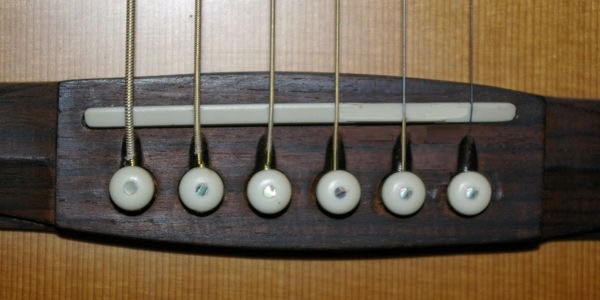
Saddle
saddle – the part of the bridge that physically supports the strings on a stringed instrument and aids in the transmission of string vibrations to the soundboard or pickups. It may be one piece (such as on acoustic guitars) or separate pieces for each string (such as on electric guitars). Saddles are typically made of plastic or bone for acoustic guitars, while electric guitar saddles are typically made of metal, although sometimes synthetic materials are used. Saddles on acoustic guitars are often slightly angled to compensate for differences in string thickneses. Also called a bridge saddle.
safe mode – the status of a track on a multitrack tape machine that prevents it from going into record mode.
safety – short for safety copy.
safety copy – a copy of a master recording set aside in case the original is lost or damaged. Also called safety master or protection copy or just safety for short.
safety master – see safety copy.
sample peak – the highest indicated peak value within the digital audio samples of a program using the ITU BS.1770 standard. Because it does not take inter-sample peaks into account, it is usually lower than the true peak value.
safety take – a take made after an acceptable take has been recorded. Sometimes abbreviated ST.
sag – a drop in the power supply voltage in during large transients, which tends to compress the output signal, particulary in tube guitar amplifiers. Although sag sometimes creates a nice dynamic feel, it also can have bad side effects, such as ghost notes—notes on top of the guitar note that is usually not harmonically related to the note being played.
SAG – Screen Actors Guild. See SAG-AFTRA.
SAG-AFTRA – Screen Actors Guild-American Federation of Television and Radio Artists. SAG-AFTRA is a union of radio, television, and screen performers representing a wide variety of talent, including actors, announcers, singers, recording artists, and others. It was formed in 2012 when AFTRA merged with SAG and became known as SAG-AFTRA.
samarium-cobalt magnet – a strong permanent rare earth magnet, made of an alloy of samarium and cobalt (SmCo). They were developed in the early 1970s by Albert Gale and Dilip K. Das of Raytheon Corporation. They have magnetic strengths comparable to neodymium magnets, but are more resistant to oxidation, have higher temperature ratings, and higher coercivity, but they are also more expensive than neodymium magnets. Also called a SaCo magnet.
sample – (1) To measure the voltage (amplitude) of an audio signal at regular intervals in order to convert it into digital data. (2) To use a portion of an audio track. see digital sampling. (3) A portion of an audio track. Also called a patch. (4) A single measurement of the voltage of an audio signal. (5) A short audio clip used for playing back sounds, such as the sound of a particular musical instrument. (6) The unit used in most DAWs for buffer size equal to 1 second divided by the sample rate (Hz). A buffer size of 512 samples is equal to 11.6 ms when using a sample rate of 44.1 kHz. (1/44100 × 512).
sample-accurate – (1) Having a resolution equal to or greater than the sampling rate. For example, for an audio signal with a 44.1-kHz sample rate, the resolution would have to be accurate to at least 1/44,100th of a second. (2) Having no latency or having perfect latency compensation. Compare with sample-precise.
sample-and-hold (S/H) or (S&H) – the step in the process of analog-to-digital conversion in which the signal voltage is measured and that level is held constant for the duration of the sampling interval as determined by the sample rate. This measurement is then converted into a digital word before measuring the next sample.
sample-based synthesis – see sample synthesis.
sample dump – the transfer of a digitally recorded sample via MIDI transmission from one device to another without an intermediate conversion to analog.
sample dump standard (SDS) – a specification for the transfer of samples via MIDI.
sample library – (1) A collection of digital audio recordings (samples) of instruments, ensembles, or even full orchestras that can be used to create music. These samples files can be loaded into a sampler (either a hardware or software-based) for creating music. (2) A collections of samples that are commercially produced, licensed, and sold to be used as samples, which are either distributed physically on CD or DVD or downloaded from the internet. Sometimes called a sample pack. See also sound library.
sample loop – see loop, definition #3.
sample offset uncertainty – see digital jitter.
sample pack – see sample library.
sample playback – the analog reproduction of a MIDI-controlled signal.
sample player – a sampler that can only playback samples stored in its memory.
sample-precise – having no digital jitter. Compare with sample-accurate.
sampler – a device that digitally records samples of various musical instrument or other sounds used to reproduces the sound of those instruments by playing back the samples instead of artificailly generating sounds as a synthesizer does. The sounds can be played back using the sampler or a keyboard, sequencer, or other controller. Some samples can be pitch shifted within a given range to produce other notes or chords. Samplers usually have filters, oscillators, and other processes to modify the sounds in various ways. Samplers can usually store the samples and usually are polyphonic and multitimbral.
sample rate – the frequency at which an analog audio signal is sampled in order to convert it into digital data, usually expressed in samples per second or kilohertz (kHz). The standard sample rate for music projects is 44,100 samples per second (44.1 kHz), while the standard rate for audio on video projects is 48,000 samples per second (48 kHz), or multiples thereof. Also called sampling frequency, sampling rate, or sample frequency.
sample rate conversion – the process of changing a digital audio file from one sample rate to another, without changing the speed or pitch of the file. Also called sampling rate conversion.
sample rate converter (SRC) – a device, usually software, that carries out the process of sample rate conversion of an audio file.
sample synthesis – the creation of a sound with a synthesizer in which a digital oscillator plays back a digitally sampled recording of an actual sound, such as a note played on a guitar or flute. Also called playback synthesis or sample-based synthesis.
sampling – (1) The process of converting an analog signal into a digital format by measuring the voltage of the analog signal at small evenly spaced intervals of time. See also sample and sample rate. (2) The process of using a portion of an audio track.
sampling frequency – see sample rate.
sampling rate – see sample rate.
sampling rate conversion – see sample rate conversion.
sampling synchronization – pulses generated by a DAT recorder, which are recorded on the tape and used as a clock reference signal for sample timing.
sampling theorem – a theorem developed by Harry Nyquist and Claude Shannon in the 1940s that states that a bandlimited analog signal can be perfectly reconstructed from an infinite sequence of samples if the sampling rate exceeds twice the samples per second of the highest frequency in the original signal. The theorem also was independently developed by E. T. Whittaker, Vladimir Kotelnikov, Karl Küpfmüller, Dennis Gabor, and others. These names are sometimes associated with this theorem, but it is most commonly called the Nyquist sampling theorem, the Nyquist-Shannon sampling theorem, or simply the Nyquist theorem. See also Nyquist frequency.
Samplitude – a digital audio workstation developed by MAGIX. MAGIX also makes a more powerful DAW, Sequoia.
Samsung Group – a multinational conglomerate headquartered in Samsung Town, Seoul, South Korea, with numerous affiliated businesses, operating primarily under the Samsung brand name. It was founded as a trading company in 1938 by Lee Byung-chul. Samsung diversified into a variety of businesses including food processing, textiles, insurance, securities, and retail. It entered the electronics industry in the late 1960s. Today mobile phones and semiconductors have become the most important source of income for its subsidiary, Samsung Electronics Co., Ltd.
Sansui Electric Co., Ltd. – Sansui Denki Kabushiki-gaisha. A manufacturer of audio and video equipment headquartered in Tokyo, Japan, part of the Chinese Hong Kong-based conglomerateof Grande Holdings, which also owns the brands Akai and Nakamichi.
SAO – Session-At-Once. See optical disc recording modes.
SAOL – Structured Audio Orchestra Language. See MPEG-4 Structured Audio.
SAP – Secondary Audio Programming. A third channel used with the MTS television format for standard-definition television broadcasts prior to the adoption of HDTV. It could be used for alternate languages or other purposes. Sometimes called secondary audio program, second audio program, or separate audio program.
SAS – Serial Attached SCSI. See hard disk drive interface.
SASBF – Structured Audio Sample Bank Format. See MPEG-4 Structured Audio.
SASI – Shugart Associates System Interface. See hard disk drive interface.
SASL – Structured Audio Score Language. See MPEG-4 Structured Audio.
SATA – Serial Advanced Technology Attachment. See hard disk drive interface.
SATB – Soprano, Alto, Tenor, Bass. The four most frequently encountered voices typically required by a chorus or choir to perform certain types of musical works, such hymns and chorales.
satellite – see SDRS.
satellite dish – a parabolic-shaped antenna used for transmitting data and broadcasting radio and television programming using microwave signals.
satellite radio – see SDRS.
satellite station – see broadcast translator.
satellite television – transmitting television signals relayed from communication satellites that are usually received using outdoor parabolic reflector antennas (often called “satellite dishes”). Satellite television originally provided programming to geographic areas that did not receive terrestrial television or cable television service, but now often competes directly with these services. See also direct-broadcast satellite
saturation – (1) Tape saturation—the maximum magnetization that a recording tape can attain. (2) Transformer saturation, in which an undersized transformer core is producing its maximum magnetic flux. (3) Tube saturation—the point beyond which the output from a vacuum tube is no longer linear.
saturation distortion – the distortion that results from exceeding the saturation point of a magnetic recording tape, transformer, or vacuum tube.
saturation flux density (Bs) – the maximum magnetic flux density possible in a magnetic material—the point at which saturation is attained. See also residual flux density.
saturation noise – see tape noise.
saturation output level (SOL) – the level of input magnetization of magnetic tape at which the output linearity varies by more than 1 dB compared to the input signal. The maximum output level MOL for magnetic tape is frequency and speed dependent.
saturation point – the input level of a audio signal beyond which the output is no longer linear. Increased input produces a lower amount of output. Saturation occurs with magnetic systems such as magnetic recording tape and transformers, as well as with vacuum tubes.
Sa value – a measure of the relative liveness of a room, where a low Sa indicates a very live room and a high Sa indicates a dead room. S is the total surface area of the room in sqare meters or square feet, and a is the average absorption coefficient of all the surfaces. The effective absorbing area is designated Se, where Se = s1a1 + s2a2 + ... snan for each surface 1 through n. It is part of the Sabine formula.

sawtooth waveform – a waveform that rises steadily to the maximum point and then decrease rapidly. It can also rise rapidly and steadily decrease, and the sound will be the same. See also sine wave, square wave, ramp wave, and triangle wave.
sax – short for saxophone.
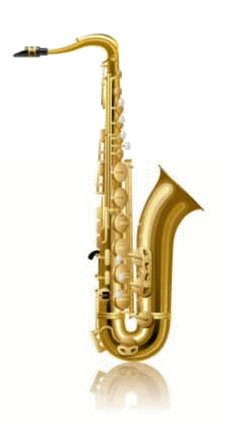
saxophone – a musical instrument in the woodwind family with a single-reed mouthpiece and a usually curved conical-bore metal (usually brass) tube with holes that are opened and closed with keys. There are basically four types in current use, which includes the soprano saxophone, alto saxophone, tenor saxophone, and baritone saxophone. Called a sax for short.
SBE – Society of Broadcast Engineers.
SBIR – Speaker Boundary Interference Response..
SBR – Spectral Band Replication.
SBM – Super Bit Mapping. See bit mapping.
scalar – a quantity that is completely specified by its magnitude or numerical value and has no direction, such as mass and length, as opposed to a vector quantity which has both magnitude and direction. For example, velocity is a vector quantity while speed is a scalar quantity. Scalar quantities may be added, subtracted, or multiplied like ordinary numbers, while vector quantities cannot.
scale – an ascending or descending sequence of stepped musical notes or pitches. A scale is named for its tonic, the first note of the scale, such as C major. There are several types of scales, such as chromatic, diatonic, and pentatonic.
scale degree – the indication used to specify the position of a particular note within a musical scale relative to the tonic. The tonic is degree 1 or the first degree of the scale, the next note is degree 2 or the second degree, and so on. For example, a perfect fifth would be the interval between the tonic and the fifth degree of a major scale. Scale degrees can be used with any musical scale. Although sometime called a scale step, this term can easily be confused with intervals, such as whole steps and half steps.
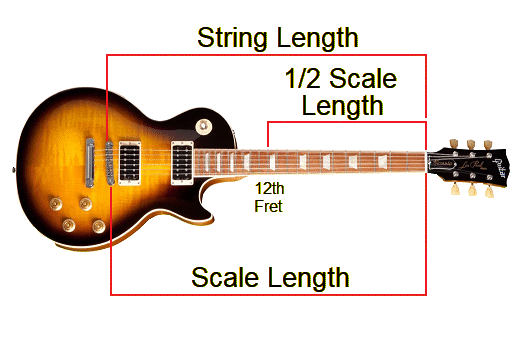
scale length – on of string instruments, such as guitars and bass guitars, the distance between the bridge and the nut (not the length of the neck), which is about twice the distance from the nut to the 12th fret. Because the bridge is slightly slanted, string lengths vary with the string.
scale lock – a function found in some virtual instruments that locks in a particular scale, so only notes within that key can be played.
scale step – see scale degree.
scan – (1) To move a focused beam of light or electrons in a systematic pattern over a surface to produce an image, as in a television or computer screen. (2) To move a recording or playback head across a magnetic recording tape in a particular pattern, such as helical scan. (3) To digitally encode with an optical scanner. (4) A single sweep of the beam of electrons across a television screen. (5) The method by which a recording or playback head passes over a magnetic tape. (6) A picture or image produced by scanning.
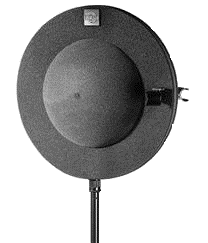
scattering – see diffusion.
scene – (1) A group of settings in a device, such as fader levels, effect types, send levels, and panning that can be saved and retrieved later. Also called a snapshot, configuration, setup, or scene memory. (2) In some DAWs, a collection of several tracks, similar to a session view in other DAWs.
scene memory – see scene, definition #1.
Scheiber matrix – the basic mathematical formulas developed by Peter Scheiber used to matrix four channels into two, on which most four-channel matrix systems are based.
Scheibler pitch – see A440.
Schneider disc technique – a stereo microphone technique similar to the Jecklin disc technique, except it adds a sound-absorbing sphere to the middle of the disc to more closely simulate a human head. This technique is in the baffled-microphone category. Besides the Jecklin disc, other techniques in this category include baffled-omni pair, wedge technique, and sphere microphone.
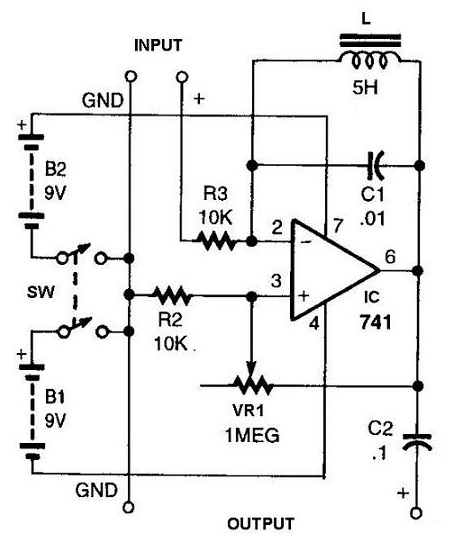
schematic – see schematic diagram.
schematic diagram – a drawing using symbols to show all significant components, parts, and interconnections of a electric circuit or process. Called a schematic for short. Compare with wiring diagram.
Schroeder curve – see decay curve.
Schroeder diffusor – see quadratic-residue diffusor.
Schroeder frequency – the frequency between the low frequencies at which standing waves occur in small rooms and the midrange frequencies. It is dependent on the dimensions of the room, but typically it is in the range of 160 to 200 Hz. It is named for Manfred Robert Schroeder, the German physicist known for his work in acoustics and computer graphics. Also called a crossover frequency, transition frequency, or room transition frequency. See frequency zones.
Schroeder method – see decay curve.
scientific pitch – a pitch standard, first proposed in 1713 by French physicist Joseph Sauveur, that defines all Cs as an integer powers of 2. Middle C was defined as 256 Hz (28 Hz), which results the A above it being approximately 430.54 Hz. Scientific pitch should not be confused with scientific pitch notation. It is not dependent upon, nor a part of scientific pitch notation. Sometimes called Verdi tuning or philosophical pitch. See A440.
scientific pitch notation (SPN) – a method proposed by the Acoustical Society of America in 1939 for specifying the name of the notes of the standard chromatic scale used in Western music. It uses a combination of a letter name, accidentals, and an octave number. The first note is C0 (sometimes designated as C0), which has frequency of about 16 Hz. The octave number changes by 1 as you go from B to C (not from G to A). For example, C4 immediately follows B3. Scientific pitch notation should not be confused with scientific pitch. Scientific pitch is a pitch standard, a system that defines the specific frequencies of each pitch (note), while scientific pitch notation is a method of naming the pitches and does not define pitch fequencies. Also known as American standard pitch notation (ASPN) or international pitch notation (IPN). See Chart of Relationship of Notes to Frequency and Wavelength. See also MIDI note number.
SCMS – Serial Copy Management System. A copy protection scheme to prevent repeated copying of digital audio files using consumer audio devices. SCMS sets a copy bit in all copies that prevents making further copies of the first digital copy, but does not limit the number of first-generation copies made from an original.
scoop – (1) To cut a range of frequencies using an equalizer. (2) The range of frequencies cut with an equalizer.
scordatura – Italian for “mistuning.” See alternate tuning.
score – (1) Sheet music, either printed or handwritten, using normal music notation and symbols. (2) To write music using normal music notation. (3) Music composed to accompany and enhance the mood of a movie or television production. Also called a film score, underscore, background music, or soundtrack music.
score editor – an editor found in some DAWs as well as standalone programs that uses standard musical notation to input and edit MIDI notes and other events and provides for the ability to print a copy of the score. Also called score writer, music notation software, notation software, or music notation processor.
score writer – see score editor.
Scottish penny whistle – see penny whistle.
scratch – (1) Temporary, as in a scratch track. (2) Short for scratch vocal or scratch track. (3) To quickly move a record back and forth with a stylus in the groove to produce a “scratching” sound in a rhythmic pattern, as performed by a musician or disc jockey. (4) A thin, shallow cut or mark, especially on a vinyl record. (5) To make a thin, shallow cut or mark, often with an abrasive material, such as to scratch a record.
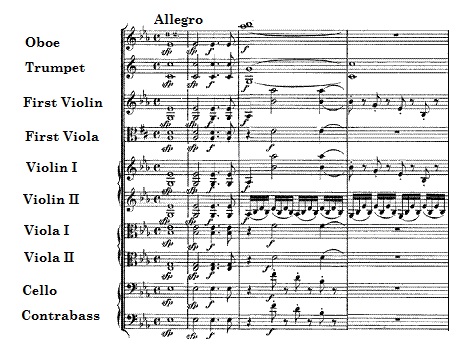
Showing Various Instruments
scratch guard – see pickguard.
scratch plate – see pickguard.
scratch track – a temporary recording made to use as a guide for overdubbing final tracks. Also called a guide track.
scratch vocal – a temporary recording of the vocal track used as a guide for overdubbing the instrumental parts. Also called a guide vocal or reference vocal.
screen – (1) A panel designed to reflect or absorb soundwaves, used to isolate one performer from another or to modify the acoustics of the room. See gobo. (2) The front surface of a television set, computer monitor, or other display on which an electronically created picture or image is formed using a cathode ray tube, LEDs, or other technology. (3) A light-reflecting surface on which motion pictures or slides can be projected. (4) Collectively, motion pictures or the motion-picture industry. (5) A British term for a cable shield.
screen grid – a second element in a vacuum tube positioned between the control grid and the plate, that acts as an electrostatic shield between them. This shielding greatly reduces the input capacitance of the tube, which increases the frequency response, and makes the plate current virtually independent of plate voltage. There is no screen grid in triodes, only in tetrodes and pentodes.
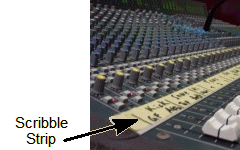
screening room – a room in which movies are shown on a large screen for a small private audience, usually associated with the movie industry. If it is not capable of using commercial theater technology, then it should be considered a home theater.
scribble strip – the area on mixers, consoles, and control surfaces used to indicate the input assignment for each channel. Some engineers place removable tape such as painter's tape or scribble strip tape on this area, which is removed when no longer needed. The scribble strips on some devices are electronic displays, which often can be saved to be recalled later.
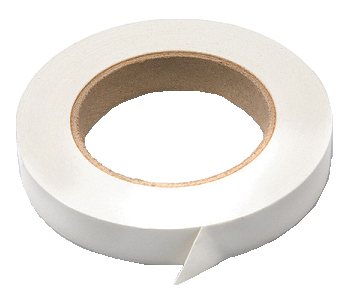
scribble strip tape – a removable tape specifically designed to be used as a scribble strip on mixers, consoles, and control surfaces, which is replaced with a new strip of tape when starting a new gig or project. Some engineers use painter's tape for this purpose.
scribe – to etch identification codes (called matrix numbers) with a sharp stylus into the runout area near the label of a master record after it has been cut by a lathe. These markings can be seen on the finished record.
scrim – a sheer, loosely woven fabric, that is transondent (sonically transparent), used for speaker grille cloths, theater screens, and coverings for acoustic panels.
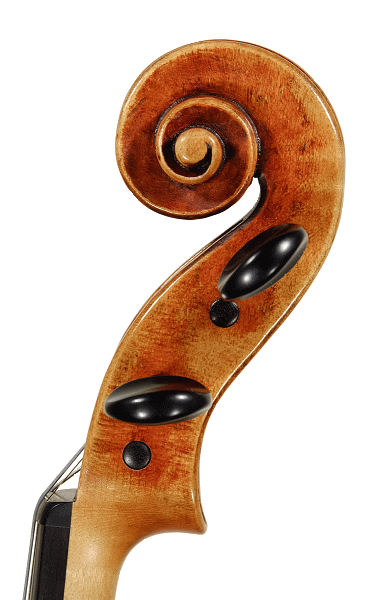
scroll – the decoratively carved end of the neck of some stringed instruments, especially members of the violin family. A typical scroll is carved in a spiral shape, but sometimes in other shapes such as animal heads. Scroll designs originated in the Baroque period. See also headstock.
scrub – (1) To move a recording tape backwards and forwards manually across a playback head while listening to the audio to find a precise edit point. (2) A function of many DAWs that allows a person to move an audio file backwards and forwards while listening to the audio to find a precise edit point, in a manner similar to that of definition #1.
SCSI – Small Computer Systems Interface. See hard disk drive interface.
SCSI-1 – see hard disk drive interface.
SCSI-2 – see hard disk drive interface.
SCSI-3 – see hard disk drive interface.
SDARS – Satellite Digital Audio Radio Service. A Digital Audio Radio Service (DARS) using satellite transmitters. In the US and Canada, the provider of this service is Sirius XM.
S-DAT – see DASH.
SDC – see small diaphragm condenser.
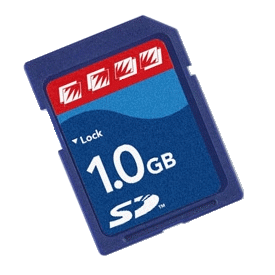
SD card – Secure Digital Memory card. A type of flash memory storage device developed for digital cameras and other mobile devices by Panasonic, Toshiba, and SanDisk. Some digital audio recorders use SD cards to store audio files.
SDDS – Sony Dynamic Digital Sound.
SDHC card – Secure Digital High Capacity card. A type of flash memory storage device that allows for higher data capacities (greater than 4 GB) than the conventional SD card. Becasue SDHC cards use a new technology, they are not backwards compatible with the SD format.
SDI – Serial Digital Interface.
SDK – software development kit.
S-DMB – see digital multimedia broadcasting.
SDMI – Secure Digital Music Initiative. A group formed 1998, composed of computer, consumer electronics, security technology, and recording industry companies, for protecting the copyright of music distributed over the internet.
SDO – Standards Developing Organization. See standards organization.
SDP – Service Discovery Protocol. See Bluetooth profile.
SDR – Standard Dynamic Range.
SDS – Sample Dump Standard.
SDTV – Standard-Definition TeleVision.
Se – effective absorbing area or equivalent absorption surface. See Sa value.
sealed back – having a speaker basket with no rear openings. A sealed-back basket prevents sound waves from exiting the back of the driver and interfering with the sound from other drivers, while increasing the sound emanating from the front. Almost all tweeters have sealed backs, as well as some midrange drivers. The typical speaker basket has an open-back design.
sealed case – see sealed diaphragm.
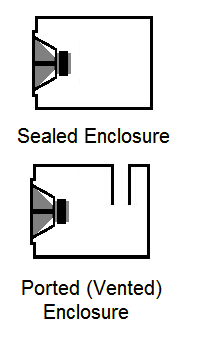
sealed diaphragm – a microphone diaphragm that is enclosed in such a way that the back cannot receive sound pressure changes. This is the mechanism used in a pressure microphone. Also called a sealed case.
sealed enclosure – a loudspeaker cabinet with no vents or ports, the opposite of a ported speaker.
SECAM – Seqential Couleur Avec Memoire. An analog color television broadcasting system developed in France as an alternative to PAL. Because it was incompatible with PAL which was in Western Europe, it was adopted extensively throughout eastern Europe..
second – (1) The unit of time in the SI system and the CGS system. Originally defined as 1⁄86400 of a mean solar day, today it is officially defined in atomic terms. Official abbreviation is s, but sec is used extensively. (2) A musical interval that includes two adjacent positions on the music staff. (See interval number.) For example, the interval from C to D is a major second and has an interval of two semitones. A minor second has an interval of one semitone, a diminished second has an interval with no semitones, and an augmented second has three. (3) Short for second recording engineer.
secondary – see coil.
secondary coil – see coil.
secondary dominant – a non-diatonic dominant chord that is the dominant (fifth degree) of a diatonic chord other than the tonic (I) or the leading tone (VII). For example, the dominant of the C major scale is G, and its dominant (in the G major scale) is D. So the secondary dominant chord for G would be the D chord in the key of G, or D-F♯-A. It uses the notation of V/V. The five secondary dominants of the C scale are A (written as V/ii), B (V/iii), C (V/I ), D (V/V), and E (V/vi). Using a secondary chord temporarily makes the chord sound like the tonic, a process called tonicization. Secondary chords are used to add interest to a chord progression or to set up a key change. Secondary dominants often are used as secondary seventh chords (secondary dominant seventh), which adds a flattened seventh degree to the triad.
secondary dominant seventh – see secondary dominant.
secondary reference monitors – see mix speaker check.
secondary speaker check – see mix speaker check.
secondary winding – see coil.
second engineer – see assistant recording engineer.
second recording engineer – see assistant recording engineer.
secret Pultec low-end trick – see Pultec low-end trick.
secret Pultec trick – see Pultec low-end trick.
segment – see clip.
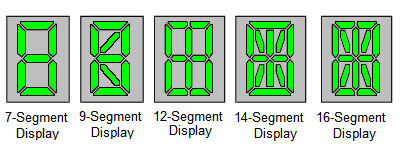
segment display – a form of electronic display device used for displaying decimal numerals, which is an alternative to the more complex dot matrix displays. They can use incandescent, LED, or LCD displays. The are used in digital clocks, electronic meters, DAW minute:second displays, and other digital displays. There are several versions including the 7-segment display, the 9-segment display, 12-segment display, 14-segment display, and the 16-segment display, becoming more complicated as the series progresses, but easier to read, as well as to better display letters in addition to numerals.
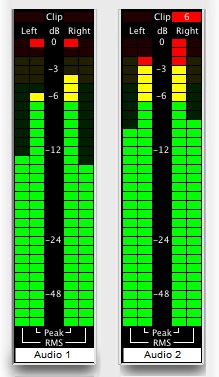
segmented meter – a series of LEDs designed to indicate a level such as audio level by progressively showing more LEDs as the level increases. In software, a graphical representation of the LEDs is used. See also VU meter.
segue – (1) To move smoothly without interuption from one song or movie scene to another. (2) The smooth uninterupted transition from one song or movie scene to another.
SEL – Sound Exposure Level.
selective synchronization – see sync mode.
selector switch – a switch used to choose among two or more circuits, inputs, or outputs.
self biasing – see Dolby HX Pro.
self noise – the intrinsic noise that occurs when no signal is present produced by a device, such as a component, circuit, or microphone. Self noise is usually expressed as voltage, but microphone self noise is frequently expressed in dBA (using A-weighting). Sometimes called internal noise. See also equivalent noise level.
self oscillation – the point at which an analog delay becomes over-saturated with regeneration creating a continuous feedback loop that becomes louder and more distorted as it progresses.
sel-sync – short for selective synchronization. See sync mode.
semi-coincident pair – see near-coincident pair.
semiconductor – (1) a substance, such as germanium or silicon, that has the property of conducting electricity somewhere between that of a conductor and an insulator. (2) A device, such as a transistor or integrated circuit, that depends on the properties of such a substance.
semi-modular synthesizer – see synthesizer.

semi-parametric equalizer – an equalizer that provides for control of frequency and gain on each band of equalization, but not the bandwidth (Q). Also known as a quasi-parametric equalizer or a paragraphic equalizer. See also parametric equalizer.
semi-pro – short for semi-professional.
semi-professional – a decriptive term for audio equipment that has professional or near-professional performance, but that is not built to the same durability standards as professional equipment or that is missing one or more features normally included on professional devices. Called semi-pro for short. See also prosumer.
semitone – in music, half a tone or a half step, the smallest increment of pitch in tonal music; the difference in pitch between two adjacent keys on a piano or two notes on a chromatic scale. There are 12 equal half steps per octave. This is the system typically used in western music. Also called a half step or half tone. See also quarter tone and whole tone.
send – (1) The signal path on a mixer, console, or DAW used to feed monitor mixes, signal processors, outboard devices, plug-ins, or other line-level inputs. A send is used to feed the device and a return is used to return the signal from the device, creating an effects loop. Also called aux send, auxiliary send, echo send, or effects send. (2) To route an audio signal to one or more buses or channels. See also assign.
send effect – an effect inserted into an effects bus or aux track. The output (the processed signal) returns to the DAW output where it mixes with the direct signal from the track. Send effects are usually set at 100% wet, with the amount of the effect controlled by the send level. Typical send effects are time-based effects (reverb, delay, and echo). By contrast an insert effect is inserted into a track, in series with the signal on the track to process that signal. Typical insert effects are sspectral effects (equalizer) or dynamic effects (compression, gating, and de-essing).
send level – the signal intensity of a signal sent to a send bus.
Sennheiser Electronic GmbH & Co. KG – a private German company founded in 1945 and headquartered in Wedemark, Germany, that
specializes in the design and manufacture of a wide range of consumer and professional audio products, including microphones, wireless microphones, headphones, and telephone accessories. In 1991, Sennheiser acquired Georg Neumann GmbH, of Berlin.
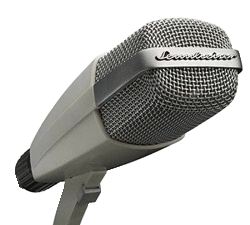
Sennheiser MD 421 – a dynamic moving coil microphone with a cardioid pattern introduced in the 1960s by Sennheiser. With a 27-mm capsule, the MD 421 is one of the few dynamic microphones with a large diaphragm, and features a wide frequency response from 30 to 17,000 Hz. Its high sensitivity and slight bump in response in the high frequencies results in a brilliant sound. Since its introduction, it has been released in several versions, which include the case color (grey and beige or black), connections (originally DIN and later XLR), bass rolloff switches, and mounting thread size, as indicated by various suffixes. The current version is the MD 421-II. Throughout the various versions, the capsule and electronics have remained unchanged.
sensitivity – (1) The minimum input signal to a device required to produce a rated output signal with a specified signal-to-noise ratio. (2) The output voltage generated by a microphone by a specified sound pressure level. IEC standard 268-4 specifies sensitivity to be measured in millivolts/pascal (mV/Pa) with a 1-kHz sine wave at 94 dB-SPL (which equals 1 pascal). However, in the US sensitivity is often expressed in in dBV, relatively to 1 V/Pa. Other units sometimes used include dBu/microbar (μbar) or dBV/μbar. Because 1 pascal equals 10 μbar, sensitivity in dB/μbar are 20 dB lower than dB values referenced to 1 Pa. (3) The ability of a loudspeaker to convert power into sound. It is usually the sound pressure level (SPL) generated by a 1-watt signal (2.83 volts into an 8-ohm speaker) measured at a distance of 1 meter, specified in dB-SPL. Typically it uses a signal with a frequency of 1 kHz, but sometimes it is measured at several frequencies and averaged. Speaker sensitivity should always specify the impedance. (4) The degree to which a radio receiver responds to incoming waves. (5) The level at which a processor begins to work on a parameter. (6) An indication of the relative output of a recording tape as compared to a standard reference tape. A tape with a sensitivity of 2 will have a 2-dB greater output than the reference tape. (7) The trim control on a console or mixer.
sensory inhibition – the phenomena in human beings in which a response to one stimulus causes the response to a second stimulus to be inhibited. For example, a sound entering one ear causes us not to hear a delayed (less than 35 ms) second sound entering the other ear. See the Haas effect.
separate magnetic – see sound follower.
separation – (1) The ability of one microphone to reject undesired sounds intended to be picked up by other microphones in order to minimize phase cancellation. (2) The amount of isolation between a signal from one channel and that of an adjacent or neaby channel, measured in decibels. See crosstalk.
separation mastering – see stem mastering.
sepmag – short for separate magnetic. See sound follower.
Sepmeyer ratios – see room ratios.
septum – a thin layer of sound blocking material, such as vinyl, lead foil, or gypsum, sandwiched between layers of absorbing material to prevent the transmission of sound waves.
Sequel – a digital audio workstation developed by Steinberg. It is essentially a stripped-down and simplified version of Cubase.
sequence – (1) A set of commands providing step-by-step instructions of musical data, used by a sequencer. (2) To place the songs of an album into the desired playing order during the mastering process.
sequencer – a device that can be programmed to play a step-by-step set of musical instructions, usually in the form of MIDI data.
Sequoia – a digital audio workstation developed by MAGIX. It is essentially a more powerful version of Samplitude.
serial – (1) Being arranged or sent in a series, one item after another. (2) Data that is transmitted one bit at a time over a wire or cable. The opposite of parallel.
serial digital interface (SDI) – a set of interfaces used primarily in professional digital video established by SMPTE in 1989. Using BNC connectors, they are used in television broadcasting, professional cameras, and theater facilities. New standards have been established as the industry has improved, such as color, higher frame rates, and increasing resolution. The HD version is called high-definition serial digital interface (HD-SDI).
series – (1) Two or more processes, functions, or operations taking place sequentially rather than simultaneously. (2) A signal that is fed through a sequence of components one after the other. (3) A method of sending data in which each digit of a digital word is sent one at a time over the same wire. Opposite of parallel in which such functions operate simulataneously.
server – (1) A computer program that provides services to other computer programs, which may or may not be located on the same computer. (2) A computer program that fulfills requests from client programs. (3) A computer on which a server program runs, which can be located on site or remotely. Such a computer may function as a both a server and a client. It is considered to be part of a client-server model.
serve shield – see spiral shield.
servo balanced – an active balanced output using two op amps, one driving positive while the other is driving negative. The two outputs are cross-connected so that if one output goes to ground, the other will make up the difference by putting out twice the voltage.
servomotor – an actuator (motor) that provides precise control of angular or linear position and velocity and acceleration of a device. It consists of a motor coupled to a sensor for position feedback, and is usually controlled by a fairly sophisticated controller.
SESAC – Society of European Stage Authors and Composers. SESAC is the smallest of the three performance rights organizations in the US. It protects the rights of artists and publishers and collects and distributes royalties to its members. The other two PROs are BMI and ASCAP. See also Global Music Rights.
session – (1) The time in which a recording takes place. (2) In some DAWs a project that is defined by the session file. Other DAWs refer to this as a project, set, or song.
session file – in some DAWs, a working file, similar to a word processing file, that contains data describing how media files are to be displayed and played, as well as metadata about the audio and MIDI files on which it depends, plus related data such as fades, playlists, and selections. Each separate song or project is stored in its own session file. Other DAWs refer to this as a project file, project document, set file, or song file.
session musician – an instrumental or vocal performer who is available and can be hired to work during recording sessions or at live performances. Sometimes called a studio musician or session player. When using a session musician, one should work out a session musician agreement under a work-for-hire arrangement to prevent future claims of royalties.
session player – see session musician.
session tape – the original recording made during a recording session.
session template – see template.
set – see session.
SET – (1) Single-Electron Transistor. (2) Single-Ended Triode
set list – (1) A printed or handwritten list on paper, cardboard, or other material of the order and titles of the songs that a band or musician plans to play for a specific performance. The set list is often taped to the floor, a music stand, or some other place where the musicians can see it. (2) The songs the musicians plan to play or have played for a performance, but not actually written down. (3) The track list for an album. Sometimes spelled setlist.
setup – (1) To place musicians and microphones to achieve the desired recording quality or effects. (2) The placement of microphones and musicians in a recording studio. (3) To place equipment, microphones, and instruments on a stage for a performance or in a studio to be ready for tracking. (4) The signal chain. (5) The settings in a DAW as in definition #1 of scene. Sometimes spelled set up.
setup time – the amount of time required by a band or artist to be ready to perform in a recording studio or on stage. (See setup definition #3.) Usually the drummer needs the most time to setup his or her drum kit. Most studios include setup time in the hours billed.
seventh – in music, the interval that includes seven positions on the music staff. (See interval number.) A major seventh has a theoretical ratio of 15:8. However, in the equal temperament system, in which the notes are spaced equally, the ratio from middle C (262.63 Hz) to B4 (493.88 Hz) is 3:7.98, or about 12 cents wider than the 15:8 ratio. While a major seventh has an interval of eleven semitones, a minor seventh has an interval of ten semitones, a diminished seventh has an interval of nine semitones, and an augmented seventh has twelve.
sex changer – an adapter that changes the sex of a connector, from male to female or vice versa.
S-format – see type C videotape.
SFX – abbreviation for sound effects.
SGGB – Songwriters Guild of Great Britain. See British Academy of Songwriters, Composers, and Authors.
S/H or S&H – abbreviation for sample-and-hold.
shadowed ear – the ear on the human head opposite from a sound source. The opposite of unshadowed ear. See also head shadow and zone of silence.
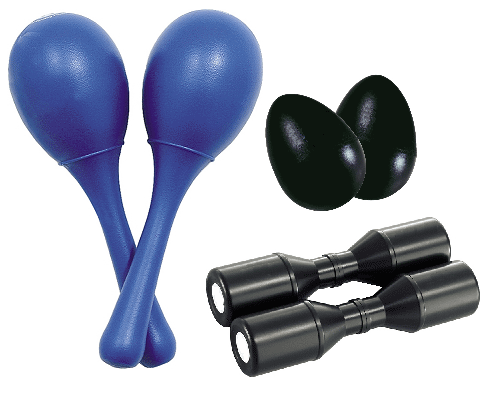
Shapes and Sizes
shaft encoder – see rotary encoder.
shaker – an untuned percussion instrument composed of a body containing a number of small beans or pellets made of metal, stone, or glass, which bounce against the inside walls of the instrument when it is shaken or struck. Shakers are prevalent in many musical cultures and are often made of natural materials. Sometimes called a rattle.
shaped response – see tailored frequency response.
SHARC – Super Harvard Architecture Single-Chip Computer. A high-performance floating point and fixed-point digital signal processor (DSP) chip from Analog Devices, Inc., whose original design was introduced in 1994. The chip is capable of addressing 32-bit words and handling 64-bit data processing, making it extremely suitable for audio processors, synthesizers, and A/D and D/A converters, providing essentially unlimited audio headroom. See also Motorola DSP56000.
sharp – (1) Higher in pitch by one semitone (one half step). (2) Slighly above the correct musical pitch. (3) The musical symbol (♯) used to raise a note by one half step.
Sharp Corporation – Shapu Kabushiki-gaisha. A Japanese multinational company founded in 1912 and headquartered in Abeno-ku, Osaka, Japan, that designs and manufactures electronic products. Its name comes from one of its founder's first inventions, the Ever-Sharp mechanical pencil, invented by Tokuji Hayakawa in 1915.
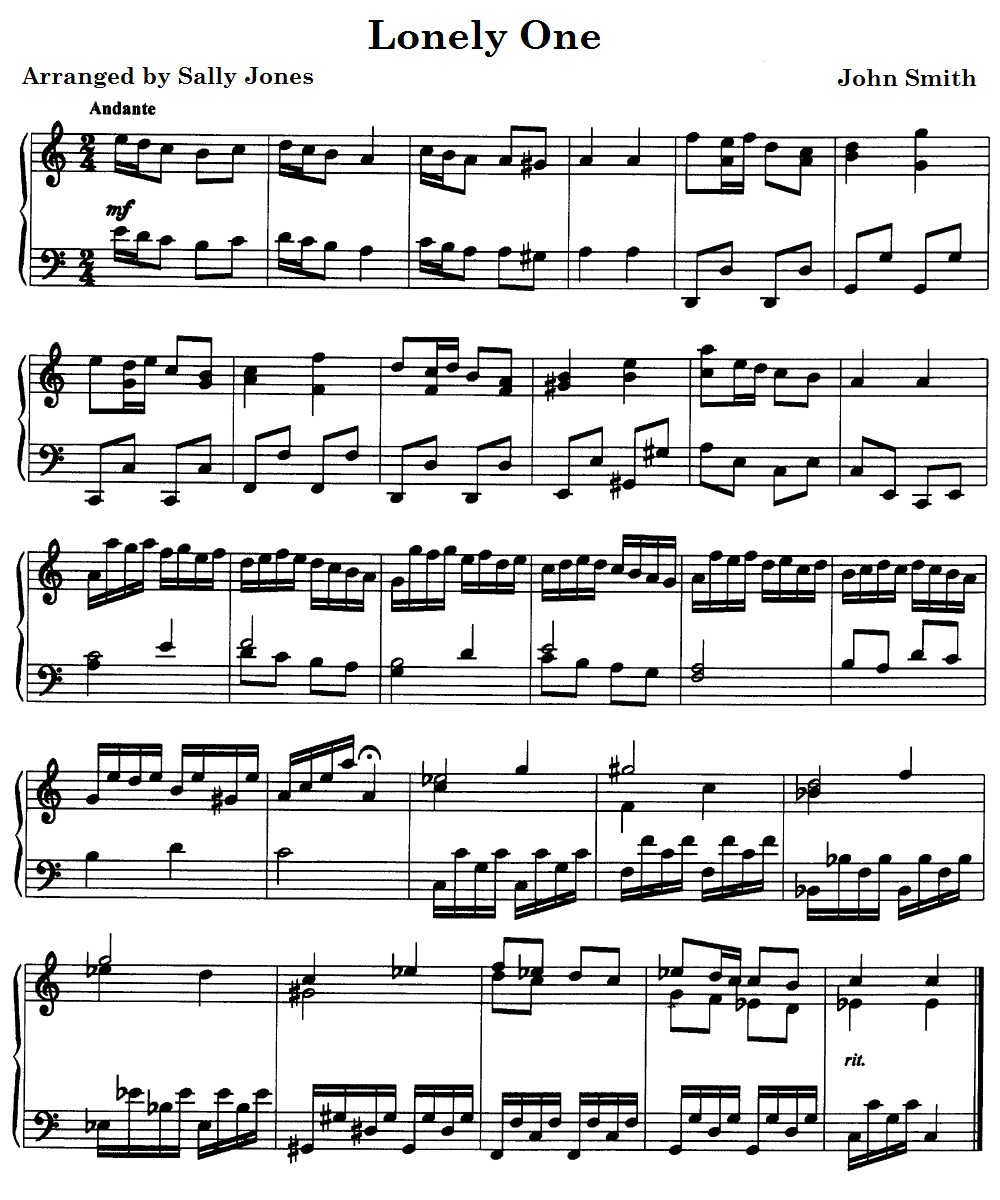
sheath – see jacket.
sheen – a descriptive term for a sound with very smooth airiness, due to extreme smoothness in the high frequencies. Compare with airy and shimmer.
sheath – see jacket.
shedding – the phenomenon of the magnetic coating of recording tape deteriorating and sloughing off. Although all recording tapes shed to some degree, the situation can be aggravated by poor tape quality, aging tape, storage in hot and humid conditions, frequent use, and use in machines with abrasive tape transports. See also sticky-shed syndrome.
sheet music – music notation using musical symbols, usually handwritten or printed on paper, although it can be presented on a computer screen. The term sheet music is usually used to differentiate written music from other presentations, such as sound recordings, broadcasts, live performances, or videos.
shelf – the portion of a frequency response curve that has been cut or boosted by a shelving filter.
shelf filter – see shelving filter.
shellac – a resin made from the secretions of the female lac bug. It is used in many applications, including at one time the manufacture of 78-rpm phonograph records. Although the formulations used in records varied over time and by manufacturer, it typically consisted of about one-third shellac and two-thirds mineral filler—usually finely ground slate and limestone—plus cotton fibers for tensile strength and carbon black to add color. Without the carbon black, the mixture tended to an ugly gray or brown color. A few companies, most notably Columbia Records, used a laminated construction with a core disc of dense fiber or filler coated with shellac.
shell voicing – a jazz chord that is reduced to three notes, usually consisting of the root, third, and seventh of the chord (no fifth). Sometimes the root is also omitted.
shelving curve – an equalization curve created by a shelving equalizer, which applies a constant amount of boost or cut above or below a specified frequency.
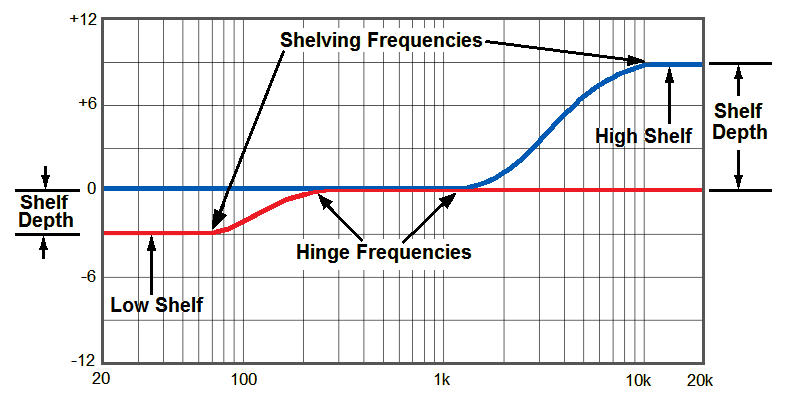
(Shelving Curve)
shelving equalizer – see shelving filter.
shelving filter – a filter that applies a constant amount of boost or cut above or below a specified frequency (the cutoff frequency, hinge frequency, or inflection point), resulting in a frequency response curve that resembles a shelf (called a shelving curve). A shelving filter can be either highpass or losspass, sometimes called a low shelf or high shelf filter, repectively. A low shelf is adjusted to cut or boost only the lower frequencies, like the bass control on hi-fi equipment. A high shelf is used cut or boost only the higher frequencies, like the treble control on such equipment. The frequency where the shelf begins is called the shelving frequency. On some shelving filters, the slope can be adjusted. Also called shelving equalizer, shelving EQ, or shelf filter.
shelving frequency – see shelving filter.
Shephard scale – see Shepard tone.
Shepard tone – a sound consisting of multiple sine waves, each an octave apart, with the base pitch either rising or falling. The movement of the base pitch creates an auditory illusion of a tone that is continuously rising or falling in pitch, but seemingly not getting any higher or lower. It has been called a “sonic barber's pole.” It was invented by Stanford professor Roger Shepard, a cognitive scientist who did research on spatial relations. Also called a Shephard scale.
SHF – Super High Frequency. The portion of the radio frequency spectrum from about 3 GHz to 30 GHz. See the radio frequency chart.
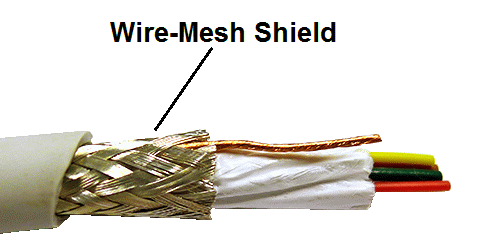
shield – (1) The wire wrapping or mesh surrounding the conductors in a cable. The common types of shields are foil shield, spiral shield, double-spiral (Reussen) shield, braided shield(mesh), and double-braided shield. Also called shielding. (2) A metal box or enclosure that shields circuitry from receiving or emitting interference. Also called shielding. (3) To protect wires in a cable from external interference.
shielded cable – a cable in which the inner conductors are are wrapped by thin wire or a mesh shield that protects the conductors from external interference.
shielding – see shield, definitions #1 and #2.
shimmer – (1) A descriptive term for a sound with a clean, clear high end, especially at frequencies above 12 kHz. Compare with airy. (2) A frequent back and forth change in amplitude of the voice.
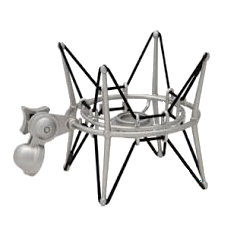
shimmer reverb – an effect in which each note has reverberation that is one octave higher than the original sound. The addition of high-frequency content creates a shimmering effect.
.shn – file extension for the Shorten format.
shock mount – a suspension system that isolates the microphone from mechanical vibrations coming from the stand, typically consisting of elastic bands mounted on a metal frame.
shootout – a informal contest in which various brands and models of audio equipment, most often microphones, are pitted against one another. Althought there are no strict rules, comparison should be made in real world situations in which conditions are maintained in such a manner as to not give unfair advantage to one or more devices.
short – short for short circuit.
short circuit – a direct connection between two points in a circuit that normally should not be connected. Fuses and circuit breakers are used to protect components and wiring in case a short circuit occurs, while a ground fault circuit interrupter (GFCI) is used to protect personnel. Called a short for short.
shortcut – see keyboard shortcut.
short delay – a delay with a time of less than 20 milliseconds.
Shorten – a lossless audio file format used to compress CD-quality files. Shorten is no longer supported because other lossless audio codecs such as FLAC, APE, TTA, and WavPack have become more popular. However, Shorten is still used by some people because there are many files still in in circulation that were encoded in Shorten. Shorten files use the .shn file extension.
shortest digital path – routing a digital audio signal to minimize the number of D/A conversions, A/D conversions, or sample rate conversions.
shortest path – a technique used in audio recording that routes the signal through the fewest number of active devices.
shorting trigger – see trigger.
short loaded – a mixing console with fewer than the maximum number of channel modules installed in the frame.
short out – to cause a short circuit to occur.
short-term loudness – see sliding loudness.
shortwave – (1) A radio wave having a wavelength between about 10 m and 100 m, which corresponds approximately to the HF band with a frequency of about 3 to 30 MHz. (2) Broadcasting using radio waves of shortwave frequencies.
shortwave radio – radio transmissions using shortwave frequencies. Shortwave radio allows for long distance communication because radio waves of such wavelengths are reflected back to Earth from the ionosphere, which allows signals to go beyond the curvature of the Earth. Shortwave radio is used for two-way international communication by amateur radio operators as a hobby or in emergency situations, as well as long-distance communications between ships and aircraft. It is also used for broadcasting of voice and music.
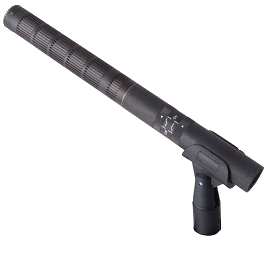
shotgun microphone – a highly directional microphone used in distant recording, to isolate one sound from another. It has a lobar pattern (shotgun pattern). A shotgun microphone uses the interference tube principle. It has a directional capsule, typically a supercardioid, with a long, hollow, slotted tube placed in front of it. Called an interference tube, this device allows desirable on-axis sound to pass umimpeded straight down the the tube to the diaphragm, but the undesired off-axis sound enters through the various side slots. Because the undesired sound enters several slots at various distances from the diaphragm, the off-axis sounds arrive at the diaphragm with varying amounts of phase shift which partially cancel out one another, creating interference. This arrangement creates tighter directionality (particularly at higher frequencies), which reduces the ambient noise, but at the expense of a worse direct-to-reverberant ratio and a potential for increased wind noise. Also called a rifle microphone, interference microphone, interference tube microphone, or simply gun microphone for short.
shotgunning – see recapping.
shotgun pattern – see lobar pattern.
show sheet – see run sheet.
shrill – a descriptive term for a strident, steely, and piercing sound.
shuffle mode – one of four methods of editing in Pro Tools in which a clip added to a track will move to the nearest clip or to the beginning of the track. If a section is removed from the middle of a track, the space between the two remaining clips will be closed. If you add a clip to the middle of a track, the two clips will make room for the new clip. The other three methods are grid mode, spot mode, and slip mode.
shuffler – see shuffling.
shuffling – a technique for correcting stereo imaging. There are two types of shufflers : (a) the Blumlein Shuffler, developed by Alan Blumlein of EMI in the 1930s, used to correct the output from a near-coincident pair of omni microphones, that converts the low-frequency phase differences between the two mics into amplitude differences to improve stereo imaging and (b) the Stereosonic Shuffler, developed at EMI in the 1950s, that used different but similar techniques, to improve stereo imaging of loudspeakers. For the most part, both these processes were rarely used until recently when they were incorporated into some processors to improve stereo imaging.
shunt – (1) An electrical conductor between two points of a circuit, used to divert a current. (2) To divert a current to another point in a circuit. The typical purpose is to remove a problematic signal, voltage, or interference by diverting it to ground where it can be rendered harmless.
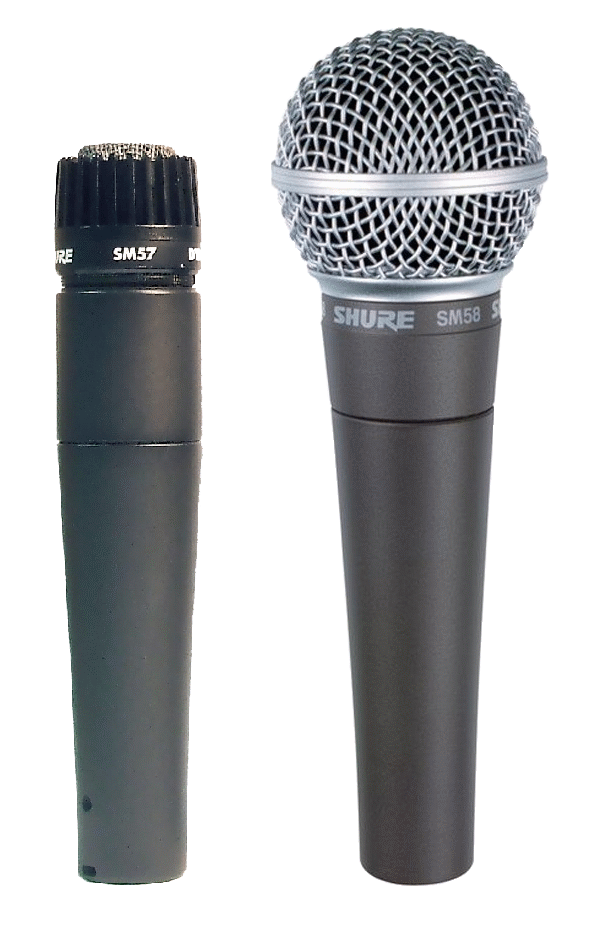
and SM58 (R)
Shure, Inc. – a manufacturer of consumer and professional audio electronics headquatered in Niles, Illinois. The company manufactures microphones, wireless microphone systems, phonograph cartridges, mixers, digital signal processors, headphones, and personal monitoring systems. It was originally founded in 1925 by Sidney N. Shure in Chicago, Illinois, as a supplier of radio parts kits.
Shure SM57 – a low-impedance, cardioid, dynamic microphone introduced in 1965 by Shure, which, along with the SM58, is one of the best-selling microphones in the world. In 2004, it was among the products first-ever induction into the TECnology Hall of Fame. The "SM" stands for Studio Microphone. The SM57 uses the same capsule as the popular SM58. Due to its sturdy construction it is frequently used on the stage. It is also used in the studio for instruments with instruments that produce high sound pressure levels, such as kick drums, broadcastsnare drums, toms, and guitar amplifiers.
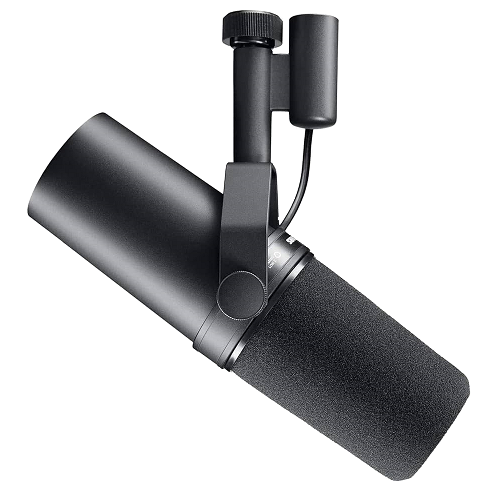
Shure SM58 – a low-impedance, cardioid, dynamic microphone introduced in 1966 by Shure, which, along with the SM57, is one of the best-selling microphones in the world. The SM58 uses the same capsule as the popular SM57. It is considered the industry standard for live vocal performance microphones. The SM stands for Studio Microphone.
Shure SM7B – a cardioid dynamic microphone, introduced by Shure in 1973 as the SM7. Designed primarily as a vocal mic for broadcast and film studios, it found wide-spread use in many other applications. It used a version of the Unidyne III cartridge (the one used in the SM57 and SM58), which was modified with a larger housing allowing for a larger volume behind the cartridge to extend its low-end response. The internal shock mountshock mount was optimized to reduce mic stand vibrations. In 1999, the SM7A was introduced with an improved humbucking coil and a new design of the yoke mount. The SM7B was introduced in 2001 with a larger windscreen. In 2023, the SM7dB was released with an onboard preamp to boost the output.
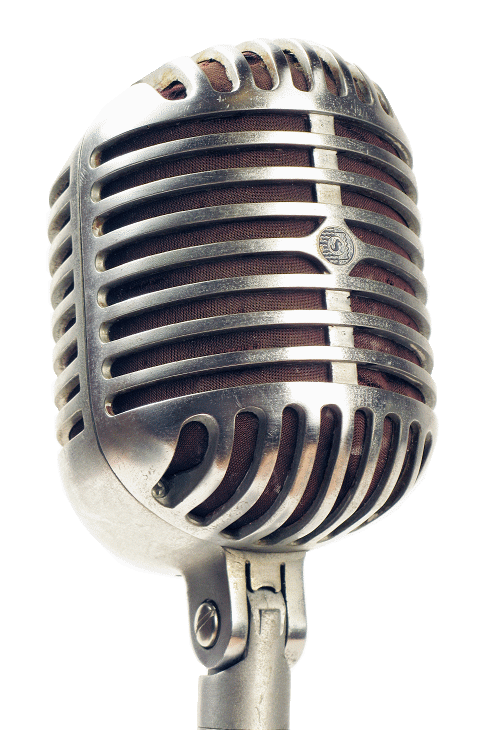
Unidyne 55
Shure Unidyne Model 55 – a microphone introduced by Shure in 1939, the first high-quality, low-cost moving-coil dynamic microphone with a unidirectional cardioid pattern. It was marketed for broadcast, public address, recording, and two-way radio, with three versions: Models 55A, 55B, and 55C with low, medium, and high impedances respectively. In 1940 the Model 555 was introduced, a version specific for broadcasting with an improved vibrational isolation mount. In 1947, the broadcast version became the Model 556, and the three 55 models were replaced with a single version with an impedance selector switch. In 1951, Shure introduced the Small Unidyne, which, along with other improvements, was smaller and lighter, in two configurations: Model 556S for broadcast and Model 55S for general use. Over the years, as additional improvements were made, the Unidyne 55 became a cultural icon.
shuttle – (1) To rapidly move backward and forward manually through a digital audio waveform or tape recording to find a precise edit point. Jog refers to moving very slowly, while shuttle refers to moving very fast. (2) A method for stopping the tape on a tape machine while fast-forwarding or rewinding in which the operator switches directions and then presses stop just as the tape begins to change direction. (3) A control (typically a dial or wheel), often operated in conjunction a jog or scrub control, to allow an operator to rapidly find a general location and then use the jog or scrub control to zoom in on the precise location while listening to the audio.
SI – Le Système International d'Unités (International System of Units). The preferred metric system of measurements used in science and in international commerce. This system is based on the MKS (meter-kilogram-second) system. The CGS (centimeter-gram-second) system is no longer the preferred system of measurement. Today the US is the only country in the world not on the metric system. See US customary units.
sibilance – the high-pitched whistling sound that occurs when saying or singing certain sounds, such as “s” and “sh.” Most sibilance occurs in the 6 to 10 kHz region. See de-esser.
sibilant – having exaggerated “s” and “sh” sounds when singing. See sibilance.
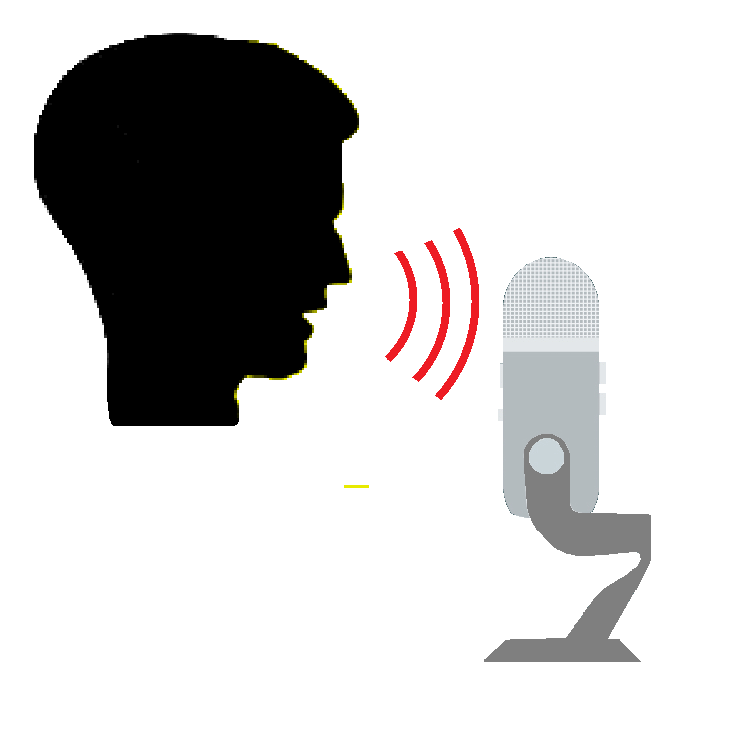
side-address – a microphone which picks up sound from the side, rather than the end. Also called side-fire. See also end-address.
sideband – one of two frequency bands on either side of the carrier wave of a radio signal that contains the modulated signal. All modulation of radio signals produce sidebands. Amplitude modulation of a carrier wave normally produces two mirror-image sidebands, the upper sideband (USB), frequency components above the carrier frequency, and the lower sideband (LSB), those below the carrier frequency. Normal AM transmission has a carrier and both sidebands, which is called double-sideband (DSB) or double-sideband amplitude modulation (DSB-AM). Transmitting only one sideband is called single-sideband (SSB) transmission, which is commonly used with voice mode shortwave radio except for shortwave broadcasting.
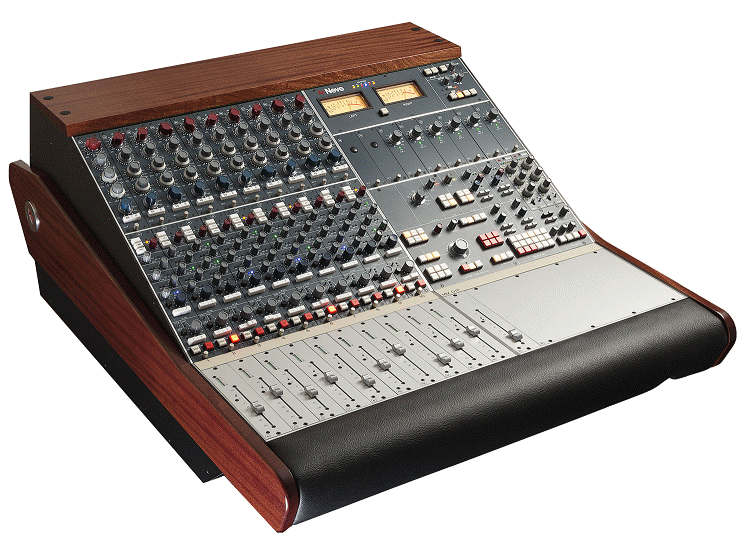
(Neve BCM10)
sidecar – a smaller console attached to a larger console to provide extra channels or different preamps and effects. The most common example of a sidecar is the Neve BCM10, a console used primarily in the broadcast industry during the 1970s. The sidecar was named for the small one wheeled vehicle attached to the side of a motorcycle to carry an extra passenger.
side chain – (1) A circuit or signal used to modulate the output of a dynamics processor. Also called a key or detector circuit. See also key input. (2) To control a dynamic processor with an external signal as in definition #1.
side chaining – controlling or modulating a dynamics processor using an external circuit or signal. Also called keying.
side drum – see snare drum.
side-fire – see side-address.
siemens (S) – the SI unit for conductance, susceptance, and admittance. Conductance, susceptance, and admittance are the reciprocals of resistance, reactance, and impedance respectively. One siemens is equal to the reciprocal of one ohm, and is also called a mho (ohm spelled backwards). The unit is named for Ernst Werner von Siemens, inventor of the moving coil microphone. In English, the term siemens is used for both singular and plural.
signal – (1) Information, such as sound waves or video, encoded and sent via an electric current, radio wave, or light pulses. Also called an electronic signal. Note that an electric current can flow in either direction, but an audio signal flows only in one direction. (2) A digital bitstream that represents an audio sound wave. Also called an digital signal.
signal chain – similar to signal flow except with flow the order of devices is the criteria, but with signal chain the name and type of device is of most importance. For example, a signal chain would specify what microphone, preamp, compressor, etc., was used for a particular application or session. Sometimes called recording chain or program chain.
signal egress – see signal leakage.
signal flipping – slang for polarity inversion.
signal flow – the path by which an audio signal passes on its way to being recorded, beginning with a microphone, going through preamps, console, mixer, or DAW, along with any inserts or effects (software or hardware), and finally to the recording, either on magnetic tape or digital hard drive. See also signal path and signal chain.
signal gate – see gate, definition #3.
signal generator – a device that produces a signal with a wide range of frequencies and with a variety of waveforms. Also called a tone generator or pitch generator.
signal leads – the conductors in a cable that carry the audio signals. Also called modulation leads.
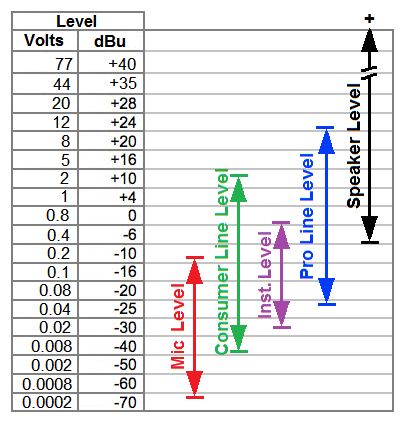
signal leakage – the phenomenon of signals escaping from a cable or network. Also known as signal egress.
signal level – (1) The level of an audio signal. There are essentially four signal levels in audio: Three input levels, (a) microphone level, (b) line level, and (c) instrument level, and one output level, (d) speaker level. These levels are, for the most part, incompatible. For example, if you plug a microphone into a line input, it will not work because it only accepts a much higher signal level. (2) The strength of a radio wave used to transmit and receive audio, data, or messages..
signal path – (1) A wire, line, or cable that carries a signal. (2) The signal flow.
signal present indicator – an indicator found on some pro audio devices that lights when the input signal level reaches a certain point.
signal processing – modifying an audio signal with various devices, such as equalizers, compressors, and limiters. Also called effects processing, audio processing, or audio signal processing.
signal processing device (SPD) – see signal processor.
signal processor – a device, circuit, or plug-in that modifies the audio signal that passes through it, such as equalizers, compressors, limiters, expanders, and gates. Also called an aignal processing device (SPD), effects processor, audio processor, or audio signal processor.
signal strength – in radio, the magnitude of the electric field at a reference point that is at a significant distance from the transmitting antenna, usually expressed in voltage per length. High-powered transmitters, such as those used in broadcasting, are expressed in dB-millivolts per meter (dBmV/m). For low-power transmitters, such as mobile phones, signal strength is usually expressed in dB-microvolts per meter (dBμV/m) or in decibels above a reference level of one milliwatt (dBm).
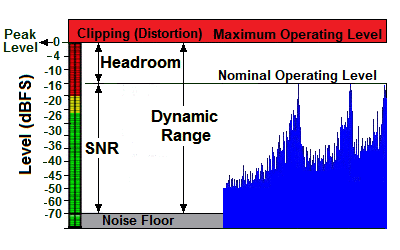
signal-to-noise ratio (S/N) or (SNR) – the ratio of the level of the nominal audio signal to the level of the background noise (noise floor), usually expressed in decibels (dB). S/N is related to dynamic range and headroom by the following formula: signal-to-noise ratio = dynamic range - headroom. See also maximum operating level.
signal-to-noise and distortion ratio (SINAD) or (S/N+D) – a measure of the quality of a signal measured in dB. It is the preferred way to specify the maximum signal to noise (dynamic range), because the noise and distortion are measured in the presence of a signal. The term was originally used with communications receivers, but now many A/D converters include it on their sheets. The abbreviation SINAD is most commonly used in the communication industry, while S/N+D is favored by the audio industry, but the terms are interchangeable.
signal to quantization noise ratio (SQNR) – a measure of quality for analyzing the digital conversion (quantization) of an analog signal. SQNR is defined as signal power divided by quantization noise power. The SQNR roughly equal to 6 times the bit depth. For example, the maximum SQNR for 16-bit resolution is about 96 dB. Also abbreviated as SNqR.
signature – see key signature or time signature.
SIL – Sound Intensity Level.
silence – (1) The complete absence of sound. (2) A sound level below the threshold of hearing. (3) To cause to become silent.
silenced note – see ghost note.
silencer – a device used to reduce the noise inside air-handling (HVAC) ducts and other systems caused by the fan and the passage of air flowing through ducts, elbows, branches, and other components. Also called duct silencer or muffler. There are several types of silencers. A dissipative silencer uses sound absorbing materials to attenuate sound waves, and is typically configured in parallel baffle arrangements. An absorptive silencer also uses sound absorbing materials to line ducts and plenum chambers. A reactive silencer (also called a reflective silencer) reflects sound waves back to the source. The simplest reactive silencer is an expansion chamber. Reactive silencers are rarely used in HVAC systems.
silent – (1) Having or making no sound. (2) Characterized by the absence of sound.
silent zone – see zone of silence.
silky – a descriptive term for a sound with high frequencies that are velvety-smooth and open. Opposite of shrill.
silvery – a descriptive term for a sound that is slightly hard or steely, but clean.
simple stereo (SS) – see joint stereo or channel coupling.
simulated stereo – using various audio processing techniques to produce two stereo channels from a monophonic recording to create the impression of a wider stereo image, but without any true directional information. This process is often used in stereo recordings to enhance certain instruments, such as acoustic guitar. However, when commercial stereophonic records were first introduced, many record companies produced simulated stereo records from existing monophonic recordings to satisfy the demand for stereo records, as well as to be able to charge a higher price. Capitol Records used the trade name Duophonic for this process, while Columbia Records used the phrase “Electronically Re-channeled for Stereo.” Other descriptions used by other labels included "Electronically Reprocessed Stereo,” “Electronically Enhanced Stereo,” “Re-channelled Stereo,” “Electronically Re-channelled to Simulate Stereo,” “Electronically Reprocessed to Simulate Stereo,” or “Electronically Re-recorded to Simulate Stereo.” In most cases, the simulated stereo recordings sounded nothing like stereo recordings and were usually not as good as the mono versions. Also called pseudo stereo, artificial stereo, electronic stereo, enhanced stereo, reprocessed stereo, mock stereo, or fake stereo.
SINAD – Signal-to-Noise And Distortion ratio.

sine wave – a waveform of a pure alternating current or voltage. A sine wave is a plot of x = sin(y) where x is the amplitude and y is the angle or phase. The phase is frequently expressed in radians where one complete cycle equals 360° or 2π radians. See also sawtooth wave, square wave, ramp wave, and triangle wave.
singer – see vocalist.
singer/songwriter – a musician who writes, composes, and performs his or her own music, both the lyrics and melody. Singer/songwriters often perform providing their own accompaniment on guitar, piano, or other instrument. Sometimes written as singer-songwriter.
single – a record released with just one song per side. Singles were issued to promote sales and airplay. Usually, but not always, the single was a song included in an album. Originally a single was issued as a 78-rpm record with one song on each side, although early on they had a song on just one side. Later the 45-rpm vinyl record became the main format for singles. Typically the side that was to be promoted was designated as the A side. With the advent of the compact disc, singles were issued for awhile on Mini CD (sometimes called “3-inch CDs”), but eventually the “5-inch” single became the norm. Singles are available today for download.
single-button carbon microphone – see carbon microphone.
single-D – see Variable-D.
single-electron transistor (SET) – a transistor that essentially passes one electron at a time. A SET uses controlled electron tunneling to amplify current. It consists of two tunnel junctions (two pieces of metal separated by a 1-nanometer thick insulator) sharing a common electrode. Electrons in one of the electrodes can only travel to the other electrode by tunneling through the insulator. The electric charge that flows through the tunnel junction is the charge of a single electron.
single-ended – an unbalanced line.
single-ended noise reduction – a noise reduction system that works only during playback. Other systems like Dolby and dbx work by applying processing during recording and reversing the process during playback.
single-ended triode (SET) – a vacuum tube electronic amplifier that uses a single triode to produce an output, in contrast to a push-pull amplifier which uses a pair of devices with antiphase.
single-pole – see slope, definition #3.
single-rate DSD – see Direct Stream Digital.
single sideband (SSB) – see sideband.
single-source loudspeaker – see coaxial loudspeaker.
single-system sound – a method of recording motion picture sound in which the sound is recorded directly onto the film in the camera at the time of shooting. Sound and picture are naturally in sync with each other. Single-system sound is commonly used for news and sports where the relatively lower sound quality is more acceptable. Video cameras use single-system sound, but may be used in double-system sound mode if audio is recorded separately.
sinusoidal – varying or appearing to vary as a sine wave.
SIP – Solo In Place.
Sirius XM Radio – a satellite digital radio service (SDARS), headquartered in New York City, with additional studios in Los Angeles and Memphis, providing pay-for-service radio to the US and Canada, analogous to premium cable television service. Originally Sirius Satellite Radio and XM Radio were competiors, but they merged in 2008 to become Sirius XM and began broadcasting a combined channel lineup a short time later.
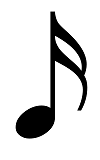
sixteenth note – a music note having one-sixteenth the time value of a whole note. In 4/4 time, the sixteenth-note is equal to a quarter beat.
sixteenth rest – a rest that has the same length as a sixteenth note.
sixth – in music, the interval that includes six positions on the music staff. (See interval number.) A major sixth has a theoretical ratio of 5:3. However, in the equal temperament system, in which the notes are spaced equally, the ratio from middle C (262.63 Hz) to A4 (440.00 Hz) is 5:3.02, or about 5 cents wider than the 5:3 ratio. While a major sixth has an interval of nine semitones, a minor sixth has an interval of eight semitones, a diminished sixth has an interval of seven semitones, and an augmented sixth has ten.
sizzle cymbal – a cymbal with rivets, metal chains, or other rattles that buzz and vibrate when the cymbal is struck.
sizzly – a descriptive term for a vocal with excessive sibilance or the sound of a cymbal with excessive high frequencies.
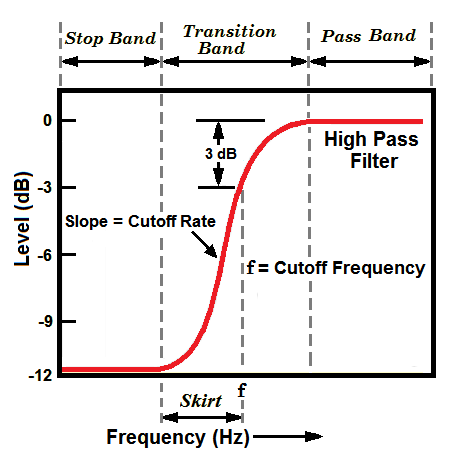
skew – see tape skew.
skin effect – the tendency of alternating current to flow with the greatest current density on the outer surface of a wire with the density decreasing toward the center of the conductor. Because the inner portion of the wire carries less current, the effective resistance of the conductor is greater at very high frequencies.
skip zone – see zone of silence.
skirt – frequencies that are on the edge of, or just beyond, a given selection. For example, the cutoff frequency of a filter is often defined as the point where the signal level is down by 3 dB. The skirt is the range of frequencies for the signal between 3 dB and remaining attenuation.
slap – see smack.
slapback – short for slapback echo.
slapback delay – see slapback echo.
slapback echo – a type of echo with relatively short spaces between repetitions of the sound, so that discrete echoes can be heard, with a delay typically between 40 and 120 ms. Slapback was originally created using tape delay and was very popular in rockabilly-style recordings in the 1950s. Sometimes spelled slap back echo. Also called spin echo, slapback delay, slap echo, slap delay, or slapback for short.
slap bass – a technique used on a double bass or a bass guitar in which the strings are hit vigorously or plucked so hard that they bounce back hitting the fret board.
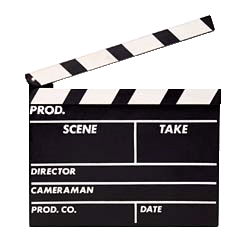
slap delay – see slapback echo.
slap echo – see slapback echo.
slash chord – a chord which uses a bass note instead of the usual root note of the chord. Slash chords are notated with a chord's standard chord symbol, followed by a forward slash and the alternate bass note, such as G/B, Am/C, or D7/F#. The first example would be spoken as “G slash B,” “G over B,” or “G with a B in the bass.” Also called a slashed chord or compound chord.
slashed chord – see slash chord.
slate – (1) The announcement recorded at the beginning of a take that identifies the song title and take number. Analogous to the slate board in definition #2. (2) In film and video work, a board with a hinged stick attached (commonly called a clapstick or clapper) onto which is written the scene and take number. The sync point is identified by the sound of the clapstick. (3) Any visual or sonic marking in a medium.
slave – (1) A device controlled by another device, especially as related to synchronization. The device providing the reference signal is said to be the master, while those linked to it are the slaves. (2) To follow a reference signal provided by a master.
slave session (SLV) – the name recommended in “Digital Audio Workstation Guidelines for Music Production” by the Producers and Engineers Wing of the Recording Academy for a reduced-track version of the master session consisting of submixes (stems) to be used for overdubbing (such as strings or backgrounds) or editing tracks (such as vocal comping) frequently sent to other systems or other studios (called an outgoing slave session). When overdubbing or editing is complete, these sessions are then imported back into the master session (called a returning slave session). There can be several slave sessions. The session should be labeled with the song title, a description of its purpose, and the abbreviation “SLV” (such as “Song Title-vocal-SLV"). The alternate name is slave project (SLV). See also master session, source session, and mix session.
slew rate (SR) – the maximum rate of change of output voltage of an audio device, expressed in volts per microsecond (V/μs). A low slew rate can create transient intermodulation distortion in the audio signal. Because a slow slew rate can result in poor transient response, slew rate and transient response are sometimes incorrectly used interchangeably.
slew rate distortion – see transient intermodulation distortion.
SLF – Super Low Frequency. The portion of the radio frequency spectrum from about 30 Hz to 300 Hz. See the radio frequency chart.

“Bottleneck”
slide – (1) A tube made of metal, glass, or ceramic that fits over a finger used to slide up and down the strings of a guitar without lifting it, in a style called a slide guitar. Also called a bottleneck because originally they were made by breaking off the neck of a bottle and sanding it down. Technically, bottleneck refers to a glass tube and slide refers to metal tube, but the terms are often used interchangeably. When used with a steel guitar, it is called a steel. (2) Short for glissando slide.
slide guitar – a guitar playing technique in which a slide is moved up and down the strings on the fretboard without lifting. This style of playing produces effects, such as glissandos, voice-like cries, and notes between the frets, which cannot be played with conventional guitar playing. Slides can be used on any guitar, but certain types of instruments are often played in this manner, such as pedal steel guitars, lap steel guitars, resonator guitars, and conventional electric guitars. Sometimes called bottleneck guitar.
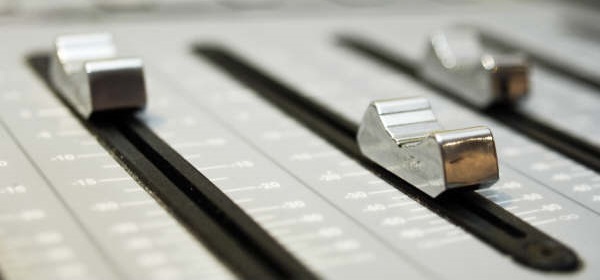
slider – a control device that regulates a signal by sliding forward and backward.
sliding loudness (S) – a loudness measurement as defined by the ITU-R BS.1770 standard, using a continously updated three-minute window. It is used for moment-to-moment adjustmets. Also called short-term loudness. See also momentary loudness and integrated loudness.
slip cue – a method of cueing a record by placing the stylus just before the cue point and holding the record stationary while the turntable slips beneath it. When it is time to be played, the record is released and playing starts at the desired point. This method of cueing was frequently used by broadcast disc jockeys before the advent of the compact disc. The loose cue was not as tight and was probably used less often.
slip mode – one of four method of editing in Pro Tools that allows you to place an audio clip anywhere you wish and that is not affected by grid or time code values. the other methods are grid mode, spot mode, and shuffle mode.
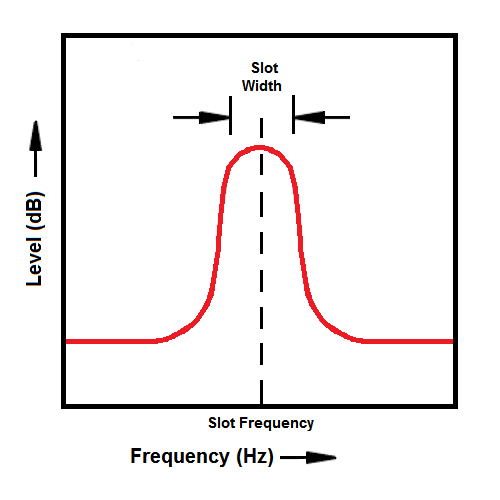
slope – (1) In a compressor, the compression ratio. (2) In an expander, the expansion ratio. (3) In a filter, the amount of attenuation at the cutoff frequency often measured in db/octave, but can be measured in order or pole. A first-order or single-pole filter has a slope of 6 db/octave, a second-order or 2-pole filter has a slope of 12 db/octave, etc. Slopes are sometimes expressed in dB/decade. Because there are 3.3219 octaves in one decade, 6 dB/octave equals 20 dB/decade, 12 dB/octave equals 40 dB/decade, etc.
slot filter – a filter that increases the level of a highly selective and narrow passband (a slot). It is the opposite of the notch filter. A slot filter is a bandpass filter with a narrow passband ((high Q facter). It is sometimes used in forensics work for isolating certain sounds, such as a phone ringing in a noisy crowd. See also lowpass filter, highpass filter, bandpass filter, allpass filter, and notch filter.
SLS – Scalable LosslesS coding. See MPEG-4 SLS.
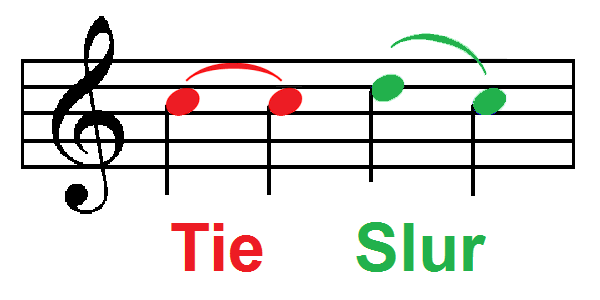
SM57 – see Shure SM57.
SM58 – see Shure SM58.
SM7B – see Shure SM7B.
slur – (1) To blend one musical note into the next. See also portamento and glissando. (2) A musical notation consisting of a curved line connecting different musical notes to indicate that they are to be slurred or blended together. It is similar to the tie, which is a curved line used to join together two notes of the same pitch to combine their durations. (3) To mark with a slur. (4) A passage played or sung in this manner. Also called glide.
smack – a slang term used by creators and listeners of electronic dance music for a portion of the bass range, which they divide into “the smack, the slap, and the drop.” The smack is the range from about 100 to 140 Hz, the slap about 50 to 100 Hz, and the drop is below 50 Hz.

small diaphragm condenser (SDC) – a condenser microphone with a small diaphragm, typically less than ¾ inch, although there is no strict size definition. Because of the smaller mass of the diaphragm, microphones with small diaphragms are able to respond faster to transients than larger ones. For this reason they are often the mic of choice for drum overheads and acoustic guitars. Although large diaphragm condensers are generally more sensitive than smaller ones due to the increased surface area, they are not better at capturing low frequencies than small diaphragms, contrary to popular opinion. Small diaphragm microphones do a good job of capturing high frequencies and have less coloration than the larger ones. Abbreviated as SDC. See also medium diaphragm condenser.
smart amplifier – a hybrid analog/digital amplifier that includes several digital-signal-processing (DSP) blocks that modify its response based on sensor inputs and a model of speaker performance. The DSP uses an adaptive control algorithm to enhance performance and provide speaker protection. Smart amplifiers can have several additional functions: Smart EQ automatically adjust high frequencies to provide a flat response or a desired response curve. Smart SOA (Service-Oriented Architecture) controls the maximum speaker diaphragm excursion and the maximum voice-coil temperature using an electromechanical-thermal model. Smart Sense receives inputs from various sensors, such as temperature, speaker voltage, speaker current, and supply voltage. Smart Bass automatically adjusts the bass response to accommodate larger excursions at higher signal amplitudes. Smart Protection adjusts amplifier characteristics to avoid over-temperature and over-excursion of the speaker.
smart bass – see smart amplifier.
Smart DMB – see digital multimedia broadcasting.
smart EQ – see smart amplifier.
smart protection – see smart amplifier.
smart sense – see smart amplifier.
smart SOA – see smart amplifier.
smart TV – a television set that contains an operating system (OS) similar to that of a computer. The OS provides the set with the ability to run and download apps, as well as the ability to stream content over the internet or home networks. Also called connected TV, hybrid TV, or intelly.
smeared – a descriptive term for (1) a sound lacking clarity or detail or (2) that has excessive leakage between microphones.
smearing – the loss of detail and clarity, especially in the midrange, often caused by nonlinear phase shift. See also transient smear and linear-phase equalizer.
smearing transients – see transient smear.
SMF – Standard MIDI File. A file exchange format used to share MIDI information between devices.
smooth – a descriptive term for a sound that is easy to listen to, having an even frequency response and a level volume that is not too punchy.
smoothing filter – see anti-imaging filter.
Smooth Streaming – an adaptive media-streaming technique, developed by Microsoft, that enables high quality streaming of media content over the internet using conventional HTTP web servers. Similar to Apple's HTTP Live Streaming (HLS) and MPEG-DASH, it is a technique used in streaming multimedia over the internet. It works by detecting a user's bandwidth and CPU capacity in real time and adjusting the quality of the stream accordingly.
SMPE – see Society of Motion Picture and Television Engineers.
SMPS – Switched-Mode Power Supply.
SMPTE – Society of Motion Picture and Television Engineers. Also the abbreviation for SMPTE time code. Pronounced “Simp-Tee.”

SMPTE/EBU timecode – see SMPTE timecode.
SMPTE leader – a film leader with the standard visual countdown preceding a movie. The SMPTE leader was introduced in the mid-1960s by the Society of Motion Picture and Television Engineers (SMPTE) to replace the Academy leader for use in both television and theater applications, although it was not widely accepted theatrically. It featured a continuous countdown from eight to two seconds using a rotating-clock-arm animation with the numbers appearing right-side-up when projected on a screen. (The Academy countdown numbers are updide-down and the countdown is in feet. There is a beep at two seconds, which is sometimes called the “2-pop.” Also called a SMPTE universal leader or universal leader. Around the year 2000, the name was changed to television leader.
SMPTE timecode – Officially known as SMPTE/EBU timecode having been adopted as a standard by the European Broadcast Union (EBU), it is often simply called SMPTE timecode. It is a family of timecodes that are almost universally used in movie, video, and audio production. It can be encoded in many different formats, including linear timecode (LTC), vertical interval timecode (VITC), AES3 embedded timecode (used with digital audio), burned-in timecode, control track longitudinal timecode (CTL), and MIDI timecode (MTC).
SMPTE universal leader – see SMPTE leader.
SMPTE VC-3 – see DNxHD.
S/MUX – Sample Multiplexing. A proprietary process licensed by Sonorus and used for transmitting high bandwidth digital audio signals using existing lower bandwidth technology. For example, using two or more 24-bit 44.1 kHz channels to transmit one 24-bit 96 kHz signal. Upon receipt these channels will be multiplexed back into one signal.
S/N – Signal-to-Noise ratio.
SN3D normalization – Schmidt Normalization 3-Dimensions. A weighting scheme, used with the ambiX format of Ambisonics, derived using a fairly complex mathematical formula. It is more widely used than N3D.
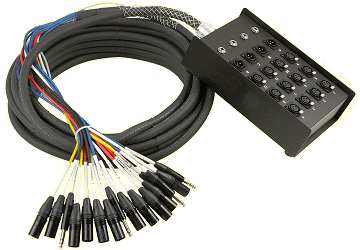
snake – a cable assembly that carries several channels of audio signals between two points, such as from a stage to a mixer. Snakes are available with and without snakeboxes. Also called a multicore cable or multi for short.
snake box – a small metal housing at the end of a snake that has connectors for each channel in the snake. Also called a stage box.
snap – (1) A function on a digital audio workstation (DAW) that causes an audio signal to align to the nearest division of a time grid. For example, a DAW can be set to snap to the nearest 0.1 second, the nearest eighth note, or other preset time division. Short for snap to grid. (2) The sharp attack of a drumstick on a snare or the beater on a kick drum. Snap can be enhanced by boosting the frequencies in the range of 3 to 6 kHz. Using a wooden or plastic-headed beater on a kick also will emphasize snap.
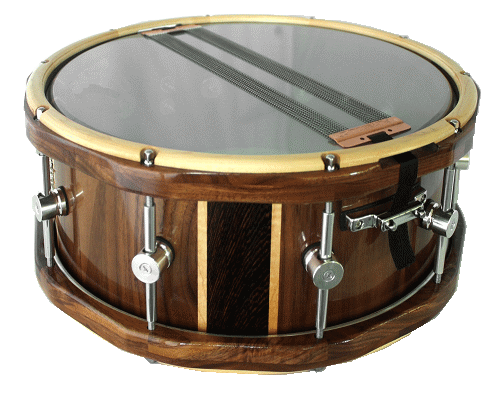
Showing Snares
snapshot – see scene, definition #1.
snap to grid – see snap.
snare – (1) One of the rattles attached to the bottom of a snare drum. Also called a snare wire. (2) Short for snare drum.
snare buzz – see snare rattle.
snare drum – a small drum in the form of a short cylinder with a membrane at each end, the upper one being struck with hard sticks and the lower one fitted with rattles (snares) made of gut, metal wire, or synthetics. Also called a side drum. Called a snare for short.
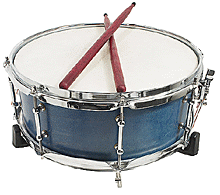
snare rattle – the sound caused by the vibration of the snares (wires) on a snare drum, which defines the characteristic sound of the snare drum. Increasing tension on the snares makes the “crack” or “snap” tighter. The pitch of the snare drumhead also affects the rattle. Also called snare buzz.
snare strainer – a device used to adjust the tension of the snares (wires) on a snare drum. Sometimes used interchangeably with snare throwoff.
snare throwoff – a device used to disconnect and make inactive the snares (wires) on a snare drum. Sometimes used interchangeably with snare strainer.
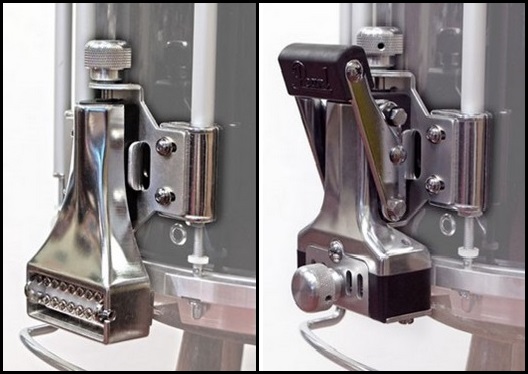
Snare Throwoff (R)
snare wire – see snare, definition #1.
.snd – a file extension for the SPARC (Scalable Processor Architecture) format. See AU format.
S/N+D – Signal-to-Noise and Distortion ratio.
SNR – Signal-to-Noise Ratio.
SOCAN – Society of Composers, Authors and Music Publishers of Canada. SOCAN is the performance rights organizations (PRO) in Canada that protects the rights of artists and publishers and collects and distributes royalties to its members. SOCAN was formed in 1990 with the merger of CAPAC (Authors and Publishers Association of Canada) and PROCAN (Performing Rights Organization of Canada). In the US, the three main PROs are BMI, ASCAP, and SESAC.
Society of Broadcast Engineers (SBE) – a professional organization for engineers involved in radio and television broadcasting. It also offers certification for members in a variety of technical areas of radio, television, audio, and video.
Society of Motion Picture and Television Engineers (SMPTE) – an international professional organization of engineers working in the motion picture and television industries. It has establisned over 600 standards, recommended practices, and engineering guidelines for television production, filmmaking, digital cinema, audio recording, information technology, and medical imaging. It was founded in 1916 as the Society of Motion Picture Engineers (SMPE).
Society of Professional Audio Recording Services (SPARS) – a professional trade group founded in 1979 consisting of manufacturers of audio recording equipment and recording service providers, to promote communication, education, and service among manufacturers and users of recording equipment.
sock cymbal – another name for a high hat.
SOFA – Spatially Oriented Format for Acoustics. A file format for storing spatially oriented acoustic data, such as head-related transfer functions (HRTFs), binaural room impulse responses (BRIRs), and directional room impulse responses (DRIRs), develped by many people in a variety of institutions. SOFA is standardized by the Audio Engineering Society (AES) as AES69-2015. SOFA provides conventions for a consistent description of stored data, so it can be exchanged between researches and users.
soffit-mounted monitors – studio monitors that are flush-mounted in a wall enclosure and are acoustically isolated from the wall and control room, sometimes found in large professional studios. The benefits of soffit mounting are: (a) the elimination of edge diffraction, which produces a smoother midrange, (b) elimination of the cancellation reflections from the wall behind the monitor, and (c) increased acoustical loading for better efficiency at low frequencies. Monitors should be designed for soffit mounting as free-standing monitors will probably sound worse when soffit mounted. Also called wall-mounted monitors or flush-mounted monitors.
soft binder syndrome – see sticky-shed syndrome.
soft clipping – see clipping.
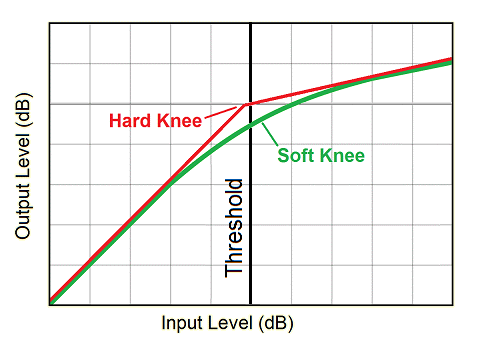
soft knee – the use of a gradual change at the threshold level in a compressor as opposed to a sharp change (called a hard knee).
soft knob – see encoder.
soft room – a room with highly sound absorptive surfaces and minimal reflections. Opposite of a hard room. See also anechoic chamber.
soft switch – short for software switch. A hardware- or software-based switch that sends a digital signal or message. Sometimes spelled softswitch.
software – computer programs, instructions, and data that can be stored electronically in a computer, as opposed to the computer itself, display, storage devices, and other devices, which are called hardware.
software audio console (SAC) – see virtual mixer.
software development kit (SDK) – a collection of software tools and programs in one installable package. They are provided by hardware and software vendors for use in building applications for specific platforms. The providers make their SDKs available to help developers easily integrate their apps with their services. Although SDKs are most often used for developing mobile apps, they can be used with websites, set-top boxes, and other digital platforms such as DAWs. Sometimes called a software development toolkit.
software instrument – see software synthesizer or virtual instruments.
software synthesizer – a computer program or plug-in that generates digital audio, usually for music. Software synthesizers are usually less expensive, more portable, and easier to interface with other music software than hardware synthesizers. Also called a softsynth, softsampler, or software instrument. See also virtual instrument.
softsampler – see software synthesizer.
softsynth – see software synthesizer.
soggy – see wooly.
SOL – Saturation Output Level.
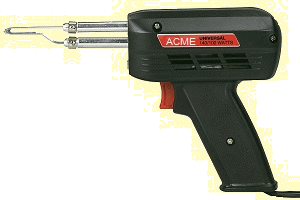
solder – (1) An alloy used to join two metal objects, such as wires and connectors, by melting the alloy while the objects are held together. (2) To join metal objects together using heat and solder.
solderless – a type of connection that does not require solder, such as screwed terminals, spring clips, or crimp connectors.
solenoid – (1) A tightly wound helical coil often wrapped around a metallic core that produces a magnetic field when an electric current is passed through it. (2) A transducer that converts electrical energy into linear motion, such as a solenoid valve, which uses a solenoid to activate a valve, or a solenoid switch, a type of relay that uses a solenoid to operate an electric switch.
solfège – see solmization.
solid-body – a string instrument, such as a guitar, bass, or violin, that has a body that is solid rather than hollow like a normal soundboard, and instead relies on an electric pickup to receive the string vibrations, which are usually amplified. The most common solid-body instruments are the electric guitar and electric bass.
solid-core wire – a wire consisting of a single strand of metal. Solid-core wire is less flexible than stranded wire, which more often is used in cables.
solid state – (1) The state of matter in which a material is not a liquid or gas, but retains its shape without support. In the solid state, atoms or molecule are unable to move freely because they occupy fixed positions with respect to one another. (2) An electronic device that uses semiconductors rather than vacuum tubes.
solid-state drive (SSD) – a data storage device that uses integrated circuits for memory to store data in place of a hard disk drive (HDD), using the same electronic interfaces making them compatible with and easy replacements for the HDD.
Solid State Logic, Ltd. (SSL) – a company founded in 1969 Colin Sanders, and headquartered in Begbroke, Oxfordshire, UK, that builds high-end mixing consoles and recording studio hardware. It is famous for the Solid State Logic SL4000 series mixing consoles. In 1988 the company became part of UEI, PLC. In 1989, UEI was acquired by Carlton Television, and SSL became part of its technology group. The company was sold to 3i in 1999. In 2005 SSL was bought by musician Peter Gabriel and broadcast industry entrepreneur David Engelke. In 2017, the company was acquired by Audiotonix.
Solid State Logic SL4000 – a series of mixing consoles introduced in 1976 by Solid State Logic, that essentially defined “the sound of the '80s.” It introduced several new features: a stereo bus compressor, full parametric equalizers, compressors on each channel, and multiple routing options.
solid-state rectifier – see rectifier..
solmization – a system of assigning a distinct syllable to each note in a musical scale. Different versions have been used in the past, and variations currently exist in other countries. However, the most common version in Europe and North America is called solfège. In English, the syllables for the diatonic scale are do, re, mi, fa, sol, la, and ti.
solo – (1) A feature on a console or DAW that routes selected channels to the output or monitor while muting others. (2) Pertaining to or done by one person alone and unaccompanied. (3) A section of music that gives special prominence to one musician. Sometimes called an instrumental solo.
solo break – a short section of music in which the accompanying instruments stop playing (breaks) while the soloist sings or plays alone (solo).
solo-in-place (SIP) – a feature of some mixers, consoles, or DAWs that functions as solo, definition #1. However, for broadcast or live situations, pressing a solo button could be disastrous because it will affect the final output. So two modes are provided each with separate outputs: solo uses Pre Fade listen (PFL) while solo-in-place uses After Fade Listen (AFL). In effect, solo-in-place is distructive (affects the output being listened to) while solo does not.
soloist – a singer or musician who performs a solo.
solo volume – a control found on some consoles used to adjust the level of a track in solo mode.
SONAR – see Cakewalk Sonar.
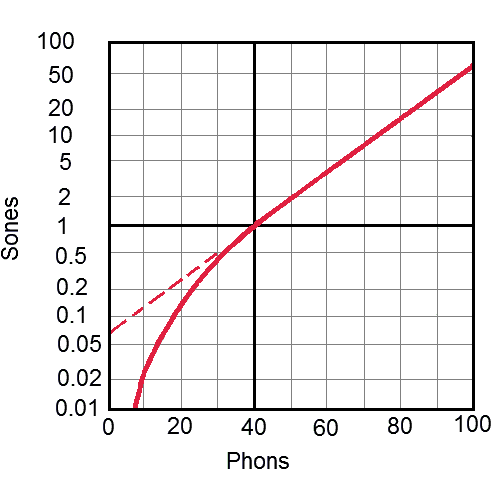
sone – a unit of perceived loudness. One sone is defined as equal to 40 phons. Because a 10-dB increase, from 40 to 50 phons sounds twice as loud, 50 phons equals 2 sones. From 40 to 60 phons sounds four times as loud, so 60 phons equals 4 sones. In a similar manner, 70 phon = 8 sones, 80 phon = 16 sones, 90 phon = 32 sones, and so on.
song – (1) A short poem or set of words (lyrics) set to music and intended to be sung, usually (though not always) accompanied by musical instruments. (2) A musical composition. (3) Singing or vocal music, as opposed to an instrumental. (4) The term used by some DAWs for a session.
song form – see musical form.
song position pointer (SPP) – a MIDI message indicating the number of sixteenth notes that have occurred since the beginning of a MIDI sequence file, used to syncronize two sequencers. Called song pointer for short.
song structure – see musical form.
Songuard® – an alternative to copyright registration by the US Copyright Office. The service is available from songuard.com and provides proof and verification of the date of creation, which is essential evidence in the event of an infringement case. A song writer upoads the the melody, lyrics, and writer information for his or her song to the website. The submission receives a date and time stamp along with an encrypted digital signature. An email confirming registration is sent to the submitter. The submission is stored permanently on their secure servers. The song is then protected and the submission can be used to prove date of creation. Songuard does not review the content that is registered. The cost currently is $3.95 per song, much lower than the Copyright Office.
songwriter – see composer.
sonic – pertaining to sound.
sonic barber's pole – see Shepard tone.
sonic barrier – see soundproofing.
Sony 1630 – see Sony PCM-1630.
Sony 360 Reality Audio – Sony's version of immersive audio that uses their 360 Spatial Sound technology to dynamically place and control individual sounds in a 360° spherical sound field to provide sound to listeners from every direction.
Sony/ATV Music Publishing – a music publishing company co-owned by Sony and the estate of Michael Jackson. The company was originally founded as Associated Television (ATV), but was purchased by Michael Jackson in 1985.
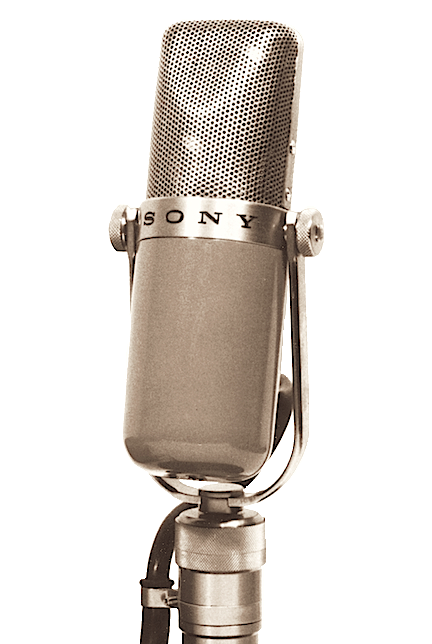
Sony C37A – the first large-diaphragm multi-pattern tube condenser microphone developed by Sony, first produced in 1955 and introduced in the US in 1958. Using a 37-mm diameter 6-micron C-3 capsule, it was designed to compete with the Neumann U 47 and the AKG C12, which dominated the professional recording industry in the 1940s and 1950s. Unlike the U 47 and C12, which had brightness bumps, the 37A had two frequency dips (centered approximately around 1 kHz and 7 kHz) that easily softened strident sources. With its soft, rounded low end, these dips produced a richer, darker tonality with an almost ribbon-like smoothness that worked wonders on many voices and instruments. The C-37A also used a tuned acoustic baffle method of switching between cardioid and omni polar patterns that was developed by RCA in the 1930s.
Sony Corporation – a multinational conglomerate headquartered in Tokyo, Japan, whose business is primarily focused on the electronics, game, entertainment, and financial services sectors.
Sony Dynamic Digital Sound (SDDS) – a digital surround-sound format for motion pictures developed by Sony. The SDDS soundtrack is optically printed on both edges of 35mm film. In addition to the usual 5.1 format, SDDS provides for two additional channels: left-center and right-center. The additional two speakers deliver more uniform sound, especiallly for wide-format screens.
Sony PCM-1630 – a digital format developed by Sony using a ¾-inch U-Matic videocassette that at one time was used to store masters for compact discs using 44.1-kHz PCM. Besides the music data, it contained additional information such as time codes to mark track locations. This data would be directly transferred to a glass master. It is rarely used anymore as it has been replaced by other formats such as the CD-R.
soprano – (1) The highest vocal range of the adult female voice, usually a range from about Middle C to High A (C4 to A5) or above. (2) The musical range above alto. (3) A singer whose voice is within this range. (4) A musical instrument that plays within this range. (5) A vocal or instrumental part written in this range.
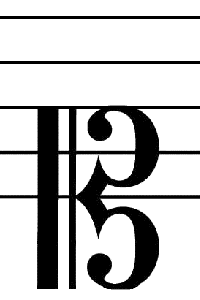
soprano clef – the symbol on a music staff indicating that the bottom line on the staff represents the pitch of middle C. One of five C clefs, the soprano clef is mostly obsolete now.
SOT – Sound On Tape. Any audio recorded on analog or digital video formats, a term used primarily in television and film production. See also NATSOT.
sound – (1) A pressure wave (an organized movement of molecules forming compression and rarefaction zones) moving through air caused by a vibrating object. Sound can also be transmitted with similar characteristics in other materials, such as water or wood. Sound is also a mechanical wave and a longitudinal wave. (2) The auditory sensation produced by the ear by pressure waves in a medium vibrating between 20 and 20,000 times a second. Both definitions #1 and #2 are similar with the first being the cause and the second being the result. (3) A soundwave. (4) Any audible vibrational effect, such as a sound that occurs in nature or a sound effect used to emulate such a sound.
sound-absorbent material – see absorber.
sound absorption – see absorption.
sound-absorption material – see absorber.
sound absorption coefficient (SAC) – see absorption coefficient.
sound attenuation – see sound reduction.
sound baffle – see soundproofing.
soundbank – a collection of sounds, such as virtual instruments and MIDI files.
sound barrier – see soundproofing.
sound baffle – see baffle, definition #3.
soundbite – a term used by some DAWs to indicate a very small section of an audio file. It is somewhat of a pun on the broadcast term for a small segment of audio or film footage taken from a longer speech or interview. Other DAWs may be refer to this as a region, event, segment, zone, or clip. Sometimes spelled sound bite.
sound blanket – a thick, sound-absorbent cloth that can be spread on the floor or hung to reduce undesired reflections, echoes, or reverberation. Also called a acoustic blanket.
sound blimp – see blimp, definition #1.
soundboard – a resonant piece of wood located under the string assembly of a piano or other instrument that reflects sound away from it and gives it its characteristic sound. Also spelled sound board. Sometimes called a sound box.
sound box – see soundboard.
sound card – a circuit board (card) in a computer that converts data into audio signals and audio signals into data.
sound check – a procedure carried out before a performance or recording to make sure all equipment is working properly and to set sound levels at the appropriate level. See also line check.
Soundcraft – a company that designs, sells, and manufactures mixing consoles and other professional audio equipment, headquartered in Hertfordshire, UK. It was founded as Soundcraft Electronics Ltd. in 1973 by Phil Dudderidge and Graham Blyth. It as acquired by Harman International in 1988.
sound design – the process of specifying, acquiring, manipulating, and generating the various audio elements to be included in a movie, television program, video game, live performance, and other productions. Sound design involves the five elements of a soundtrack: dialog (including narration), music, sound effects, ambient sound (sometimes included with sound effects), and Foley.
sound designer – (1) A person who works with the director to shape an overall, consistent soundtrack. (2) The person responsible for sound design, and who supervises the sound editing and re-recording. (3) A person hired to create a paricular kind of sound effect. See also sound DP/D
Sound Designer – see Digidesign.
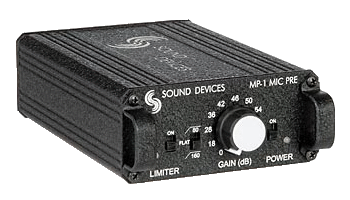
Sound Devices MP-1 – a portable, battery-powered microphone preamplifier with phantom power, designed for field recording. It is one of the few high-quality battery-powered preamps on the market.
sound diffuser – see diffuser.
sound director – the professional in charge of sound in a project in the filmmaking or television business. A sound director oversees every element of audio used in the production, basically DME (dialog, music, and effects). He or she is usually hired by the producer or manager of a project and usually begins working in the preproduction stage, before filming begins. Sometimes called an audio director. See also sound DP/D
sound DP/D – sound director, sound producer, and sound designer, an all-encompassing position in sound for film or television.
sound editor – (1) A person who selects and mixes dialog, music, and sound effects in preparation for the final mix for film, video, or video games, typically using a digital audio workstation (DAW). Sometimes called a supervising sound editor or cutter. (2) Software used to digitally edit audio files using a computer. Also called an audio editor.
sound effects – sound other than music, narration, or dialog used in a movie or TV soundtrack, such as the sound of gunshots, footsteps, and crashes. Sometimes called just effects. Often abbreviated SFX for sound effects or simply FX for effects. See also Foley and special effects.
sound energy – a form of energy associated with the vibration of matter, expressed in joules (J) or watt-seconds(W-s). Sound is a mechanical wave and consists of compression and rarefaction of air (or other medium). Therefore, the medium stores both potential and kinetic energy.
sound energy density (w) – the time-averaged sound energy per unit volume, expressed as joules per cubic meter (J/m3) or watt-seconds per cubic meter (W-s/m3). Sound energy density is defined as E = I/c, where I is the sound intensity in W/m2 and c is the speed of sound in m/s.
sound energy density level – is a logarithmic indication of the sound energy density relative to a reference value of 10‑12 joules per cubic meter (J/m3) or watt-seconds per cubic metter (W-s/m3). Sound energy density level (LE) in dB is defined by LE = 10 log (E/E0), where E is the sound energy density and 0 is the reference sound energy density.
sound energy flux density – see sound intensity.
sound energy level (Lw) – a logarithmic indication of the sound energy relative to a reference value of 10‑12 joules. Sound energy level (Lw) in dB is defined by Lw = 10 × log (W/W0), where W is the sound energy and W0 is the reference sound energy.
sound engineer – a specialist skilled in the use and techniques of recording, mixing, reproducing, and amplifying sounds, whether live or in the studio. Also called an audio engineer, audio technician, audio technologist, sound operator, or sound technician. Although these terms are often used interchangeably, they can mean different things depending on the context. Compare with audio engineer, recording engineer, or studio engineer
SoundExchange – a non-profit performance rights organization (PRO) formed in 2003 to collect and distribute royalties for owners of copyrighted sound recordings (SRCO) that are digitally transmitted over satellite, internet radio, music channels on cable TV, and other media. The Digital Performance Right in Sound Recording Act of 1995 and the Digital Millennium Copyright Act of 1998 established performance rights for sound recordings that are transmitted digitally and required digital music providers to pay the SRCOs for such transmissions. Prior to the passage of these laws, these providers were not required to pay royalties.
sound exposure – the A-weighted sound pressure, squared and integrated over a stated period of time, expressed in units of pascal squared-second (Pa2-s). Although the SI unit is Pa2-s, the practical unit used in most sound exposure meters is the pascal squared-hour (Pa2-h or Pa2-hr). Also called acoustic exposure.
sound exposure level (SEL) – the logarithmic measure of the sound exposure of a sound relative to a reference value of 400 μPa2-s (for sound in air). Sound exposure level (LE) in dB is defined by LE = 10 x log (W/W0), where W is the sound exposure and W0 is the reference sound exposure. When A-weighted, it is sometimes designated, as LEA. The sound exposure level is often designated dB-SEL, dB(SEL), dBSEL, or dBSEL, although these are not recognized by the SI. Usually the SEL is normalized to a 1-second period and it is also referred to as the sound exposure level, which can lead to confusion if not clearly stated. Also called acoustic exposure level.
sound exposure meter – an instrument designed to measure sound exposure level, commonly used in the study of noise pollution and measurement of noise in industrial and workplace environments. Also called a integrated sound level meter (indicating the measurement is taken over some time period), sound level meter, sound meter, or noise dosimeter.
sound field – the area in which sound is perceived by the ear, analogous to the visual field for vision.
SoundField by RØDE – a plug-in developed by RØDE for ambisonic processing. It is used to convert the four signals (the A-format) produced by a tetrahedral microphone into a second set of signals (the B-Format) of the Ambisonics surround-sound technology. The plug-in also allows the user to quickly create mixes for all the common surround-sound formats, from 5.1 through to 7.1.4, as well as custom formats and speaker arrays.
SoundField microphone – see tetahedral microphone.
SoundField, Ltd. – see tetahedral microphone.
sound file – see audio file.
sound follower – a device used in filmmaking for recording and playing back sound using magnetic film. It is synchronized with the film containing the motion picture. A sound follower operates like an reel-to-reel audio tape machine, but uses magnetic film instead of magnetic recording tape. Also called a separate magnetic (sepmag), magnetic film recorder, or mag dubber.
Sound Forge – a sound editing software application for creating and editing audio files. It can be used to record, edit, mix, and restore multichannel audio and is compatible with most audio file formats. Sound Forge was developed by Sonic Foundry, which sold it to Sony in 2003. In 2016, it was acquired by Magix.
sound generator – (1) A vibrating object that produces a sound, which can be divided into two main classes: (a) a vibrating or oscillating piston, such as the soundboard of a piano, the head of a drum, the surface of a cymbal, and the diaphragm of a loudspeaker, and (b) the sound made by wind instruments, such as trumpets, organs, saxophones, flutes, and trombones, which depend upon vibrating lips, reeds, or columns of air. (2) An electronic sound module or a musical synthesizer usually containing an integrated circuit or microchip, that can receive MIDI commands and produce sound.
sound incidence angle – see angle of incidence.
sound intensity (I) – the sound power per unit area measured in watts per square meter (W/m2) at the listener's location. Sound intensity is not the same as soundpressure. Hearing is directly sensitive to sound pressure, which is related to sound intensity, but sound intensity cannot be sensed by a simple microphone, whereas sound pressure can. Sound intensity is the sound energy passing per second through a unit area perpendicular to the direction of propagation of a sound wave. Sound intensity in the direction of the sound force is related to sound power by the formula I = p/A, where p is the sound power and A is the area. Sometimes designated by the Greek letter β (beta). Also called acoustic intensity or sound energy flux density.
sound intensity level (SIL) – the logarithmic measure of the sound intensity relative to a reference value of 10‑12 W/m2. Sound intensity level (LI) in dB is defined as LI = 10 x log (I/I0), where I is the sound intensity and I0 is the reference sound intensity. The reference sound intensity I0 was chosen so that that the sound intensity level would have the same value as the sound pressure level (SPL), using the relationship I/I0 = p/p0, where p is the sound pressure and p0 is the reference sound pressure of 20 μPa, the threshhold of human hearing. The sound intensity level is often designated dB-SIL, dB(SIL), dBSIL, or dBSIL, although these are not recognized by the SI. Also called acoustic intensity level.
sound level – an ambiguous term that often depends on who is using it. For sound engineers, it usually means sound pressure level (SPL). For acousticians, acoustical engineers, and those involved in noise reduction, it often means sound power level or sound intensity level. While these terms are similar, they are different and can lead to confusion.
sound level meter – (1) An instrument used to measure sound pressure level, an indication of the strength of sound in air, usually expressed in dB-SPL. It is usually a hand-held instrument consisting of a microphone that responds to changes in air pressure caused by sound waves. The sound pressure deviation is converted into an electrical voltage which is displayed as sound pressure level in dB-SPL. Sometimes called a sound pressure level meter, SPL meter, sound meter, decibel meter, or dB meter. (2) A sound exposure meter.
sound library – a collection of sounds and sound effects that have been previously recorded and stored in files that can be retrieved for use at a later time. Such sound can be stored on analog tape or digitally on CDs, DVDs, or as digital audio files. See also sample library.
sound localization – see localization.
sound meter – see sound level meter or sound exposure meter.
sound mixer – the person on a film or television crew responsible for all aspects of sound production including hiring of sound technicians and boom operators, managing sound equipment including microphones, wireless systems, booms, consoles, audio storage, headphones, and cables, and providing syncing and timing. Also called production sound mixer, location sound recordist, or location sound engineer. See also sound re-recording mixer and mix engineer.
sound module – the part of a synthesizer that uses a signal generator to create and send out sounds according to the MIDI data it receives.
sound occlusion – see occlusion effect.
sound-on-sound – see overdub.
sound operator – see sound engineer.
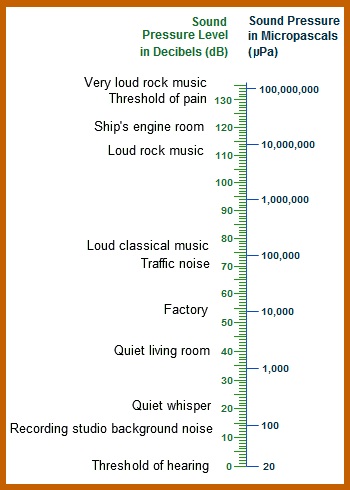
sound patch – a collection of settings for synthesizer parameters used to achieve a particular sound. Called patch for short.
sound power (P) – the power emitted by a sound source measured in watts or the energy emitted per unit time in joules per second. Sound power is neither room-dependent nor distance-dependent. It is a theoretical value that cannot be measured, but only calculated. A sound source produces sound power and this creates a sound pressure fluctuation in the air. Sound power is the distance-independent cause of a sound source, whereas sound pressure is the distance-dependent effect. Also called acoustic power.
sound power level (SWL) – a logarithmic indication of the sound power relative to a reference value, 10‑12 watts. Sound power level (Lw) in dB is defined by Lw = 10 x log (p/p0), where p is the sound power and p0 is the reference sound power. The sound power level is often designated dB-SWL, dB(SWL), dBSWL, or dBSWL, although these are not recognized by the SI.
sound pressure (p) – the local pressure deviation from the ambient atmospheric pressure caused by a sound wave, measured in pascals (Pa). It is used to indicate the sound level in the air (or other medium) at a listener's location. Sound pressure is not the same as sound intensity. Hearing is directly sensitive to sound pressure, which is related to sound intensity, but sound intensity cannot be sensed by a simple microphone, whereas sound pressure can. Sound pressure (p) is defined as p = pt - ps, where pt is the total pressure and ps is the static pressure. See chart of a comparison of sound pressure, sound pressure level, and sound intensity. Also called acoustic pressure.
sound pressure level (SPL) – a measure of the strength of a sound as indicated by the logarithm of the sound pressure of a sound wave relative to a reference value, 20 μPa, the threshhold of human hearing. Sound pressure level (Lp) in dB is defined as Lp = 20 x log (p/p0), where p is the sound pressure and p0 is the reference sound pressure. The sound pressure level is often designated dB-SPL, dB(SPL), dBPL, or dBSPL, although these are not recognized by the SI.
sound pressure level meter – see sound level meter.
sound pressure wave – see sound wave.
sound producer – the professional in charge of managing the costs associated with sound in a project in the filmmaking or television business. A sound director discusses the schedule daily with the production team and maintains the calendar for sound. Not to be confused with a music producer. See also sound DP/D
sound propagation – the transmission of sound waves through various media, such as air, water, and solids. See also sound transmission.
soundproof – (1) Impervious to the transmission of sound. In actuality, very few spaces are truly soundproof, but rather they are sound resistant. See also acoustic barrier. (2) To make a space impervious to the transmission of sound.
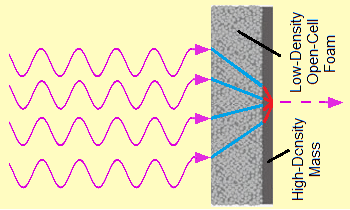
soundproofing – a material or a design that impedes the transfer or propagation of sound. Soundproofing prevents sound from entering or leaving a space, while acoustic treatment is designed to make a space sound better. Also called acoustic barrier, acoustic insulation, acoustic isolation, isolation, noise barrier, baffle, sound baffle, sound barrier, or sonic barrier. See also room-within-a-room.
sound quality – the degree of accuracy with which a device records or reproduces the original sound waves.
sound recording – as defined by the US Copyright Act, “works that result from the fixation of a series of musical, spoken, or other sounds, but not including the sounds accompanying a motion picture or other audiovisual work.” A sound recording copyright protects the sounds that are recorded from unauthorized use. A sound recording is not the same as a phonorecord, the physical object in which such works are fixed or recorded. Also called a phonogram.
sound recordist – see recordist.
sound reduction – the decrease in the sound pressure level (SPL) between any two points along the path of sound propagation, due to absorption, scattering, and other mechanisms, such as the reduction in SPL as sound passes through a wall. Also called sound attenuation or transmission loss. See also noise reduction.
sound reduction index (SRI) – a rating system used in countries except the US indicating the ability of interior building partitions (ceilings, floors, doors, windows, and walls) to reduce the level of airborne sound, roughly equal to the number of decibels of sound reduction provided by the partition. In the US, the sound transmission class (STC) is normally used. Although similar, the calculation of the STC and SRI produces slightly different results.
sound reinforcement (SR) – the system used to amplify voice or music at a live performance so that it can be heard by an audience and consists of microphones, amplifiers, loudspeakers, and other associated equipment.
sound reflection – see reflection.
sound re-recording mixer – a post-production audio engineer who mixes dialog, sound effects, and music to create the final version of a soundtrack for a movie or television production. Also known as a dubbing mixer in Europe. See also sound mixer and mix engineer.
Sound Retrieval System® (SRS) – a proprietary surround sound system owned by SRS Labs that can be reproduced through a pair of ordinary stereo speakers.
sound shadow – see zone of silence.
sound shield – see reflection shield.
sound signal – see audio signal.
sound source – (1) Any object from which sound emanates. Sound emanates from something vibrating, such as a string, a column of air, the cone of a loudspeaker, or vocal cords. A simple sound source emits sound uniformly in all directions under free-field conditions. A complex sound source is composed of various sources with multiple frequencies and directivity patterns. (2) An audio source.
sound spectrum – see audio spectrum.
sound stage – (1) An area in a movie studio for filming with acoustic properties suitable for recording sound. Besides having a low noise level and a low reverberation time, the cameras and other equipment are designed for quiet operation. (2) An acoustic image presented to the listener, which has sound emanating from the center, left, right, far left, and far right. Sometimes spelled soundstage. See also stereo image.
sound stripe – a narrow strip of magnetic material applied to one edge of motion picture film for recording the film soundtrack. All 70-mm release prints of motion pictures use a magnetic soundtrack, as well as some 35-mm prints.
sound studio – see recording studio.
sound synthesis – the electronic creation of sound with a synthesizer using various techniques such as additive synthesis, subtractive synthesis, sample synthesis, AM synthesis, FM synthesis, and wavetable synthesis.
sound system – the equipment needed to reproduce and amplify sound, such as microphones, amplifiers, speakers, and other devices.
sound technician – see sound engineer.
Sound Tools – see Digidesign.
soundtrack – (1) The audio sound used on film or video. Film soundtracks can be analog or digital. Analog soundtracks use variable area, in which the width of a line varies with the soundwaves of the sound. When played back, light passing through these variation are converted into sound. With a digital soundtrack, soundwaves are converted into a digital signal which are represented as tiny dots on the track. When played back, the digital data is converted back into sound. (2) The dialog, music, and sound effects (DME) used in a movie. (3) Short for soundtrack music. Sometimes spelled sound track.
soundtrack music – see underscore.
sound transmission – the passage of sound from one point to another, such as from one room in a building to another, or from the exterior to the interior of a room. See also sound propagation.
sound transmission class (STC) – a rating system used in the US indicating the ability of interior building partitions (ceilings, floors, doors, windows, and walls) to reduce the level of airborne sound, roughly equal to the number of decibels of sound reduction provided by the partition. Outside the US, the sound reduction index (SRI) is normally used. Although similar, the calculation of the STC and SRI produces slightly different results.
sound transmission loss – see sound reduction.
sound velocity – see particle velocity.
sound velocity level (SVL) – a logarithmic indication of the effective particle velocity of a sound relative to a reference value, usually the particle velocity in air of 5 × 10-8 meter per second (m/s). Sound velocity level (Lv) measured in decibels (dB), is defined as Lv = 20 × log10 (v/v0) where v is the root mean square particle velocity, v0 is the reference particle velocity. The proper notations for sound velocity level using this reference are Lv/(5x10-8 m/s or Lv(re 5x10-8 m/s), but the notations dB-SVL, dB(SVL), or dBSVL are very commonly used, even if they are not accepted by the SI. Also called acoustic velocity level or particle velocity level.
soundware – packages of sounds (available for free or a fee), such as sound libraries, sampled loops, virtual instruments, and presets for synthesizers, that can be loaded into DAWs and other audio devices.
soundwave – the periodic variations (compressions and rarefactions) radiating from a sound source. Sound is a pressure wave, a mechanical wave, and a longitudinal wave. The sound source is something vibrating, such as a string, a column of air, the cone of a loudspeaker, or vocal cords. Sometimes spelled sound wave. Also called an acoustic wave, audio wave or sound pressure wave.
source – see audio source or sound source.
source cue – see source music.
source music – music that is actually in the scene of a movie as opposed to the musical score. For example, it may be music from a radio, car stereo, or a juke box. Usually the music is not played while the actors are performing as the source music is normally added in the dubbing session. Also called source cue or diegetic music. See also diegetic sound.
source project (SRC) – see source session (SRC).
source session (SRC) – the name recommended in “Digital Audio Workstation Guidelines for Music Production” by the Producers and Engineers Wing of the Recording Academy for sessions that have been retired, containing all the original source takes or tracks that have been comped or submixed down to tracks to be used in the master session. Once these tracks are no longer needed, they are taken out of the master session and kept in the source sessions for future reference. The source session should be labeled with the song title, a description of the tracks removed from the master session, and the abbreviation “SRC” (such as “Song Title-Lead Gtr- SRC”). There can be many source sessions. The alternate name is source project (SRC). See also master session, source session, and mix session.
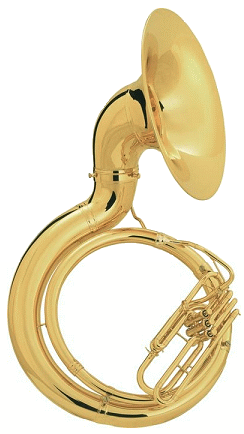
sousaphone – a large brass instrument of the tuba family with a wide bell pointing forward and circular coils that rest on the player's left shoulder and right hip. It is essentially a marching tuba. It is named after John Phillip Sousa, who used it in his marching bands. See also tuba.
South by Southwest (SXSW) – a series of festivals and conferences on movies, interactive media, and music held each year in March in Austin, Texas. The SXSW music festival has grown to be one of the largest of its kind in the world.
SP – Standard Play or Short Play. The designation that was applied to 78-rpm records upon the introduction of the long play (LP) record. The LP, with its then new microgroove technology could hold up to 20 minutes or more per side, compared to only 2 to 3 minutes for 78s.
spaced cardioids – see spaced pair.
space diversity – see diversity.
spaced microphones – the same as spaced pair.
spaced omnis – see spaced pair.
spaced pair – a group of stereo microphone techniques in which two or more microphones are separated by several feet (one-third to one-half the width of the sound stage) and are pointed directly at the sound source. This technique provides very good stereo perspective, but can result in poor mono compatibility. Techniques in this group include: spaced cardioids, using cardioid microphones, spaced omnis, using omnidirectional microphones, Decca tree, using three microphones, and sometimes A-B. See also coincident pair (Blumlein array, mid-side, and X-Y pair) and near-coincident pair (A-B, DIN, EBS, Faulkner array, NOS, ORTF, and RAI). See also table comparing various stereo microphone techniques.
space echo – see repeat echo.
spacious – a descriptive term for a sound having appropriate reverberation to convey the sense of openess or ambience in a room.
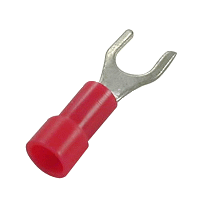
spade connector – a flat U-shaped connector that is connected by tightening a screw or bolt over it. The spade connector makes connections easier because the screw or bolt can be left partially unscrewed when the connector is attached or removed, unlike the ring connector where the screw or bolt must be completely removed. Also called spade terminal, fork terminal, fork connector, split-ring connector, or split-ring terminal.
spade terminal – see spade connector.
SPARC audio file – Scalable Processor Architecture audio file. See AU.
spark gap – a device consisting of two conducting electrodes separated by a gap usually filled with a gas such as air, between whcih an electric spark passes. When a spark occurs, an electric current flows creating heat, light, sound (ranging from a snap for a spark plug to thunder for a lightning discharge), and an electromagnetic wave.
spark-gap transmitter – a device for generating radio frequency electromagnetic waves using a spark gap. These device were the first practical means of radio transmission, and from 1887 to 1916, they served as the transmitters for most wireless telegraphy systems. Later on, more efficient transmitters were developed, such as arc generators and alternators.
SPARS – Society of Professional Audio Recording Services.
SPARS code – the three-letter classification system developed in the early 1980s by SPARS to denote the method for recording, mixing, and mastering compact discs. The code uses an “A” for analog and a “D” for digital for each process. For example, a code of ADD indicates a CD recorded and mixed on analog equipment and mastered digitally. (The final letter is alway a “D” for a compact disc.) SPARS withdrew endorsement of the code in 1991 because the code was overly simplistic and did not accurately reflect the complexity of the recording and mixing processes. However, when many record labels continued using the code, SPARS re-endorsed the code in 1995.
spatial – (1) Pertaining to space. (2) A decription of the placement or spread in a stereo or surround-sound field. (3) An attribute on some reverb or delay effects to adjust depth or width.
spatial audio – a variety of technologies used to create the spaciousness of sound in either a real venue (such as a live concert) or in a synthetic environment using digital signal processing (DSP) techniques. Spatial audio is a broad term that includes immersive sound, 3D sound, surround sound, and stereophonic sound. It can include environmental sounds, multi-speaker systems, and other techniques.
spatial filtering – see beamforming.
spatialization – the ability to reproduce sounds that seem to be emanating from specific points in three-dimensional space, including both the direction and distance of the sound. Spatialization is used to create the the directional cues used in stereophonic sound, surround sound, 3D sound, and immersive sound. One method of creating spatialization is to use head-related transfer functions (HRTFs). See also localization and spatial audio.
spatial processor – an audio processor that places sounds at various places within and beyond a normal stereo image—even to the left and right of the speakers and behind the listener.
SPD – (1) Signal Processing Device. See signal processor. (2) Spectral Power Distribution.
S/PDIF – Sony/Philips Digital Interface. A consumer audio standard developed jointly by Sony and Philips, which provides the technical details for transmitting two channels of digital audio over a cable at sample rates up to 192 kHz. It is now designated as AES3 Type II when using an unbalanced coaxial cable with RCA connectors or Type III when using a TOSLINK optical cable. Although the data format is identical to AES3 (formerly AES/EBU), some bits in the data blocks have different meanings, which can make the two interfaces incompatible with some equipment. It is recommended to use appropriate converters when connecting AES3 and S/PDIF devices. Sometimes shown as SPDIF. See also chart comparing AES3 and S/PDIF.
speaker – short for loudspeaker.
speaker array – see line array
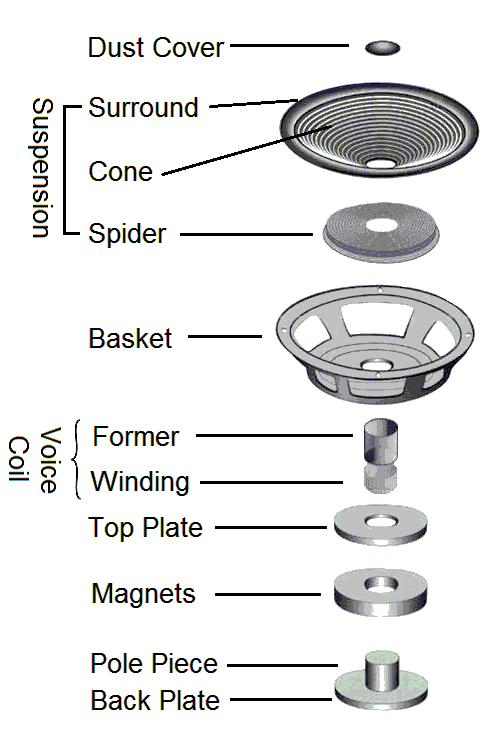
speaker as microphone – a loudspeaker used in reverse. That is, using a speaker to convert sound into a signal, rather than the other way around. Engineers have sometimes used this technique on kick drums in order to capture the low-end thud. However, they are not very good at capturing detail, so additional microphones are often required.
speaker basket – the rigid frame to which the various components of the speaker driver are mounted. (See diagram at right.) Commonly made of stamped steel, cast aluminum, or plastic, it is designed to keep the driver components aligned properly. The basket also helps to dissipate heat away from the voice coil. It often includes a flange used to mount the driver to a baffle or enclosure. Baskets can be either sealed back or open back designs. (See diagram at right.) Also called the speaker frame or speaker chassis.
Speaker Boundary Interference Response (SBIR) – an acoustic phenomenon caused by the destructive interference of the direct sound wave from a speaker and the indirect sound wave reflected from nearby boundaries, such as walls, ceilings, and floors. It results in dips in bass response of the speaker. The only way to overcome SBIR is to flush mount studio monitors in a hard, rigid wall. See also Allison effect.
speaker box – see speaker enclosure.
speaker cabinet – see speaker enclosure.
speaker chassis – see speaker basket.
speaker cone – a transducer in a loudspeaker consisting of a usually cone-shaped, thin membrane or sheet made of a variety of materials that converts electrical energy into sound. As the cone vibrates it imparts changes in the air pressure resulting in sound waves. (See diagram at right.) Sometimes called a speaker diaphragm.
speaker diaphragm – see speaker cone.
speaker diffraction – see diffraction, definition #2.
speaker dispersion pattern – see radiation pattern.
speaker driver – see driver.
speaker enclosure – an engineered box designed for mounting loudspeaker systems and includes the speaker drivers, crossover network, and sometimes amplifiers. Enclosure designs range from simple, rectangular boxes made of particle-board to very complex cabinets made of wood or composite materials with internal baffles, ports, and acoustic insulation. The design of a speaker enclosure has significant impact on the quality of the sound produced. The enclosure should be designed to minimize the effects of out-of-phase sounds emanating from the rear of the speaker driver from combining with in-phase sounds from the front of the driver. Other factors affecting enclosure design include enclosure resonance, edge diffraction, and standing waves within the enclosure. Some common enclosure designs include acoustic suspension (sealed enclosure), bass reflex (ported enclosure), and transmission line enclosure. Also called loudspeaker enclosure, loudspeaker cabinet, speaker cabinet, or speaker box.
speaker frame – see speaker basket.
speaker gap – see gap, definition #3.
speaker grille – see grille.
speakerhead – slang for a sound engineer. Sometimes called a humhead.
speaker horn – see horn loudspeaker.
speaker level – the amplified signal from the output of a power amplifier used to feed a speaker. This signal is usually measured in watts and has a voltage level many times higher than instrument level, mic level, and line level. See also signal level.
speaker magnet – the permanent magnet in a speaker driver that surrounds the voice coil. The magnet and voice coil work together to cause movement of the cone to produce sound. Early loudspeaker designs used an electromagnet for this purpose, but they proved to be too bulky and impractical. The voice coil itself is actually an electromagnet, being a coil of wire wrapped around a cylinder called the former. (See diagram.)
speaker motor – the parts of a speaker driver that produces sound (cone motion), which includes the magnet, the pole piece, the gap, and the voice coil. The gap is the area between the pole piece and the magnet, into which the voice coil fits. (See diagram.)
speaker out – short for speaker output.
speaker out direct – using the speaker output of an instrument amplifier to feed a recording console or DAW without using a microphone. See also DI.
speaker output – an output jack on a device that provides speaker-level signals. Called speaker out for short.
speaker placement – placing studio monitors in such a manner as to have the most accurate sound reproduction and minimal effects from the room. There are a number of rules of thumb for placing studio monitors: (1) A speaker should be placed 2 to 3 feet from the wall, in order to not emphasize the bass (called free-standing or free-space placement). (2) Left and right speakers should be the same distance from the left and right walls, repectively. (3) The listener should face speakers placed on the shorter wall (with the longer walls on the left and right). (4) The angle between stereo speakers and the listener should be 60° (30° on each side), forming an equilateral triangle between the speakers and listener. (5) To minimize the effects of room reflections, the distance from the speakers to the listener should be about 6 feet for larger midfield monitors and about 3 feet for smaller nearfield monitors, which minimizes the effects of room reflections. (6) The height of the monitor should have the tweeter at ear level (ear-level monitoring).
speaker radiation pattern – see radiation pattern.
speaker stack – see line array
speaker surround – see surround.
speaker suspension – see suspension.
speaker system – see loudspeaker system.
Speakon® – a trademark of Neutrik for a type of cable connector used in professional audio systems to connect loudspeakers to amplifiers. It is now considered an industry de facto standard.
special effects – articial visual and sound effects presented in motion pictures, video productions, and video games to simulate real or imaginary scenes and events, often using illusions or visual tricks. Often abbreviated as SFX for sound effects, SPFX for special effects, or simply FX for effects.
specifications – (1) A statement of precise requirements or a precise description identifying something. (2) A detailed description of the design and materials used to make something. (3) A standard list of operational measurements, capabilities, and parameters that a product or piece of equipment should meet. Called specs for short.
specific conductance – see conductivity.
specific magnetic moment (σ) – the value of the saturation moment per unit weight of a magnetic material, expressed in emu/g. The specific magnetic moment is used to express the saturation magnetization of fine-particle magnetic materials, such as magnetic coatings on recording tape.
specific resistance – see resistivity.
specs – short for specifications.
spectral analysis – see spectrum analysis.
spectral balancing – the process of adjusting the levels and equalization of each element in a mix to achieve an overall pleasing and well-balanced sound, with appropriate levels across the entire sound spectrum.
spectral band replication (SBR) – a method of enhancing audio codecs. It is used to improve other data compression codecs, such as combining SBR with MP3 to create mp3PRO.
spectral effects – those effects that affect the frequency of an audio signal, such as equalization and enhancers. The other two categories of effects are dynamic effects, which affect the gain of an audio signal, and time-domain effects, which affect the time characteristics.
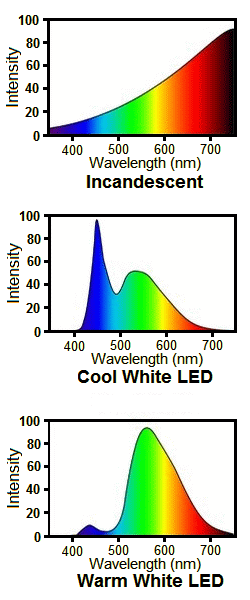
spectral flux – see spectral power.
spectral mixing – mixing by giving each sound or instrument its own space in the audio spectrum.
spectral power – the radiant power per unit frequency, usually measured in watts per hertz (W/Hz), or radiant power per unit wavelength, sometimes measured in watts per meter (W/m) or more commonly in watts per nanometer (W/nm). Also called spectral flux.
spectral power distribution (SPD) – a graphical representation of the radiant power emitted by a source at each wavelength (or band of wavelengths), especially for light sources in the visible portion of the electromagnetic spectrum (about 380 nm to 800 nm). Lamp manufacturers often publish SPD curves for specific light sources, because the SPD affects the way they render colors.
spectral skewing – a process used in Dolby SR that uses a shelving filter during recording to reduce the potential for tape saturation for frequencies above 2 kHz. A complementary process is used during playback to restore the signal to a flat response.
spectrum – (1) The entire range over which some measurable property of a physical system or phenomenon can vary, such as the frequency of sound or the wavelength of electromagnetic radiation. See audio spectrum, radio frequency spectrum, and electromagnetic spectrum. ( 2) A range of radio frequencies assigned by a regulatory agency of specific frequencies for specific purposes to specific stations. See frequency allocation.
spectrum allocation – see frequency allocation.
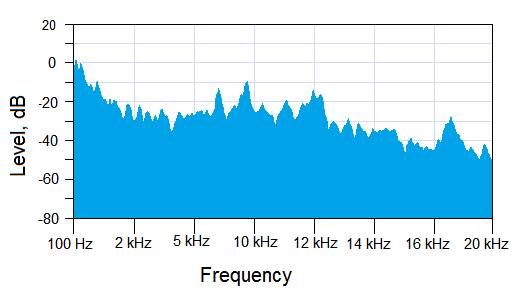
spectrum analysis – the process of measuring the amplitude and frequency components of an audio signal, frequently used to analyze the acoustical characteristics of a room or space or to find audio artifacts in a signal. Also called an acoustic analysis, audio analysis, or spectal analysis.
spectrum analyzer – a hardware or software measuring device that displays the amplitude vs. frequency of an audio signal. It is similar to an oscilloscope, except the oscilloscope displays amplitude as a function of time.
specular reflection – a reflection in which the angle of the incoming sound wave equals the angle of the outgoing wave. Also called a hard reflection.
speed – the rate at which an object is able to move or operate. Speed is a scalar quanity and differs from velocity, which is a vector quantity that takes direction into account.
speed of light – the speed at which light waves propagate through various materials. The speed of light in a vacuum is now defined as exactly 299,792,458 meters per second. The speed of light is a fundamental constant of nature. It is also the upper limit to the propagation speed of signals and to the speeds of all material particles.
speed of rotation – see rotational speed.
speed of sound – the velocity of a sound wave in air, which is 1,130 fps (feet per second) or 344.4 m/s at atomospheric pressure, 70 degree Farehheit, and 30% relative humidity. The speed of sound varies with pressure, temperature, humidity, and the material through which it passes. The speed of sound can be estimated using the forumula c = 331.5 + (0.60 × T), where c is the speed of sound in m/s and T is the temperature in °C, or c = 1087.6 + ([T-32] × 1.0936), where c is the speed of sound in ft/sec and T is the temperature in °F. See chart of Speed of Sound vs. Temperature and Humidity. See also velocity.
| Distance Sound Travels in Dry Air at 20°C (68°F) (Speed of sound = 343.4 m/s or 1126.5 ft/s) |
||
|---|---|---|
| Time (ms) | Distance (m) | Distance (ft) |
| 1 | 0.34 | 1.13 |
| 2.92 | 1.0 | 3.3 |
| 5 | 1.72 | 5.63 |
| 8.93 | 3.06 | 10.0 |
| 10 | 3.43 | 11.3 |
| 50 | 17.2 | 56.3 |
| 100 | 34.3 | 112.7 | 500 | 171.5 | 563.3 |
| 1000 | 343.4 | 1126.5 |
Sperry Corporation – see Unisys.
SPFX – abbreviation for special effects.
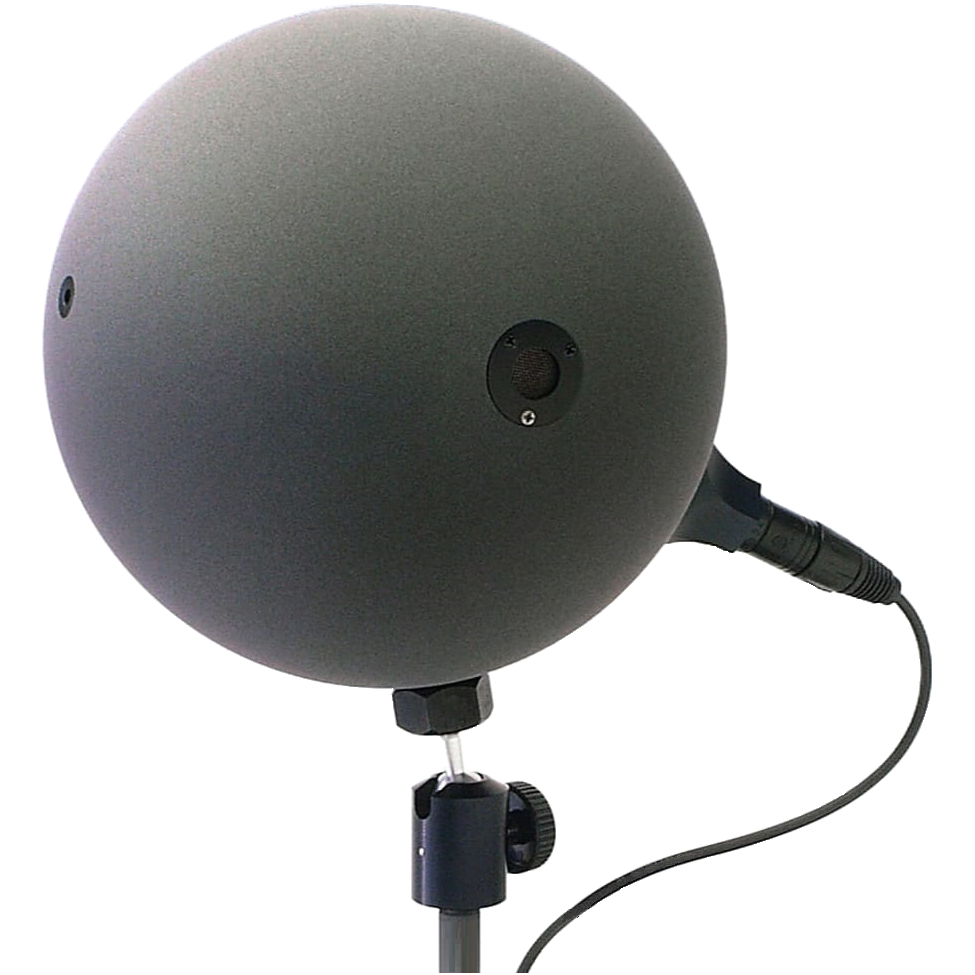
SPGGB – Songwriters Protection Guild of Great Britain. See British Academy of Songwriters, Composers, and Authors.
sphere microphone – a micophone used as a stereo microphone technique in which two condenser microphones are flush mounted in each side of a spehere (to simulate a human head). This arrangement can be used to make stereo recordings or binaural recording. This technique is in the baffled-microphone category. Other techniques in this category include baffled-omni pair, Jecklin disc technique, Schneider disc technique, and wedge technique. Also known as the dummy head, artificial head, or kunstkopf technique.
spherical microphone array – a microphone array used as a surround sound microphone technique consisting of a sphere into which are mounted a number of microphone capsules (as many as 24) pointed in a variety of directions, that is used to capture three-dimensional immersive sound of a live performance at a single point. The array includes processing to convert the multichannel sounds into some form of 3-D surround sound.
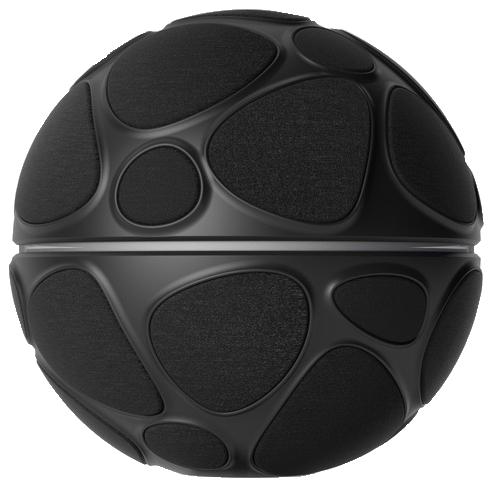
Microphone Array
spherical stylus – see conical stylus.
spiccato – a staccato playing technique used on string instruments in which the bow bounces lightly on the string, resulting in a series of short, distinct notes.
spider – a device, usually made of cotton, that holds a loudspeaker voice coil in place, allowing it to move in and out but not side to side. (See diagram.) Along with the surround, it is considered the suspension of the driver. Also called a damper.
spigot – a keyed post in the bottom center of some vacuum tubes. The rib in the spigot fit an indexing slot in the socket so the tube could only be inserted in one orientation.
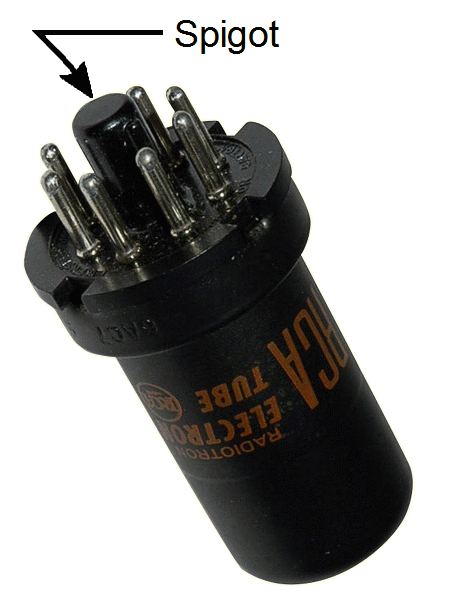
spike – see transient voltage.
spill – see bleed.
spillage – see bleed.
spin control – a British term for feedback control.
spin echo – see slapback echo.
spinet piano – a piano that is smaller than the full upright piano designed for owners with little space for a piano. They stand only slightly higher than the keyboard.
spin echo – see slapback echo.
spiral shield – a type of cable shield consisting of thin strands of wire wound in a spiral around the cable. They are more flexible than braided shields and easier to terminate, but tend to become unraveled. Because it is essentially a coil of wire, a spiral shield is subject to inductive effects, especially at higher frequencies. For that reason, it is rarely used at at frequencies above that of analog audio. Also called a serve shield. See also foil shield, double-spiral (Reussen) shield, braided shield (mesh), and double-braided shield.
SPL – Sound Pressure Level.
SPL meter – see sound level meter.
splash cymbal – a small cymbal used for accents. See cymbal.
splatter – a descriptive term for the sound of audio signal with extreme distortion caused by hard clipping due to being overloaded.
splice – (1) To cut two pieces of magnetic recording tape and then reassemble them using splicing tape. (3) The point where two pieces of recording tape have been joined. (3) An edit using the splicing technique.
splice block – see splicing block.
splicing block – a device used to hold a recording tape in place to make a splice. Also called a splice block.
splicing tape – a thin adhesive tape used to splice pieces of magnetic recording tape together.
splines – grooves on the shaft of a rotary control designed to make the knob fit tightly without slippage as it is adjusted.
split-band compressor – see multiband compressor.
split-band de-esser – a de-esser that operates much like a conventional (wideband) de-esser, which uses a compressor with a sidechained equalizer to select a narrow range of high frequencies. Whenever sibilance occurs (as indicated by the presence of high frequencies), it triggers the compressor to attenuate the audio signal. However, with a split-band de-esser, the original signal is split into two frequency ranges, one that contains the sibilant frequencies, and one that does not. The compressor attenuates only the signal containing the sibilance, while the other frequency band remains unchanged. Wideband (sometimes called fullband) de-essing can sometimes result in tonal artifacts in the lower frequencies, but a split-band de-esser produces fewer of these artifacts.
split box – see splitter.
split console – a console that has a separate section for input and monitoring, as opposed to an inline console, which has input and monitoring in the same channel strip. Sometimes called a split mixer.
split keyboard – a keyboard, controller, or synthesizer on which some of the keys are assigned to play one type of sound and the others a second type of sound. Each section of the keyboard is called a zone and the point at which the sound changes from one to the other is called a split point.
split mixer – see split console.
split point – the point at which the sound assigned to a group of keys changes to a different sound on a split keyboard.
split-channel audio – an audio file in which the left and right stereo channels are in separate files usually designated with .L or .R suffixes or several channels of surround sound are in separate files, where for example, 5.1 surround are usually designated with the suffixes such as .L, .R, .C, .SL, .SR, and .LFE, as opposed to interleaved audio files in which the all channels are combined to form a single file. See also split stereo.
split-channel stereo – see split stereo.
split-ring connector – see spade connector.
split-ring terminal – see spade connector.
split stereo – a stereo audio file where the left and right channels are in separate files usually designated with .L or .R suffixes, as opposed to interleaved stereo files in which the left and right channels are combined to form a single file. Also called split-channel stereo. See also split-channel audio.
splitter – a box with microphone inputs (usually XLR) used to divide microphone signals into two or more identical output signals that can be fed to different audio systems. Also called a split box.
SPL meter – see sound level meter.
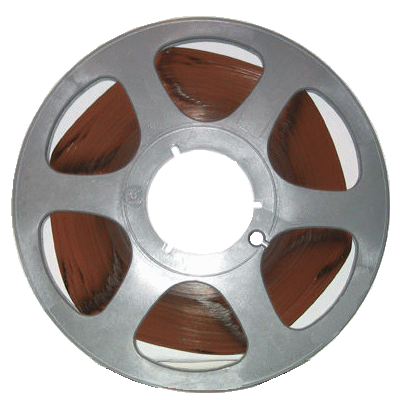
spoking – a type of buckling of recording tape in which the tape pack is deformed into a polygonal shape.
spot – to align audio and video events using time codes, typically during post production.
spot erase – to erase a very small section of one or more tracks on a multitrack recording by moving the recording tape a small amount (either by hand or with a shuttle control) while the tape machine is in record mode but with the transport inactive.
spot microphone – a microphone used for spot miking.
spot miking – a technique of placing a microphone close to the sound source to emphasize, improve, or isolate the sound of a voice or instrument, and is typically used with distant miking to add presence or to improve clarity, blending, and tonal balance. Sometimes called accent miking.
spot mode – one of four methods of editing in Pro Tools that requires you to input a location when you move or add an audio clip. The other methods are grid mode, shuffle mode, and slip mode.
SPP – Song Position Pointer.
SPPM – Sample Peak Program Meter. See peak program meter.
spread – (1) The time between each song on a CD or LP. Also called a gap or pre-gap. (2) The width of a stereo image. The stereo spread of a recording is the perceived width of the soundstage. (3) A parameter in some software used to adjust the apparent width of a stereo image.
spread voicing – see pads.
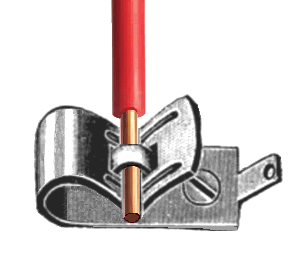
spring clip – a type of solderless connector in which the wire is held in place by a small clip. The clip is depressed to attach or remove the wire. See also alligator clip.
spring reverb – (1) An artificial reverberation effect that uses an electromechanical transducer at one end of a metal spring to create vibrations and a pickup at the other end to capture the vibrations and convert them into an audio signal. In 1939, Laurens Hammond received a patent for one of the first spring reverbs, which he began using in Hammond organs. Guitar amplifiers often use spring reverbs because of their compact size and low cost. Spring reverbs were once widely used in recording studios for the same reason. (2) A software or hardware effects processor that emulates a spring reverb. See also plate reverb.
sputtering – the process of applying a molecular-thin layer of metal (such as gold) to a surface, such as on the plastic diaphragm of a condenser microphone or on an electrode. The diapragm or electrode is placed in a vacuum chamber with a piece of gold that is heated until it vaporzes, producing atoms of gold that hit and stick to the surface of the object forming a very thin layer. Gold is frequently used because it is inert, nonoxidizing, and ductile.
SQ – a quadraphonic vinyl record format that used a type of matrix encoding and decoding, developed and marketed by Columbia Records and Sony in 1971. See also Quadradisc and QS.
SQNR – Signal to Quantization Noise Ratio.

square wave – a waveform in which the signal rises instantaneously to a level, remains at that level, then instantaneously falls to another level, and then remains at that level before repeating the cycle. See also pulse wave, sawtooth wave, sine wave, ramp wave, and triangle wave.
square wave response – an audio signal test procedure that uses a square wave and an oscilloscope to visualize a system's ability to process a wide range of frequencies with proper time-alignment.
squawker – see midrange driver.
squealy – see pick harmonic.
squeeze microphone – a miking technique used on drums to impart more energy. A mono room microphone is placed a few feet in front of the drum kit and aimed at the center of the kit. The signal from this mic is compressed very hard (squeezed) and blended back in with other drum mics. The all-button mode is commonly used for compression.
squelch – a circuit in a receiver that mutes the audio output when the audio level drops below a certain point.
squelch picking – see pick harmonic.
SR – (1) Sound Reinforcement. (2) Slew Rate. (3) Spectral Recording. See Dolby SR.
SRA – Stereo Recording Angle.
SRC – (1) Sample Rate Converter. (2) See source session (SRC).
SRCO – Sound Recording Copyright Owner. The owner of the copyright of a master recording, which is indicated by the symbol ℗. If the artist is signed to a record label, the label is usually the owner. See also sound recording.
SRI – Stereo Reduction Index.
SRS – Stereo Retrieval System.
SRS Labs, Inc. – an audio technology engineering company in Santa Ana, California that developed and licensed audio enhancements for wide variety of consumer electronic devices. It was spun off from Hughes Aircraft Company in 1993, when it developed the Stereo Retrieval System technology, and became publicaly traded in 1996. In 2012, SRS Labs was acquired by DTS, Inc.
S&S – Sampling and Synthesis. A term used to describe synthesizers that use both sampling and synthesis to produce sounds.
s/s – Samples per Second. An abbreviation used to express sample rates. S/s is more specific than the more generic term Hz. For example, 96 kS/s indicates a sample rate of 96,000 samples per second, while 96 kHz could indicate the same thing or be a reference to a frequency of 96,000 cycles per second.
SS – (1) See SuperSpeed. (2) Simple Stereo. See joint stereo or channel coupling.
SSB – Single SideBand. See sideband.
SSD – Solid-State Drive.
SSL – Solid State Logic.
SSO – Standards Setting Organization. See standards organization.
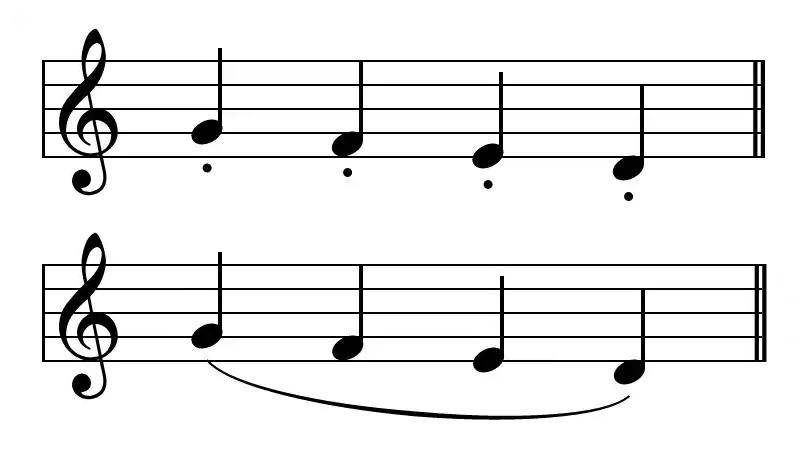
Legato (Bottom
ST – Safety Take.
ST-412 – see hard disk drive interface.
ST-506 – see hard disk drive interface.
staccato – a form of musical articulation in which each note is played with a very short duration, usually with silence between notes. It is notated by a dot placed above or below a note. It is essentially the opposite of legato.
stacking – see double tracking.
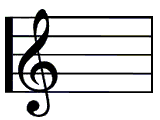
staff – in music notation, a set of five horizontal lines and four spaces that each represent a different musical pitch. Also called a stave. See also grand staff.
stage – (1) One section of an amplifier that performs a particular function before the signal is sent to the next section. (2) A riser or platform in a theater or other venue on which actors, entertainers, speakers, or musicians perform. (3) A type of reverberation that simulates the sound coming from a concert stage. (5) The dramatic performances in a theater.
stage box – see snake box.
stage monitor – a speaker usually placed on the floor of the stage facing the musicians so they can hear (monitor) the performance. Also called a floor monitor.
stage plot – a diagram showing where on a stage musicians, instruments, amplifiers, and other equipment should be placed for a performance, usually provided to the venue or sound engineer before a performance for planning and preparation purposes.
stamper – (1) A negative copy mold (where the pits are reversed into spikes) made from the glass master and used to press compact discs. See CD replication. (2) A negative nickel-metal disc that is used to press vinyl records. A stamper for each side of the record is placed in a press. A ball of hot vinyl (380 degrees F) is pressed with 100 tons of pressure to produce the record. See vinyl mastering.
stand – (1) A microphone stand. (2) A music stand.
standalone – (1) A software program that is capable of operating by itself, as opposed to a plugin that must operate within the context of a DAW or other program. (2) A piece of hardware or component that can function on its own without being connected to a computer. Sometimes spelled stand alone.
standard-definition television (SDTV) – a method of broadcasting analog television signals with 480 interlaced lines of resolution (480i) using the NTSC system in the US and 576 interlaced lines of resolution (576i) using the PAL and SECAM systems in Europe and other areas of the world. SDTV had a much lower reolution than HDTV.
standard dynamic range (SDR) – the normal dynamic range of an audio or video device that does not have high dynamic range (HDR). The term standard dynamic range came into used after the introduction of high dynamic range. See also low dynamic range (LDR).
standard listening level – see 83 dB SPL.
standard monitoring level – see 83 dB SPL.
standard operating level – (1) A reference level used to adjust various electronic devices to produce identical meter readings and output levels. (2) A target audio level that allows adequate headroom, often indicated as 0 VU. Although called a standard operating level, there is no official standard. See -20 dBFS and maximum operating level.
Standard Reference Level – see RIAA Standard Reference Level or NAB Standard Reference Level.
standard pitch – see A440.
standards body – see standards organization.
standards developing organization (SDO) – see standards organization.
standards organization – an organization that developes, coordinates, promulgates, revises, amends, reissues, interprets, or establishes technical standards for products, procedures, and testing methods. Although these entities often are agencies within the governments of many countries, they frequently are associations established by a given industry to establish standards for that industry sector. Some of the national standards organizations and other organizations involved in standards for audio or video include AES (Audio Engineering Society), AFNOR (Association Française de Normalisation), ANSI (American National Standards Institute), APRS (Association of Professional Recording Services), ASA (Acoustical Society of America), ASTM International (American Society for Testing and Materials), ATSC (Advanced Television Systems Committee), BSI (British Standards Institution), BTSC (Broadcast Television Systems Committee), CSA (Canadian Standards Association), DDEX (Digital Data Exchange), DIN (Deutsches Institut für Normung), EBU (European Broadcasting Union), EIA (Electronic Industries Alliance), IEC (International Electrotechnical Commission), IEEE (Institute of Electrical and Electronics Engineers), ISO (International Standards Organization), ITU (International Telecommunications Union), JIS (Japanese Industrial Standards), MMA (MIDI Manufacturers Association), MPEG (Moving Picture Experts Group), NAB (National Association of Broadcasters), NIST (National Institute of Standards and Technology), SMPTE (Society of Motion Picture and Television Engineers), TIA (Telecommunications Industry Association), and VESA (Video Electronics Standards Association). Also called standards body, standards developing organization (SDO), or standards setting organization (SSO).
standards setting organization (SSO) – see standards organization.
standard tuning – (1) Tuning the strings of an instrument in the normal manner. For the guitar, the strings are tuned to the pitches of E2, A2, D3, G3, B3, and E4, from lowest string (low E) to highest (high E). Standard tuning for the violin is G3, D4, A4, and E5, ascending in perfect fifths starting from G3 (G below middle C). Musicians most often use standard tuning, but in some situations or for some types of music, alternate tuning is preferred. See also open tuning. (2) Using standard or concert tuning (A440).
standby – (1) A mode in which an electrical device is powered up and ready, but not operating. (2) Ready and waiting to begin an appearance or performance. (3) Held in reserve, ready to be used as a replacement.
standby current – the amount of current in an electronic device when it is producing no output. Standby current consumption should be as low as possible in battery-operated devices to prolong battery life. Also called quiescent current.
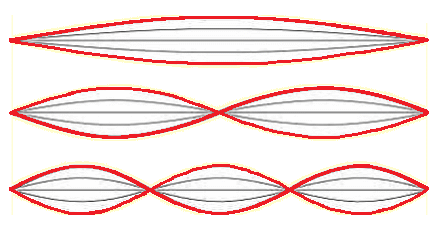
standing wave – an audio wave that occurs between two sound-reflecting surfaces in which the distance between them is a multiple of one-half the wavelength of the audio signal. A standing wave seems to be standing still and results in that frequency sounding louder than other frequencies with the same output level. See also room modes and eigentone (standing wave frequency).
standing wave frequency – see eigentone.
standup bass – see double bass.
S-taper – see taper.
star ground – a type of grounding system used in some recording studios to prevent ground loops, where the grounds for each piece of equipment are connected together and to the main studio ground which is isolated from the ac ground.
star network – a network in which all connection points (nodes) are directly connected to a common central hub.
state-variable filter – a filter used on some synthesizers in which various parameter can be changed.
static – an intermittent high-pitched noise. Named after the noise created by lightning on AM radio broadcasts.
static electicity – (1) An electric charge, often created by friction, composed of stationary charged particles that do not move in a current, but accumulate on an insulated body. (2) An electric discharge that results from the accumulation of electric charge on an insulated body. See electrostatic discharge and triboelectric effect.
static panning – see panning.
static pressure (ps or p0) – a pressure at a specific point in a medium that would exist at that point in the absence of sound waves, measured in pascals (Pa). A sound wave causes a deviation in the local ambient pressure (the static pressure) in the transmission medium. Mathematically, this is shown as pt = ps + p where pt is the total pressure, ps is the static pressure, and p is the sound pressure.
station – see radio station.
status byte – the first byte in a MIDI message that is used to indicate the type of message.
statutory rate – the rate established by Congress for a compulsory mechanical license, which can be obtained by completing the required paperwork and paying the proper fees. The current statutory rate for physical formats, such as CDs, records, and casettes, and permanent digital downloads is 9.1 cents per copy for songs with up to 5 minutes of playing time or 1.75 cents per minute or fraction of a minute for songs over 5 minutes. The rate for streaming and limited downloads depend of several factors. Rates are changed periodically. Also called a mechanical rate.
stave – see staff.
STC – Sound Transmission Class.
steel – (1) Short for a steel guitar. (2) One who plays a steel guitar. (3) A bar used to play a steel guitar, usually made of metal, but sometimes made of glass or other materials. See also slide.
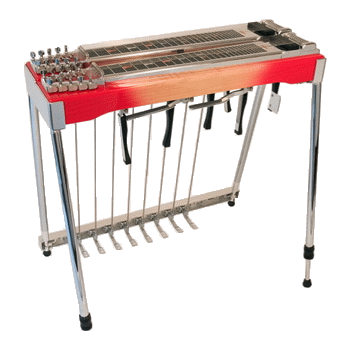
steel guitar – a type of guitar that is usually positioned horizontally on the lap with the strings being plucked with one hand, while the other hand changes the pitch of one or more strings using a bar or slide called a steel. The term lap steel is sometimes used to differentiated between it and a pedal steel guitar. Called a steel for short.
steely – a descriptive term for a sound with excessive midrange frequencies, especially in the 3 to 6 kHz range.
Steinberg GmbH – a company founded in 1984 by Karl Steinberg and Manfred Rürup, and headquartered in Hamburg, Germany, that develops and manufactures musical software and equipment. Its main products include music recording, editing and arranging software (digital audio workstations) and VSTi software synthesizers. Since 2005, Steinberg has been owned by Yamaha Corporation.
stem – an individual component of a mix saved separately in groups, to be used by the movie sound designers, mastering engineers, or for a remixing. When all the stems are added back together, they should produce the complete mix. The term is short for “stereo master” and originates from the movie industry where soundtracks are normally broken down into three main stems: dialog, music, and effects (DME). Stems are also sometimes referred to as submixes, subgroups, or busses.
stem mastering – a technique in which individual audio tracks are grouped together to allow for independent control and signal processing of each stem so that they can be manipulated independently from one other. This method is only occasionally used by mastering studios. This process is sometimes called separation mastering, but some people claim the two processes are different, but it is not clear in what way.
stem mixing – a method of mixing audio material based on creating groups of audio tracks called stems and processing them separately prior to combining them into a final master mix.
step – (1) A division used in step mode of a step sequencer. Also called a gate divide. (2) See tone, definition #1.
step input – MIDI data that is input into a sequencer one note (or event) at a time, as opposed to real-time input in which the events are input as they are being played. Also called step programming, event editing, step recording, step mode, and step time.
step mode – see step input.
step programming – see step input.
step recording – see step input.
step sequencer – a sequencer that operates by dividing a measure into a pre-determined number of divisions (steps). Each step is used to trigger notes, send a voltage, control a parameter value, or handle other events.
step time – see step input.
steradian (sr) – the unit of solid angle, used in three-dimensional geometry. It is analogous to the radian that is used with two-dimensional angles. An angle in radians projected onto a circle gives a length on the circumference, but a solid angle in steradians projected onto a sphere gives an area on the surface. Also known as a square radian.
stereo – (1) Short for stereophonic. (2) Stereophonic sound reproduction. (3) A system or the equipment used for reproducing stereophonic sound. Sometimes called a home stereo when used in the home or car stereo when used in a car.
Stereo 8 – see 8-track cartridge.
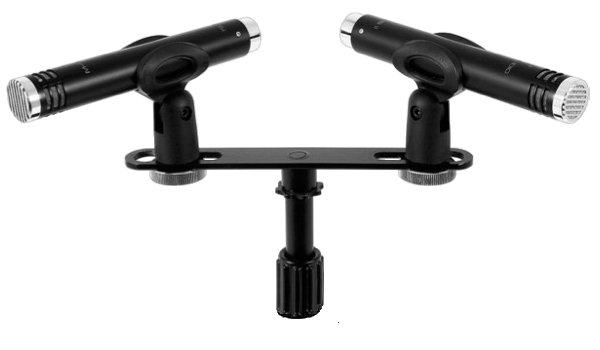
With Mics
stereo bar – a mounting used to attach a pair of microphones in relative close proximity to one another. Also called a stereo microphone adapter.
stereo era – see magnetic tape era.
stereo field – see sound field.
stereo image – the perception that various instruments or sounds are coming from various locations between two stereo speakers. Called image for short.
stereo image shift – see image shift.
stereo imaging – the ability to create the illusion of sounds at specific locations in a stereo sound field. Called imaging for short. See also localization.
stereoizing – see synthetic stereo.
stereo microphone – a microphone with two capsules housed in a single body to enable recording in stereo. The capsules are usually mounted in a coincident arrangement.
stereo microphone adapter – see stereo bar.
stereo microphone techniques – various techniques for using two or more microphones to capture a stereo recording of a group, such as a choir or orchestra, as well as sometimes for recording individual instruments, such as an acoustic guitar. There are four main categories, each having a number of specifications used for this purpose: (1) coincident pair (Blumlein array, mid-side, X-Y pair), (2) near-coincident pair (A-B, DIN, EBS, Faulkner array, Gerzon array, NOS, Olson, ORTF, RAI), (3) spaced pair/trees (A-B, spaced cardiods, spaced omnis, Decca tree, omni triad), and (4) baffled-microphone technique (baffled-omni pair, Jecklin disc technique, Schneider disc technique, wedge technique, sphere microphone). See table below and also my article entitled, “Stereo Microphone Techniques.” For a visual comparison, see Eberhard Sengpiel's interactive diagram.
| Stereo Microphone Techniques | ||||
|---|---|---|---|---|
| Technique | Method* | Microphone Type | Distance Apart | Angle |
| Coincident Pair | ||||
| Blumlein pair | C | 2 Bidirectionals | 0 | 90° |
| Mid-Side | C | 1 Cardioid 1 Omni |
0 | Omni at 90° Cardioid at 0° |
| X-Y | C | 2 Cardioids | 0 | 90 - 120° |
| Near-Coincident Pair | ||||
| A-B | N/S | 2 Omnis | 12-48 in (30-120 cm) | 90 - 120° |
| DIN | N | 2 Cardioids | 7.9 in (20 cm) | 90° |
| EBS | N | 2 Cardioids | 8 in (20 cm) | 90° |
| Faulkner Array | N | 2 Bidirectionals | 9.8 in (25 cm) | 0° |
| Gerzon Array | N | 2 Cardioids | 2 in (5 cm) | 120° |
| NOS | N | 2 Cardioids | 12 in (30 cm) | 90° |
| Olson | N | 2 Hypercardioids | 2-8 in (5-20 cm) | 135° |
| ORTF | N | 2 Cardioids | 6.7 in (17 cm) | 110° |
| RAI | N | 2 Cardioids | 8.3 in (21 cm) | 100° |
| Spaced Pair/Tree | ||||
| A-B | N/S | 2 Omnis | 12-48 in (30-120 cm) | 90 - 120° |
| Spaced Cardioids | S | 2 Cardiods | 4-8 ft (1.2-2.4 m) | 0° |
| Spaced Omnis | S | 2 Omnis | 4-8 ft (1.2-2.4 m) | 0° |
| Decca Tree | T | 3 Omnis | Sides: 6 ft (2 m) Center: 3 ft (1 m) Forward |
0° |
| Omni Triad (Mercury Triad) |
T | 3 Omnis | Sides: 4-8 ft (1.2-2.4 m) Center: 3 ft (1 m) Forward |
0° |
| *Method: C = Coincident Pair, N = Near-Coincident Pair, S = Spaced Pair, T = Tree/Triad | ||||
stereo mix – the main stereophonic two-channel output from a mixer, console, or DAW.
stereo phase – essentially the differences between the two channels of a stereo signal. This is not the same thing as the phase of a sine wave. See channel coupling.
stereophonic – an audio signal consisting of two channels (left and right) that upon playback provides the perception of localization and depth, that is, a stereo image. Called stereo for short.
stereophony – the process of creating or reproducing a two-channel sound that creates a three-dimensional sonic effect. See stereophonic.
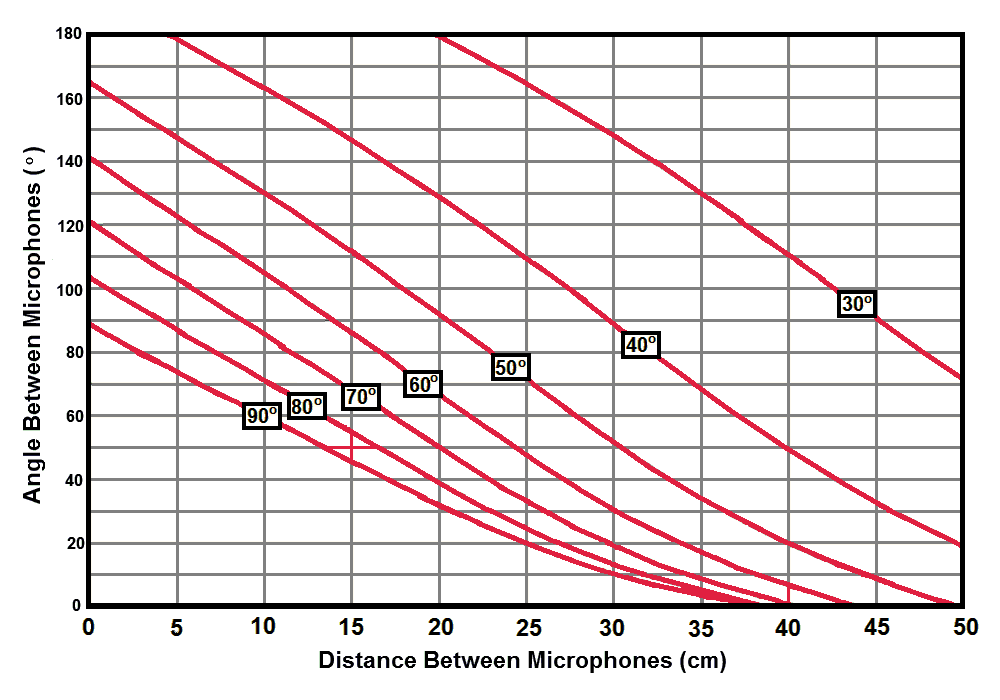
Cardioid Microphones
stereo recording angle (SRA) – an imaginary angle that provides an indication of the apparent width of the stereo image. It is the angle through which a sound source can move in front of a microphone array and upon playback seem to move between the two stereo speakers. The SRA is not the same as the microphone axis angle (the angle between the two mics in a stereo recording setup) nor the acceptance angle (the angle that defines the useful working area of a microphone). The SRA is determined by the pickup pattern, the axis angle, and the distance between the microphones. For example, a coincident cardioid array with an axis angle (mutual angle) of 90° has an SRA of 195°. Since the stereo image is created from a combination of time-of-arrival and level differences between left and right channels, acoustic sources that are outside of the SRA will be located full left or full right in the stereo image. Any source within the SRA will be placed between the left and the right speakers when played back. A smaller SRA will provide a wider stereo image. Also called a stereo acceptance angle. See a visualization of stereo recording angle at http://www.sengpielaudio.com/Visualization-EBS-E.htm. The graph for SRAs for cardioid microphones is shown above. For other patterns, see Graph of Stereo Recording Angles.
stereo signal – an audio signal consisting of two channels (usually left and right) that upon playback provides the perception of localization and depth. A stereo signal can be interleaved (where the left and right channels are combined to form a single signal) or split (where the left and right signals are in separate channels).
stereo spread – see spread.
stereosonic miking technique – see Blumlein array.
stereosonic shuffler – see shuffling.
stereo sound field – the area in which sound is perceived by the ear between two stereo speakers.
stereo track – (1) A track in a digital audio workstation (DAW) that contains two monophonic tracks, usually designated as left and right, and panned accordingly. When an external stereo track is imported into a DAW, it is usually an interleaved stereo file and will be converted into two mono files. (2) A track on an LP, a stereo tape, or a digital audio file that is designed to be played back in stereo. Ditial stereo files are usually in an interleaved format.
stereo variable-area (SVA) – a recording technique, first used on film in the mid-1970s as Dolby Stereo, in which a two-channel audio signal is recorded as a pair of optical tracks on the film. As the magnitude of the audio signal changes, the tracks change area (becoming wider or narrower). The projector shines light from a small lamp (an exciter) through a perpendicular slit onto the film track, which modulates the intensity of the light passing through it, which is converted back into audio.
sterile – a descriptive term for a pristine sound that lacks emotion.
sticky-shed syndrome – a condition created by the deterioration of the binder in magnetic recording tapes, particularly those from the 1970s and 1980s. The binder is what holds the iron oxide onto the base. Many tape manufacturers began using polyester-urethane (PEU) [sometimes called polyurethane or urethane-based] binders in the mid 1970s, because it allowed them to get more magnetic coating on the tape (which provided a greater output) than with the older PVC and latex binders. Over time, this type of binder absorbed moisture from humidity in the atmosphere in a chemical process called hydrolysis, which caused the polyurethane to migrate to the tape surface, resulting in a sticky residue. The problem appears to be worse on tapes using back coating. Degraded tapes are often sticky and the magnetic layer can slough off clogging play heads and guides, which can cause equipment failure, and can result in loss of the signal layer. A temporary cure is to bake the tapes. However, not all tapes can be recovered by baking. Sticky-shed syndrome is a subset of soft binder syndrome, which includes tapes that cannot be recovered through baking, tapes with sticky-shed syndrome (which can), and tapes with what in the past was diagnosed (incorrectly) as loss of lubricant (not recoverable). Also called magnetic tape binder breakdown, polyurethane binder deterioration, soft binder syndrome, and sticktion. See also shedding.
sticktion – see sticky-shed syndrome.
stimulus-response – a testing or measurement procedure in which a signal or impulse (the stimulus) is applied to the input of a device and the resulting output (the response) is measured.
STL – Studio-to-Transmitter Link. A transmission link used to carry audio and video back to the broadcast station from a remote site.

stock music – see library music.
stomp box – slang for a guitar pedal (effects unit).
stopband – the frequency range attenuated by a filter, as opposed to the passband—the frequencies unaffected by the filter. Also spelled as the less-preferred stop band.
stopband ripple – see ripple.
storage medium – a place where digital data can be placed, kept, and retrieved, such as hard disk, magnetic tape, or flash memory. The plural form is storage media.
STP – Shielded Twisted Pair. See twisted pair.
straight mute – see mute.
“straight wire with gain” – slang for an amplifier (or preamplifier) that adds no coloration or distortion to the signal, only gain. It describes the “perfect amplifier,” which in reality does not exist. The expression was coined by Peter J. Walker, the founder of Quad Electroacoustics Limited. Sometimes expressed as “a piece of wire with gain.”
stranded wire – a metal wire that is made up of several smaller wires that are twisted together. Stranded wire is used in most cables because it is more flexible than solid-core wire.
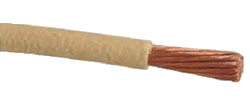
stream – see data stream or media stream.
streaming audio – the sending of usually compressed audio files over the internet for playback as it is received, as opposed to non-streaming audio that has to be downloaded in its entirety before it can be played. Various streaming audio services use different data compression methods, the most commonly used are AAC and Vorbis. Data compression is sometimes divided into three levels: (a) Low bit rate (used in mobile and free streaming services), (b) Medium bit rate (used on desktop and mobile subscription services), and (c) High bit rate (used in desktop subscription services).
streaming media – sending real-time or on-demand audio, video, and other multimedia content over the internet. Prior to the general availability of broadband internet connections, the only way to experience such content was to completely download such a file before it could be played.
streaming radio – see internet radio.
strident – a descriptive term for a raspy or edgy sound. See harsh and edgy.
S-trig – short for switch trigger or shorting trigger. See trigger.
strike – to put away equipment and clean up after a performance or recording session.
string – the cord on a stringed instrument that vibrates to produce sound. For a long time, catgut was the most common material for such strings, but today most strings use cores made of other materials, usually steel or a synthetic polymer, such as nylon.
string bass – see double bass.
string crossing – moving from one string to another while playing a stringed instrument. Not to be confused with hand crossing.
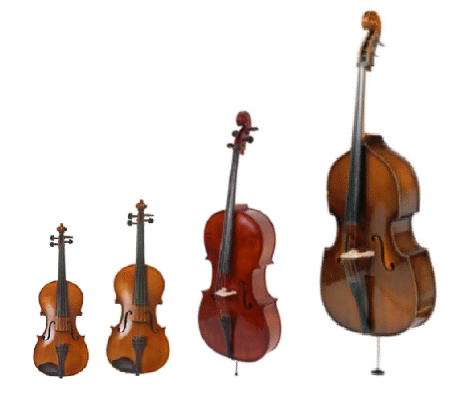
Violin, Viola, Cello, and Double Bass
stringed instruments – see strings.
string instruments – see strings.
string noise – see string squeak.
strings – (1) A family of musical instruments that produce sound by means of vibrating strings, which in most cases, transmits the vibrations to the body of the instrument, which also vibrates, along with the air inside. Examples of stringed instruments include the violin, viola, cello, and double bass, as well as the guitar and mandolin. Also called string instruments or stringed instruments. (2) The section of an orchestra consisting of stringed instruments.
string squeak – the sound that guitar strings make when a player drags his fingers across the strings while changing chords, especially on acoustic guitar. Some people find the sound annoying while others think it embellishes the sound. Also called string noise, fret squeak, acoustic squeak, or fret noise.
stripe – (1) To record timecode on a blank track of audio tape, videotape, or magnetic film. (2) A timecode recorded to a audio tape, video tape, or magnetic film prior to recording any audio or video.
strip silence – a function found on some DAWs that locates silent parts of an audio file and removes them, leaving only regions or clips containing audio. Typically the sensitivity or threshold level can be adjusted to determine the level below which a sound is considered to be silent.
STRL – NHK Science & Technology Research Laboratories. See NHK.
structured audio – see MPEG-4 structured audio.
strum – (1) To sweep the thumb or a pick up or down across the strings of an instrument, such as a guitar. Compare with pluck. (2) The sound made by strumming.
Studer – a company headquartered in Zurich, Switzerland, that designs and manufactures pro-audio equipment for recording studios and broadcasters. Studer is a subsidiary of Harman International Industries, now owned by Samsung. Founded in 1948 by Dr. Willi Studer, it initially manufactured oscilloscopes. In 1949, it started modifying tape recorders imported from the US, but soon began manufacturing their own tape recorders under the name Dynavox, which were widely acclaimed by professional engineers because their excellent reliability and sound quality. They also made consumer recorders under the Revox name. Although the company made a variety of 2-track stereo recorders throughout its history, it was best known for its innovative multitrack recorders releasing its first multitrack machine in 1964. In the 1990s the company began manufacturing mixing consoles. Also in the 1990s, the company began moving into digital products such as digital recorders, converters, and synchronizers. In 1990, Willi Studer sold the company to Motor Columbus AG. It was acquired by Harman in 1994.
studio – space or workrooms used for a specific purpose, such as for recording music, photography, making movies, broadcasting, pottery, architecture, painting, dance, sculpture, animation, and other artistic purposes. See also recording studio.
studio engineer – a specialist skilled in the use and techniques of recording, mixing, and reproducing sounds in a recording studio. Compare with audio engineer, recording engineer, or sound engineer.
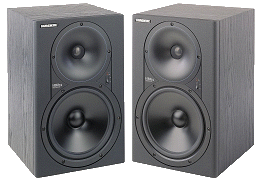
studio monitors – loudspeakers specifically designed for very accurate reproduction of audio in recording studios. They are designed to produce a relatively flat phase and frequency response, so that there is minimal coloration of the sound. Unlike a high fidelity speaker, which is designed to sound good often by boosting both the low end and high end, a studio monitor needs to have a neutral tonal balance, which is especially important during the mixing process. Also called reference monitors or simply monitors for short.
studio musician – see session musician.
Studio One – a digital audio workstation develped by PreSonus Audio, Inc..
Studiotips SuperChunk – see SuperChunk.
Stuttgart pitch – see A440.
stutter edit – an audio production technique, often used in electronic music, in which fragments of audio are repeated in rhythmic intervals, so that it sounds like stuttering. Also called Also called stuttering.
stuttering – see stutter edit.
stylus – (1) The small pointed piece of metal or gemstone mounted in a cartridge on the tonearm of a phonograph or turntable that tracks the groove of a record. The slang term is needle as the original 78-rpm records used a needle-like device made of steel. With the introduction of the vinyl LP, smaller styli made of gemstones, such as saphire and diamond, were used. See also conical stylus and elliptical stylus. (2) A sharp-pointed device used for marking matrix numbers on the runout section of a record. See also cutting stylus.
sub – short for subwoofer.
sub bass – frequencies below which a given set of studio monitors cannot reproduce accurately.
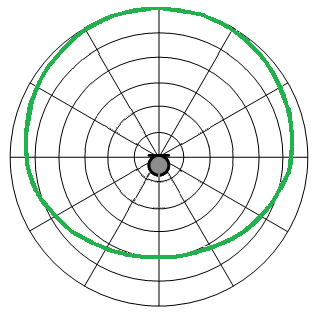
subcardioid microphone – a microphone with a subcardioid pattern.
subcardioid pattern – a unidirectional pickup pattern similar to a cardioid pattern but with a wider response pattern in the front and a smooth flat response in the rear rather than the tuck-in or null of a cardioid. Sometimes called a wide cardioid or hypocardioid. See also polar pattern.
subcarrier – a signal that is carried on top of another carrier so that two signals can be carried simultaneously. When the signal is received, the main carrier and subcarrier signals are demodulated separately. For example, subcarriers can be used to carry stereo signals on monophonic radio broadcasts or to carry color signals on black and white television broadcasts. The FCC allows subcarriers to be used by broadcast stations for many purposes, including paging, dispatching, traffic control signal switching, and muzak.
subcode – data that is embedded in the tracks of a compact disc or DVD that provides synchronization data, song titles, artist names, ISRC codes, and other information.
subdominant – the fourth note or fourth degree of a diatonic scale. It is called “subdominant” because it is the note immediately below the tonic. A subdominant chord is the triad formed using the subdominant pitch along with other notes of the same diatonic scale. The subdominant chord is usually symbolized by the Roman numeral IV (a major chord) in a major scale or iv (lower case indicates that the chord is a minor chord) if it is in a minor scale. See also tonic, supertonic, mediant, dominant , submediant, leading tone, and octave.
subframe – a unit of time smaller than a frame used in in timecode synchronization, typically 1⁄100 the length of a frame. Synchronization is kept to within a few subframes.
subgroup – two or more tracks or audio signals containing similar material that are put together in order to be controlled by a single control, a group fader. Mixing consoles and DAWs usually provide a method to create a subgroup. Typical subgroups are drums, vocals, and keyboards. The term is similar to but not exactly the same as submix. It is sometimes called a group.
subharmonic – a harmonic lower in frequency than the fundamental, typically caused by loudspeakers with poorly controlled cone resonances, causing an audible distortion one octave lower than the frequency of the input signal.
subjective tone – see difference tone.
submaster – the fader on a console or DAW that controls the audio level of a submix during mix down. Sometimes called a group master. Sometimes spelled sub-master.
submaster assignment – the bus selected for the submix that will be controlled by the submaster fader. Sometimes spelled sub-master assignment..
submediant – the sixth note or sixth degree of a diatonic scale. It is called “submediant” because it is the lower mediant—halfway between the tonic and the subdominant (“lower dominant”). A submediant chord is the triad formed using the submediant pitch along with other notes of the same diatonic scale. The submediant chord is usually symbolized by the Roman numeral VI (a major chord) in a major scale or vi (lower case indicates that the chord is a minor chord) if it is in a minor scale. Sometimes called a superdominant. See also tonic, supertonic, mediant, subdominant, dominant, leading tone, and octave.
subminiature plug – a 2.5-mm phone plug, available in both the TS and TRS configurations. Also called a 2.5-mm subminiature plug, 2.5-mm submini plug, subminiature phone plug, submini phone plug, or subminiplug. See also miniature plug.
submix – a group of signals that are mixed down into one or two channels that are inserted as a composite signal into the main mix of a DAW or mixing console. Also called a submix bus or mix group. The term is similar to but not exactly the same as subgroup.
submixer – (1) A small mixer, which can be either a separate mixer or a section of a larger mixer or console, that is used to feed signals as a submix. (2) A small mixer that can be plugged into an input or channel on the main mixer or console to provide additional channels.
subsemitone – see leading tone.
subsonic – slower than the speed of sound. Sometimes used incorrectly to mean having a frequency below the range of human hearing range, for which the correct term is infrasonic
substrate – see tape base.
subtractive flanging – see additive flanging.
subtractive synthesis – a method of sound synthesis (creating a sound with a synthesizer) by generating a waveform rich in harmonics and then filtering out unwanted harmonics. See also AM Synthesis, additive synthesis, sample synthesis, FM synthesis, and wavetable synthesis.
subwoofer – a specialized loudspeaker used for reproducing extremely low-frequency sound. Since many speaker systems cannot reproduce frequencies much below 50 Hz, adding a subwoofer can provide the missing low-frequency sound. Typically a single subwoofer is used. However, for a fuller sound, sometimes two subwoofers are used, but to avoid creating nulls, one of the placements shown below should be used. Called a sub for short.
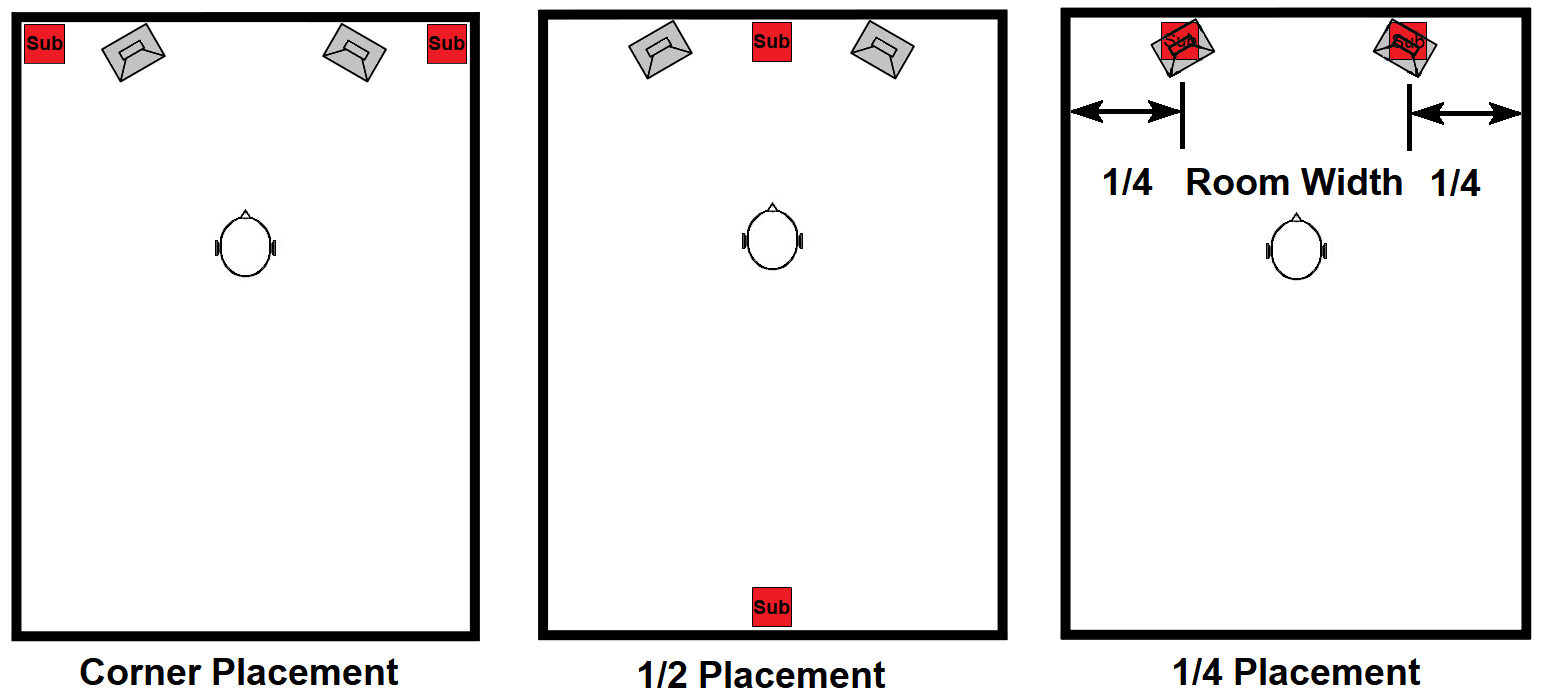
sum – (1) To add two or more audio signals or variations of the same audio signal, typically in a mixer or at the inputs of an amplifier. See summing. (2) The addition of two or more audio signals.
summing – the process of mixing two or more signals down to a single mono or stereo output. In a mixer summing takes place as various channels are routed to the master bus. In digital systems, summing is a transparent process and has minimal effect on the sound of the summed channels. Analog summing can change the sound, sometimes in desirable ways and sometimes undesirable, imparting a small amounts of saturation, harmonic distortion, crosstalk, and other effects. Some engineers will bounce mixes through hardware summing boxes to achieve the warmth and character of analog summing.
summing amplifier – a device that combines or mixes signals from several sources and then amplifies the resulting signal to be fed to another device.
summing box – a piece of hardware that sums two or more analog signals. See summing. Also called a summing mixer.
summing mixer – see summing box.
Sun Microsystems, Inc. – a company that sold computers, computer components, software, and information technology services founded in 1982 and headquartered in Santa Clara, California. Sun created the Java programming language and many other computer technologies. In 2010, it was acquired by Oracle Corporation.
Sun Studio – the legendary recording studio owned and operated by rock-and-roll pioneer Sam Phillips at 706 Union Avenue in Memphis, TN. It opened in 1950 as the Memphis Recording Service and was located in the same building as the Sun Records label. The studio is touted as being the “birthplace of rock 'n' roll” because the presumed first rock 'n' roll single, “Rocket 88” by Jackie Brenston and his Delta Cats, was recorded there in 1951. In the early 1950s, blues and R&B artists such as Howlin' Wolf, Junior Parker, Little Milton, B. B. King, and Rufus Thomas recorded at Sun Studio. Several rock 'n' roll, country, and rockabilly artists, including Elvis Presley, Johnny Cash, Carl Perkins, Roy Orbison, Charlie Rich, Jerry Lee Lewis, and Bill Justis recorded there during the mid to late 1950s. In 1959, Sam Phillips moved into larger facilities at 639 Madison Avenue, which was called the Sam C. Phillips Recording Studio, but was better known as Phillips Recording. Phillips sold the Sun Label in 1969. In 1987, the building at 706 Union Avenue was reopened by Gary Hardy as as a recording studio and tourist attraction under the name “Sun Studio.” A number of prominent artists subsequently recorded there, including U2, Def Leppard, Bonnie Raitt, Ringo Starr, and Brian Setzer of Stray Cats. Sam Phillips died in 2003.
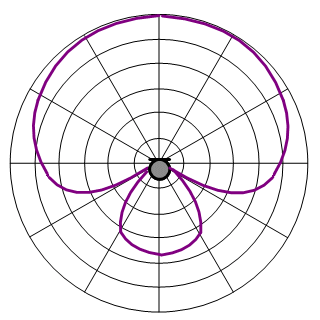
Super Bit Mapping (SBM) – see bit mapping.
supercardioid microphone – a microphone with a supercardioid pattern.
supercardioid pattern – the pick up pattern of a unidirectional microphone that is narrower than a cardioid, but wider than a hypercardioid. See also polar pattern.
supercardioid/lobar pattern – see lobar polar pattern.
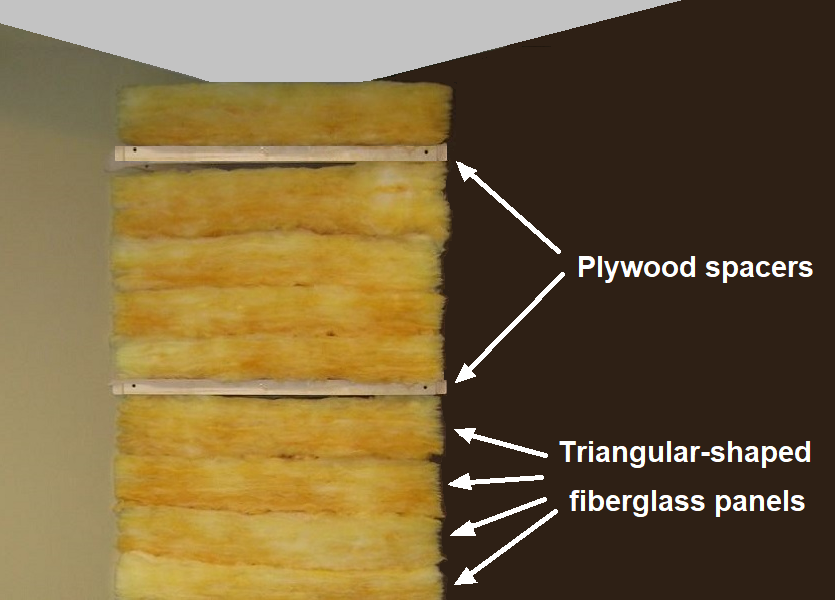
SuperChunk – a do-it-yourself corner bass trap consisting of fiberglass or mineral wool panels cut into triangles that are stacked in corners from floor to ceiling. Plywood spacers are sometimes used to prevent the panels from compacting upon one another. A frame covered with burlap or speaker cloth is sometimes used to improve aesthetics. Also called Studiotips SuperChunk because it was originally discussed in a Studiotips forum.
superdominant – see submediant.
Super Hi-Vision – see ultra-high-definition television.
SuperSpeed (SS) – designation for transfer rates in USB 3.0 that provides for rates up to 625 megabytes per second (Mbps), greater than 10 times the speed of USB 2.0.
supertonic – the second note or second degree of a diatonic scale. It is called “supertonic” because it is the next note above the tonic. A supertonic chord is the triad formed using the supertonic pitch along with other notes of the same diatonic scale. The supertonic chord is usually symbolized by the Roman numeral ii (lower case indicates that the chord is a minor chord) in a major scale or II (a major chord) if it is in a minor scale. See also tonic, supertonic, mediant, subdominant, dominant , submediant, leading tone, and octave.
Super Video – see S-Video.
supervising sound editor – see sound editor, definition #1.
supply disc – see supply hub.
supply platter – the round disc that is driven by the supply motor and holds the supply reel, sometimes with a locking mechanism. Also called a supply disc or supply turntable. See tape machine for diagram.
supply motor – the motor on a tape machine that moves the recording tape during rewind.
supply reel – the spool from which recording tape unwinds before passing through a tape machine during play and winding onto the take-up reel. Sometimes called a feed reel. See tape machine for diagram.
supply turntable – see supply hub.
support film – see tape base.
supraaural – literally means “on top of the ear” and refers to headphones that rest on the outer ears. Although they are lightweight, they are not very effective at excluding external sounds. See also circumaural and intraaural.
surface asperity – see asperity.
surface microphone – see boundary microphone.
surface noise – a hissing sound that occurs when a stylus moves along the groove of a phonograph record due to friction and less-than-perfect smoothness of the surface. Also called needle noise.
surge – see transient voltage.
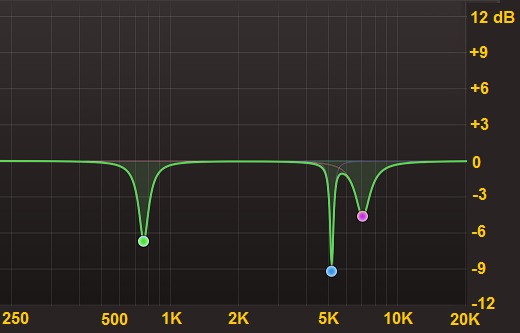
surgical EQ – the removal of a problem frequency in an audio signal by using an equalizer with a very narrow EQ band. Compare with corrective EQ.
surround – (1) The flexible ring, usually made of foam or rubber, on a loudspeaker woofer, which is attached to the speaker cone on the inside and the speaker basket on the outside. (See diagram.) The surround and spider form the suspension of the speaker driver. The surround flexes, allowing the cone to move when the voice coil moves. (2) Short for surround sound. (3) Short for surround channel.
surround channel – one of the audio channels in a surround sound audio system, that is primarily used to deliver ambience and diffuse sounds in a movie or music soundtrack. It can be any channel other than the front left, front right, front center, and special effects channels.
surround recording techniques – see surround sound microphone techniques.
surround sound – a system for reproducing sound through speakers in the front, side, and sometimes the back of the listener to create a side-to-side as well as a front-to-back perspective. See also 5.1 and 7.1.
surround sound microphone techniques – techniques for placing groups of microphones to capture a surround sound recording of a group, such as a choir, orchestra, or other ensemble. Many of the techniques are adaptations or extensions of various stereo microphone techniques. Surround recording techniques can be divided into four categories: (1) those that use a single array of microphones placed in close proximity, (2) those having separate front and rear arrays, (3) special arrays developed specifically for recording just the ambience of a space, which are used in conjunction with a front array, and (4) microphone arrays assembled as a unit. Techniques used for the three front channels include INA-3 (ideal cardioid arrangement), the Decca Tree, and the optimum cardioid triangle (OCT), and Omni+8. Techniques that have both front and rear arrays include INA-5 (ideal cardioid arrangement), Fukada tree, Corey-Martin tree, wide cardioid surround array, Hamasaki (NHK) system, double mid-side, OCT surround, OCT-IRT, OCT-Hamasaki, Polyhymnia pentagon, cardioid trapezoid, and Omni+8 surround. Specialized ambience arrays include the Hamasaki square, double ORTF, and the IRT cross. Microphone assemblies include the soundfield microphone and the ball boundary microphone, and the spherical microphone array .
| Surround Sound Microphone Techniques | |||||
|---|---|---|---|---|---|
| Technique | Front Array |
Rear Array |
Number of Mics |
Microphone Types* | Distance L to R |
| INA-3 | X | --- | 3 | 3 Cardioids | 35 cm (14 in) |
| Decca Tree | X | --- | 3 | 3 Omnis | 2 m (6 ft) |
| OCT | X | --- | 3 | 1 Cardioid 2 Hypercardioids |
40-100 cm (15-40 in) |
| Omni+8 | X | --- | 3 | 2 Omnis 1 Bidirectionals |
2 m (6.5) |
| INA-5 | X | X | 5 | 5 Cardioids | 35 cm (14 in) |
| Hamasaki | X | X | 7 | 5 Cardioids 2 Omnis |
3 m (10 ft) |
| Fukada Tree | X | X | 7 | 5 Cardioids 2 Omnis |
1.8 m (6 ft) |
| Corey-Martin | X | X | 5 | 3 Supercardioid 2 Cardioids |
1.2-1.8 m (4-6 ft) |
| WCSA | X | X | 5 | 5 Cardioids | 1.2-1.8 m (4-6 ft) |
| Double M/S | X | X | 3 | 2 Cardioids 1 Omni |
0 m |
| OCT Surround | X | X | 5 | 2 Supercardioids 3 Cardioids |
40-100 cm (15-40 in) |
| OCT+IRT | X | X | 7 | 2 Hypercardioids 5 Cardioids |
40-100 cm (15-40 in) |
| OCT+Hamasaki | X | X | 7 | 2 Hypercardioids 1 Cardioid |
40-100 cm (15-40 in) |
| Polyhymnia Pentagon | X | X | 5 | 5 Omnis | 3.5 m (11.5 ft) |
| Cardioid Trapezoid | X | X | 5 | 5 Cardioids | 60 cm (24 in) |
| Omni+8 Surround | X | X | 5 | 4 Omnis 1 Bidirectionals |
2 m (6.5) |
| Hamasaki Square | X | 4 | 4 Bidirectionals | 1.8-2 m (6-6.5 ft) | |
| IRT Cross | -- | X | 4 | 4 Cardioids | 20-25 cm (8-10 in) |
| Double ORTF | -- | X | 4 | 4 Cardioids | 17 cm (7 in) |
| Omni Square | X | 4 | 4 Omnis | 2 m (6.5 ft) | |
| Soundfield Microphone | -- | -- | 4 | 4 Cardioids | 0 |
| Ball Boundary Microphone | -- | -- | 4 | 2 Bidirectionals 2 Cardioids |
0 |
| Spherical Microphone | -- | -- | 24 | 24 Cardioids | 0 |
susceptance (B) – the imaginary part of admittance with the real part being conductance, measured in siemens. Admittance is the inverse of impedance.
suspension – (1) The mounting for a microphone capsule, designed to offer some mechanical isolation between the capsule and the microphone body to minimize handling noise. (2) The surround and spider of a speaker driver. (See diagram.) The suspension centers the voice coil in the gap of the magnet both side to side and front to back, exerts a restorative force to keep it in place, and limits the maximum mechanical excursion of the cone and voice coil. See also acoustic suspension.
sustain – 1) The period of time that a musical note remains before it becomes inaudible or silent. (2) The holding out of a note by an instrument. (3) A pedal found on pianos and other instruments (and sometimes on synthesizers) used to lengthen the decay time of a note. (4) The third of the four segments in an ADSR envelope.
SVA – Stereo Variable-Area.
S-Video – a two-conductor format for transmitting video that transmits the color portion or chroma (C) separately from the brightness portion or luma (Y). It produces a higher picture quality than composite video, which combines the signals onto one cable, but better quality than component video. Short for Super Video. Also called X/C video. See also YUV.
swan neck – see gooseneck.
swarf – the thin thread of acetate lacquer that is carved out of the master disc by the lathe cutting stylus for the production of a vinyl record. Also called a chip.
sweep – (1) To vary a parameter smoothly through a range of values, such as sweeping through a range of frequencies on an equalizer. (2) The control on a parametric equalizer that sets the center frequency of a filter.
sweepable equalizer – an equalizer in which the frequency setting for each band is adjustable. Sweepable equalizers are often found on mixers and consoles. Typically, the low and high frequencies are fixed, while the midrange is adjustable within a fairly wide range, an arrangement referred to as having sweepable mids. See also parametric equalizer and quasi-parametric equalizer.
sweepable mids – the configuration of an equalizer in which the frequency setting of the midrange section is adjustable, while the low- and high frequency sections are fixed. This arrangement is often found on mixers and consoles. See also parametric equalizer and quasi-parametric equalizer (semi-parametric equalizer).
sweet – a descriptive term for a sound with low distortion and a flat frequency response in the range of 15 to 20 kHz.
sweetening – (1) The addition of strings, choirs, brass, or other instruments to a recording to enrich the mix. (2) Improving audio tracks by re-recording, editing, mixing, and other techniques, particularly in post production of film and video
sweet spot – (1) The optimum position for the placement of a microphone in front of an instrument so that it sounds best. (2) The position for a listener to sit in relation to speakers or monitors for optimum sound with minimal ill effects caused by room reflections.
swing – (1) A sense of a cohesive rhythmic “feel” or “groove” created between the musical interaction between the performers. See also in the pocket. (2) A lilting rhythm of unequal notes, especially in jazz. (3) A function in some DAWs that introduces an uneven, but controlled spacing of notes on a timing grid that provides a “swing” feel to the music. Sometimes called groove.
switch – 1) A device that makes and breaks a connection in an electric circuit (2) A device that selects between two or more connections in a circuit. Also called a selector switch
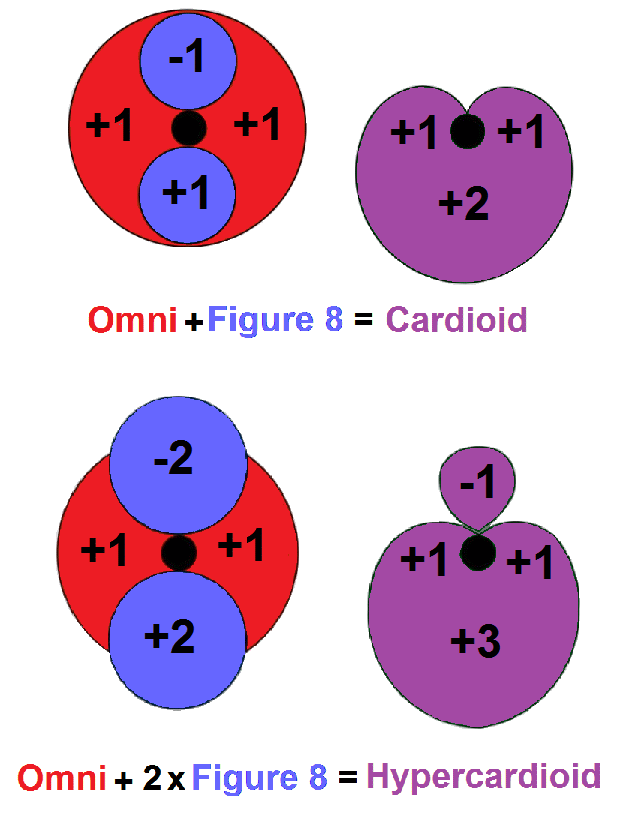
switchable-pattern microphone – a microphone with multiple pickup patterns that can be selected with a switch. These microphones typically have two diaphragms back to back and the signals are electrically combined in various amounts to achieve the desired patterns. (See diagram at right.) For example, with two back-to-back cardioid capsules, you can combine both capsules to get an omnidirectional pattern, combine both with one having a reversed polarity to get a figure 8 patttern, or connect just one to get a cardioid pattern. Sometimes called a multipattern microphone or polydirectional microphone.
Switchcraft Conxall – a company located in Chicago, IL, that manufacture jacks, plugs, and switches for the pro-audio, broadcast, and communications industries. It was founded in 1946 as Switchcraft, Inc. The Raytheon Corporation purchased Switchcraft in 1977. Twenty years later Raytheon sold its interest in Switchcraft to a private equity company. In 1999, Switchcraft acquired Conxall, a manufacturer of circular connectors and cable assemblies. In 2011, Switchcraft Conxall became a part of the Electronic Technologies Group of HEICO.
switched-mode power supply (SMPS) – an electronic power supply that uses a switching regulator to convert electrical power more efficiently than a linear power supply. The pass transistor of an SMPS continually switches between full-on and full-off, spending more time in low-dissipation and less time in high dissipation transitions, thereby reducing wasted energy. The voltage is regulated by varying the ratio of on-to-off time. Switched-mode power supplies have higher power conversion efficiencies and are usually smaller and lighter than a linear supplies. The disadvantages are that they are more complicated and the switching can cause electrical noise if not properly suppressed. Also called a switching-mode power supply, switch-mode power supply, switching power supply,, or switcher.
switcher – see switched-mode power supply.
switching-mode power supply – see switched-mode power supply.
switching power supply – see switched-mode power supply.
switch matrix – an array of switches, usually push buttons, arranged in rows and columns that allows any input bus to be connected to any output bus. Sometimes called a matrix switch.
switch-mode power supply – see switched-mode power supply.
switch trigger – see trigger.
SWL – Sound Wattage Level. See sound power level.
SXSW – South by(X) South West.
symmetrical balanced output – see balanced output.
symmetrical clipping – clipping that occurs evenly on both the positive and negative excursions of a waveform. Amplifiers with symmetrically clipping tend to produce odd harmonics, and a smooth, sustained overdrive, a sound usually preferred by the majority of guitarists. Asymmetrical clipping distortion produces a thin and weak sound, that in extreme cases can sound more like buzzing.
symmetric scale – see diminished scale.
sympathetic vibration – the vibration produced in one object by the vibrations occurring in a nearby object.
symphonist – see Symphonova.
Symphonova – a technology, invented by composer Dr. Shelley Katz, that allows a small chamber-sized orchestra to perform in a small venue and sound like a full-size orchestra playing in a large concert hall. The technology uses a combination of live performers, instruments driven by transducers, room simulation software, and loudspeakers using Layered Sound™ that simulate the acoustics. The virtual instruments are controlled by the symphonist, a conductor wearing a small electronic board that cause the instruments to respond according to typical conductor gestures.
symphony orchestra – see orchestra.
sync – short for synchronization or synchronize.
sync box – slang for sync conversion unit.
sync conversion unit – a device that provides for the synchronization of two or more devices having different sync signals. Also called a sync box (slang).
sync gain – a control on a tape machine used to adjust the playback level when the machine is in the sync mode. Also called sync level.
sync head – (1) The record head on a multitrack tape recorder when it is in sync mode. In this configuration, the record head is used to play back audio from other tracks to be monitored by the musicians as they simultaneously overdub a new track. It is necessary to use the record head in this manner to maintain synchronization as there would be a delay if the playback head were used. After recording, it is important to return to normal mode because the reproduction quality is not as good when using the record head for a function for which it was not designed. (2) A separate head used on some tape machines used to playback a synchronization tone or signal, used to synchronize sound with motion pictures or videotape.
synchronization – (1) The process of running two independent devices in time with one another. (2) The circuits in a multitrack tape recorder in sync mode that allows some tracks to be in playback mode while others are in record mode by using a record head for playback (the sync head). (3) The reproduction of music on a soundtrack of a film or television show that requires a synchronization license. Called sync or synch for short.
synchronization license – a license that grants the rights to use music on a soundtrack of a film or television show. Called a sync license for short. See also mechanical license, performance rights, mechanical rights, and master rights.
synchronizing pulse – see synchronization signal.
synchronization signal – a signal or series of pulses transmitted between two devices to keep them synchronized. Also called a synchronizing signal (sync signal), synchronization pulse (sync pulse), clock signal, clock reference, timing signal, timing pulse, or timebase.
synchronize – (1) To adjust two independent devices to be in time with one another. Called sync for short. (2) To play instruments together in very close timing.
synchronizer – a device that reads time codes recorded on two or more tape machines and adjusts the tape positions and speeds to maintain synchronization.
synchronizing signal – see synchronization signal.
synchronous – a method of digital transmission in which the bit rate of the signal is fixed and synchronized by an external clock. See asynchronous.
sync-latching – a synchronization technique that provides sync signal between devices, but aligns the transport signals (start and stop) to precise musical boundaries, such as the next bar or the beginning of a loop. The term was coined by Olivier Gillet of Mutable Instruments.
sync license – see synchronization license.
sync level – see sync gain.
sync mode – the configuration of a multitrack recorder in which one or more tracks are in playback mode, while others are in record mode, for the purpose of monitoring previously recorded tracks while overdubbing new audio. Also called selective synchronization or sel-sync for short.
syncopation – in music, the displacement of a rhythmic accent from a strong beat onto a weak beat.
sync pulse – see synchronization signal.
sync signal – see synchronization signal.
sync pulse – the signal from a clock used to keep devices synchronized.
sync signal – a signal or pulse sent between two or more devices that allows them to remain in synchronization with one another. Short for synchronization signal. Also called a clock signal.
SyncStation – see Nuendo SyncStation.
sync tone – see tape sync or 2-pop.
sync track – a track on a multitrack recorder used for recording a sync tone or SMPTE time code to enable audio tracks to synchronize with sequencer tracks. It can also be used to synchronize two audio tape recorders or an audio recorder and a video recorder.
syncword – a sequence of bits within the SMPTE time code that indicates an end of frame.
synth – short for synthesizer.
synthesis – see sound synthesis.
synthesize – to create sounds electronically by combining or modifying various sounds and envelopes of sounds to produce new sounds, as opposed to sampling an actual sound of an instrument.
synthesized analog – see class D amplifier.
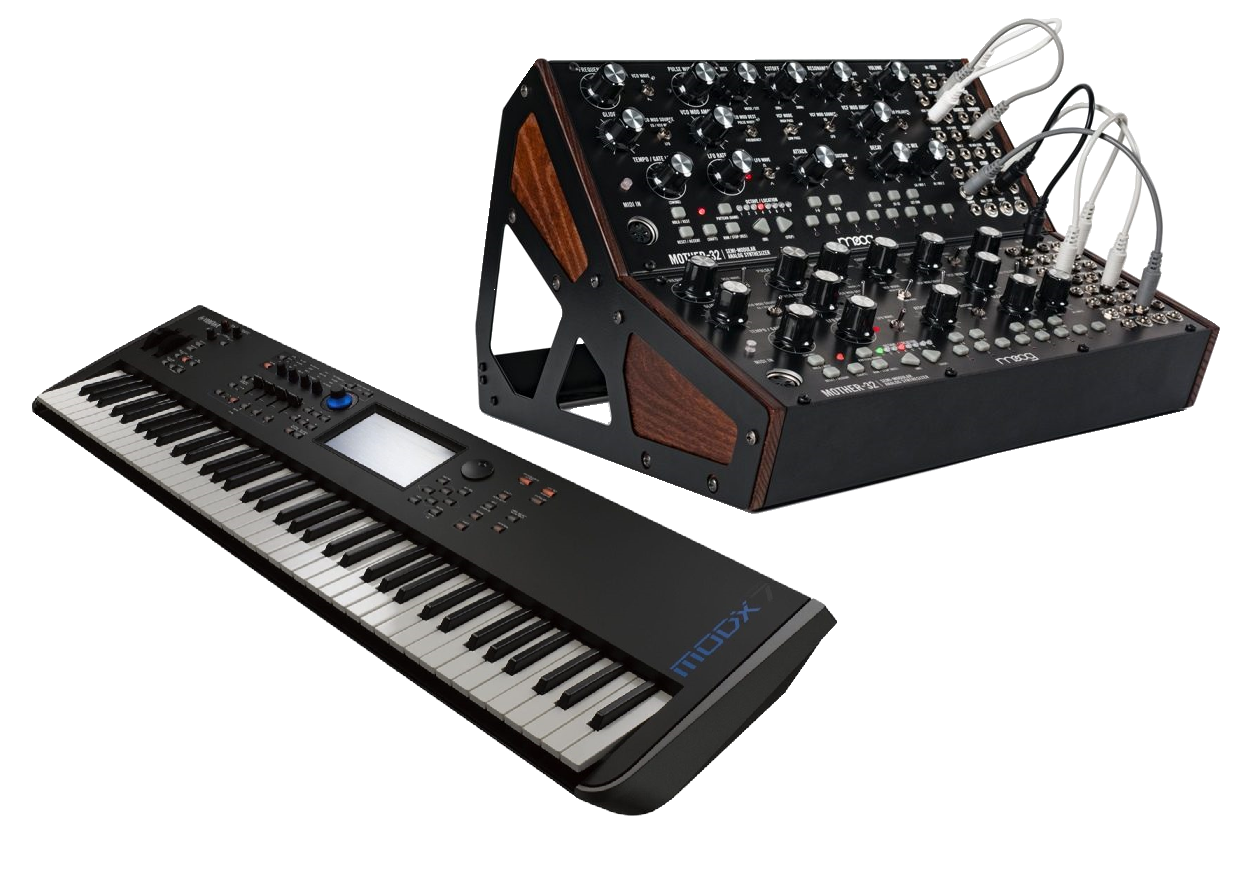
Keyboard Synthesizer (bottom)
synthesizer – (1) A musical instrument that creates sounds electronically to emulate other instruments or to create completely artificial sounds. They can be either analog or digital. An analog synthesizer uses a voltage-controlled oscillator (VCO) to generate a waveform, a voltage-controlled filter (VCF) to remove various frequencies, and a voltage-controlled amplifier (VCA) to vary the attack and decay characteristics. (See ADSR.) A digital synthesizer uses digital signal processing (DSP) techniques to create sounds. A digital synthesizer uses a digitally controlled oscillator (DCO), digitally controlled filter (DCF) and digitally controlled amplifier (DCA) to perform the same functions as their analog couterparts. Sometimes called a hardware synthesizer to distinguish it from a software synthesizer. Synthesizers are sometimes classified as modular or semi-modular. A modular synthesizer has a case or frame into which various modules can be inserted and are usually connected together with patch cords. Such a system may include modules from different manufacturers, as long as they have the same electrical specifications and fit the case. A semi-modular synthesizer is a collection of modules from a single manufacturer that are usually pre-wired, but the user usually is allowed to connect the modules in different orders. A keyboard synthesizer has a piano-style keyboard to select and play various notes. Called a synth for short. (2) A frequency synthesizer.
synthetic stereo – the process of using a combination of reverb and other psychoacoustic effects to convert a mono recording into a somewhat realistic sounding stereo signal. Also called stereoizing.
syntonic comma – the small interval (a comma) between the same note being tuned using two different tuning systems. The syntonic comma is sometimes called a comma of Didymus because it is the amount by which the Roman musician Didymus corrected the major third using Pythagorean tuning (having a frequency ratio of 81:64 or about 407.82 cents) to the major third using just intonation (ratio of 5:4 or about 386.31 cents), a difference of about 21.51 cents. Two notes with that small interval would sound different from each other even to untrained ears, but most likely would be close enough to sound like out-of-tune versions of the same note. Also known as the chromatic diesis, comma of Didymus, Ptolemaic comma, or diatonic comma.
Sysex – see system exclusive.
system exclusive (SysEx or Sysx) – a MIDI message that only the device of a particular manufacturer can use and understand. The MIDI standard allows manufacturers to define their own specific message formats. Unlike other MIDI message formats, sysex messages can be variable in length and contain an ID byte that identifies the manufacturer.
system noise) – the total noise produced by a tape recording system including the tape noise. See also equipment noise.
Sysx – see system exclusive.
Note: We believe this is the largest dictionary (glossary) of terms specific to usage within the recording industry that is currently available on the internet, with more than 8,800 entries, nearly 800 illustrations, and dozens of tables. Some of the terms have different or additional meanings in other situations, especially within the electronic, automotive, scientific, and computer industries. Of necessity there are obvious overlaps into other fields such as music, electronics, and computers, but such excursions are limited to information deemed pertinent to the knowledge required to operate and/or participate effectively in the workings of a recording studio. Also included are terms related to sound reinforcement (live performances) including wireless microphone technology because a working knowledge of that terminology is necessary for recording at live performance venues. Because recording studios also record audio for video and motion pictures (films), some terminology from those fields is included. Some scientific terms are included because they help explain studio terminology. For example, electromagnetism explains how microphones, loudspeakers, and guitar pickups work. Knowledge of radio waves and the radio frequency spectrum is needed to explain wireless devices. Any trademarks or trade names mentioned belong to their respective owners. The information contained in this dictionary is believed to be accurate at the time of publication. This information is subject to change without notice. The information was obtained from and cross-checked with a variety of sources that are believed to be reliable. However, Los Senderos Studio, LLC does not guarantee the accuracy or completeness of the information contained herein. Please contact us to report any errors, omissions, discrepancies, or broken links. Los Senderos Studio shall not be responsible for any consequences or damages arising out of the use of this information. Nothing in this glossary should be interpreted as legal advice. For a glossary providing information on legal and business matters for musicians, we suggest you consult Musicians Business Dictionary.
A note on alphabetical order: The terms in this glossary are alphabetical without regard to spaces and punctuation. For example, AM Radio follows amplitude. While this may seem to be at odds with other conventions, it eliminates confusion with words such as pickup, which is sometimes written as pick up or pick-up. In addition, all symbols such as &, -, or / are ignored. The entries on the number page (0-9) are listed in increasing value within each digit. For example, all of the entries beginning with 1 are listed before those starting with 2. For Greek letters (α-ω), the entries are in Greek alphabetical order.


